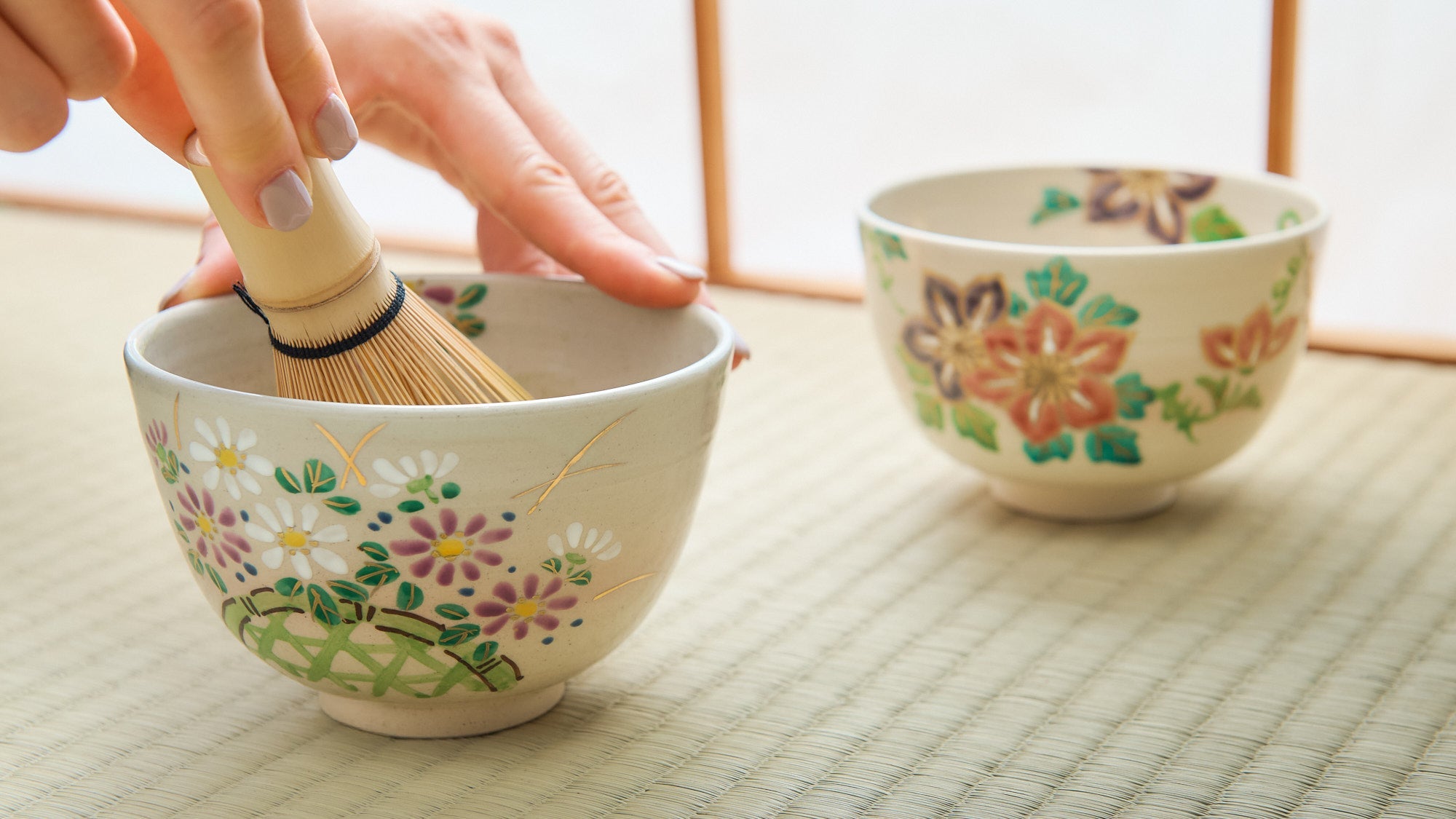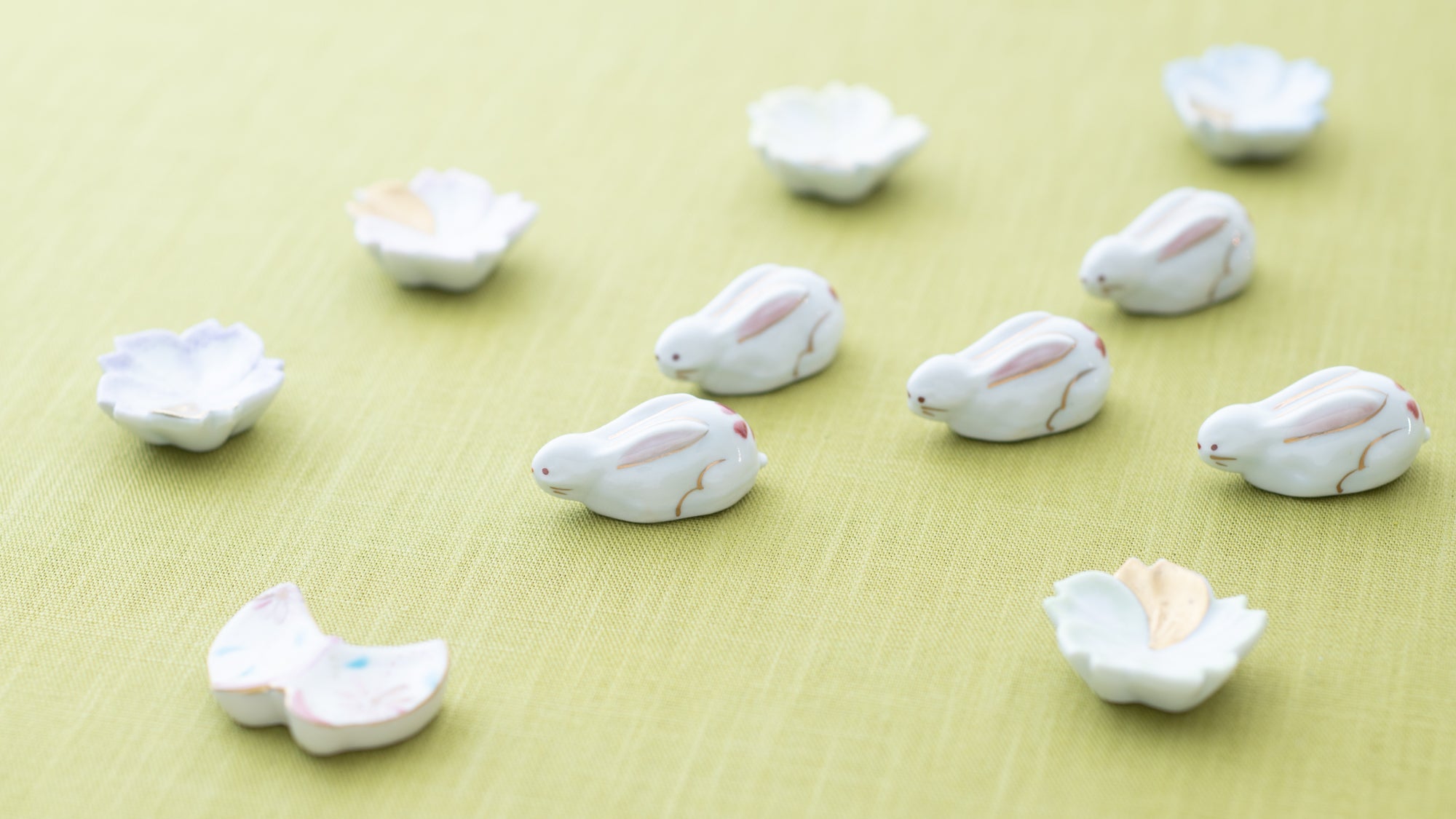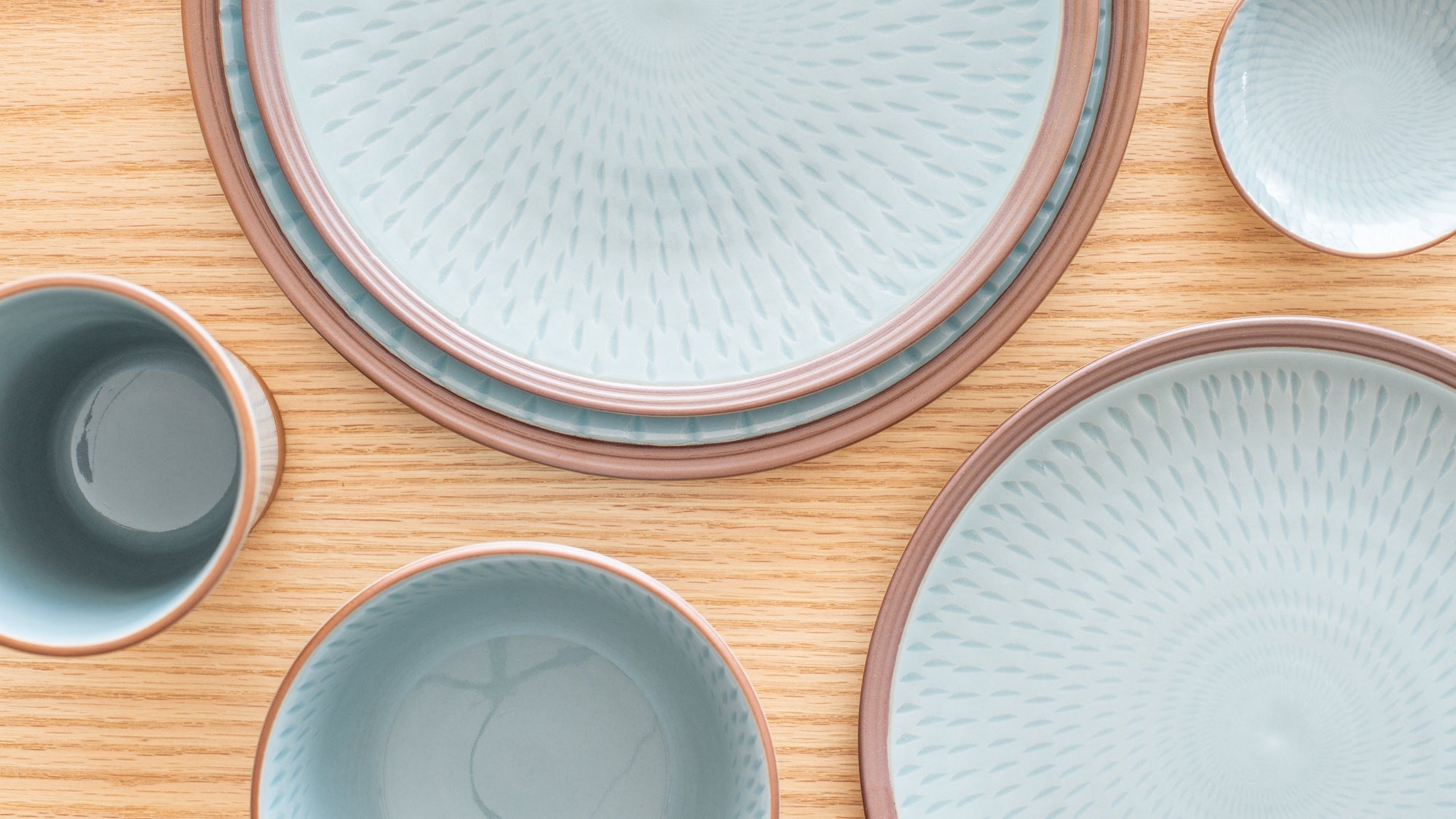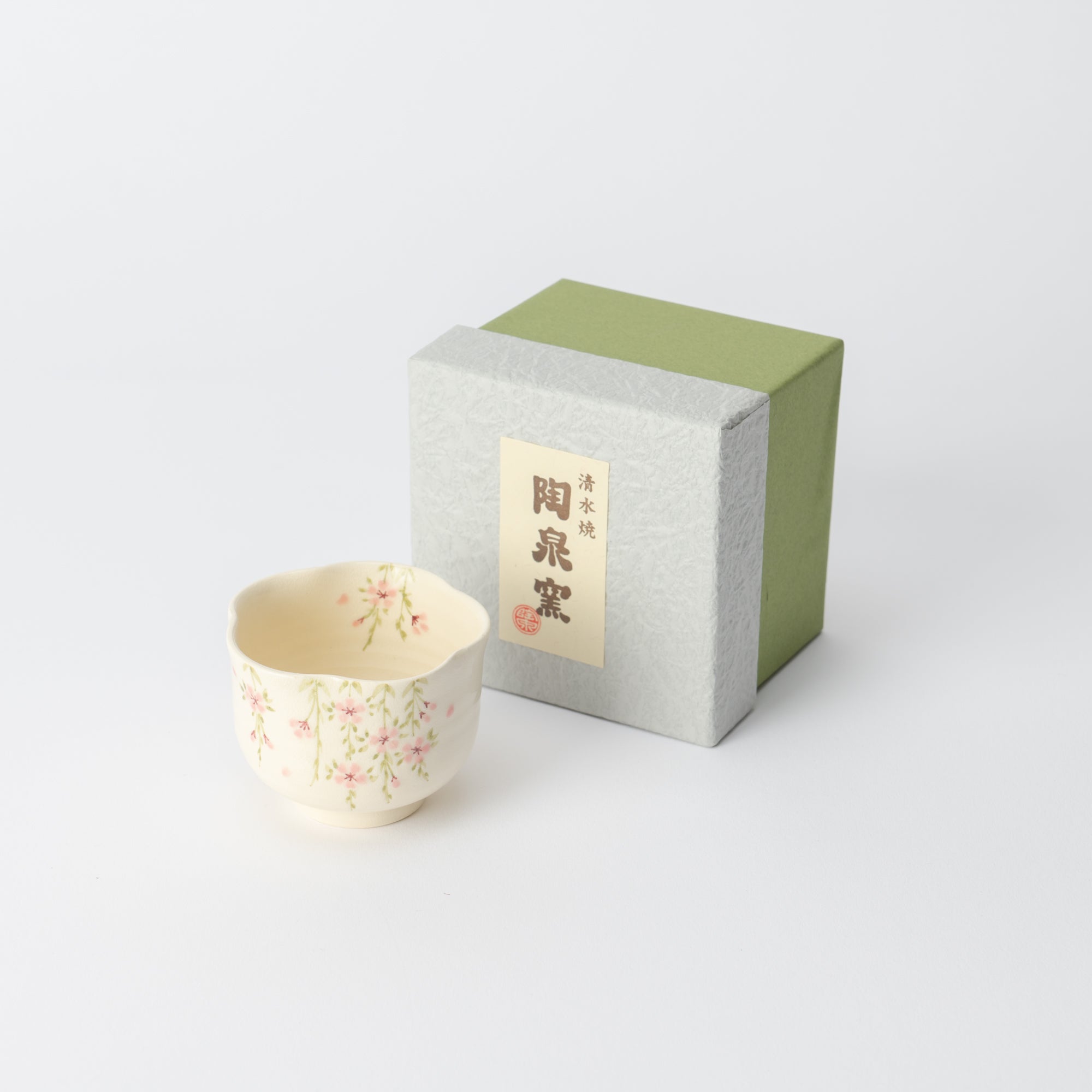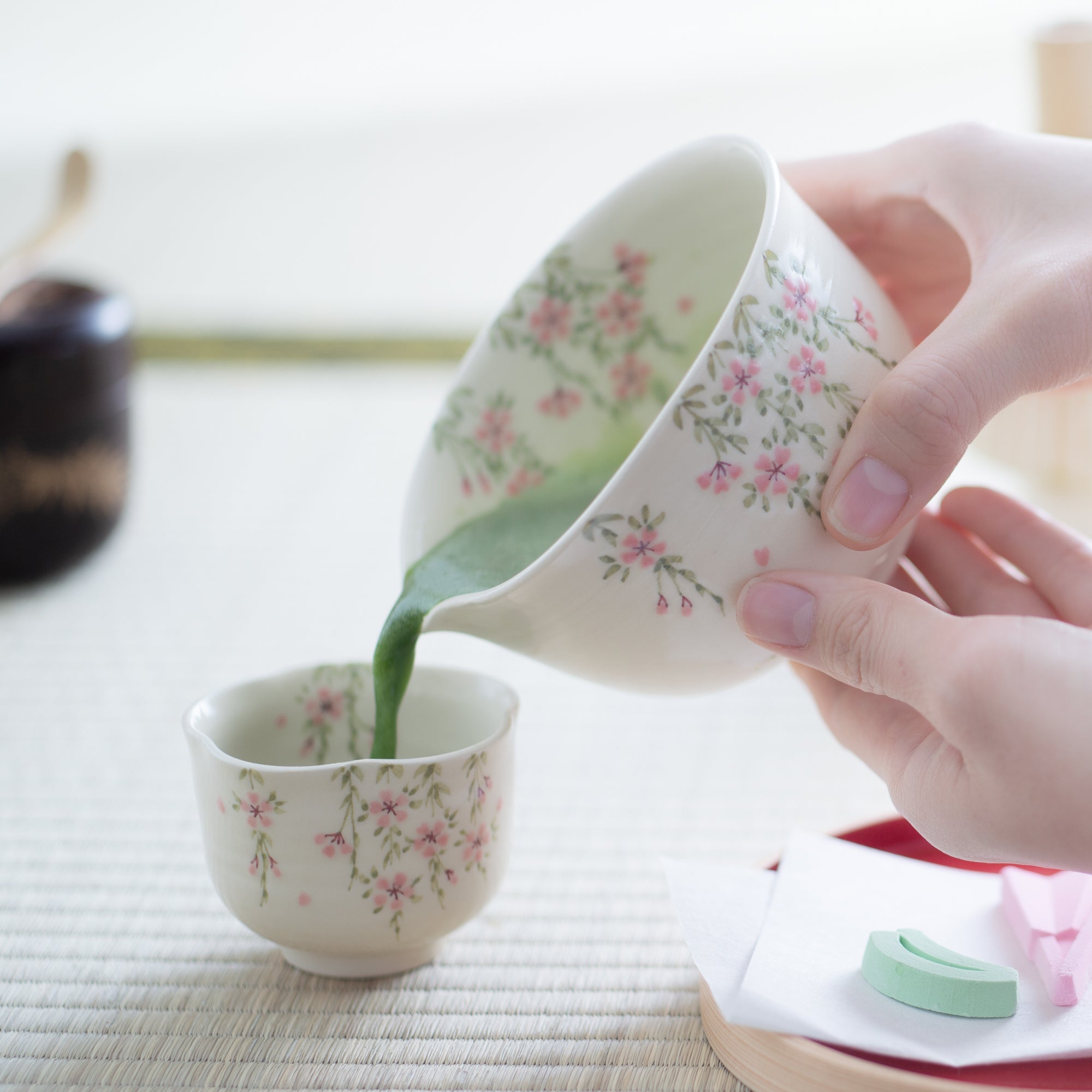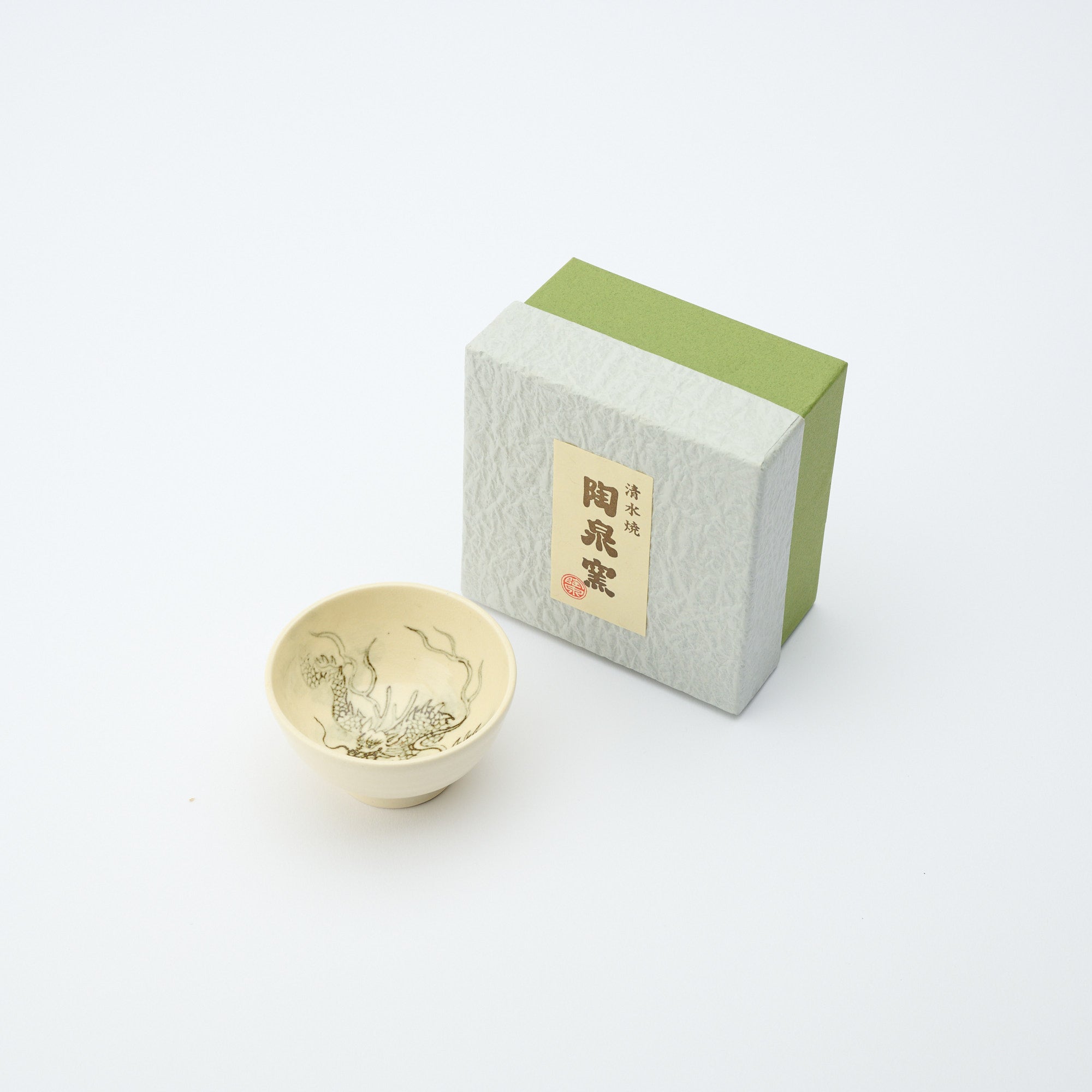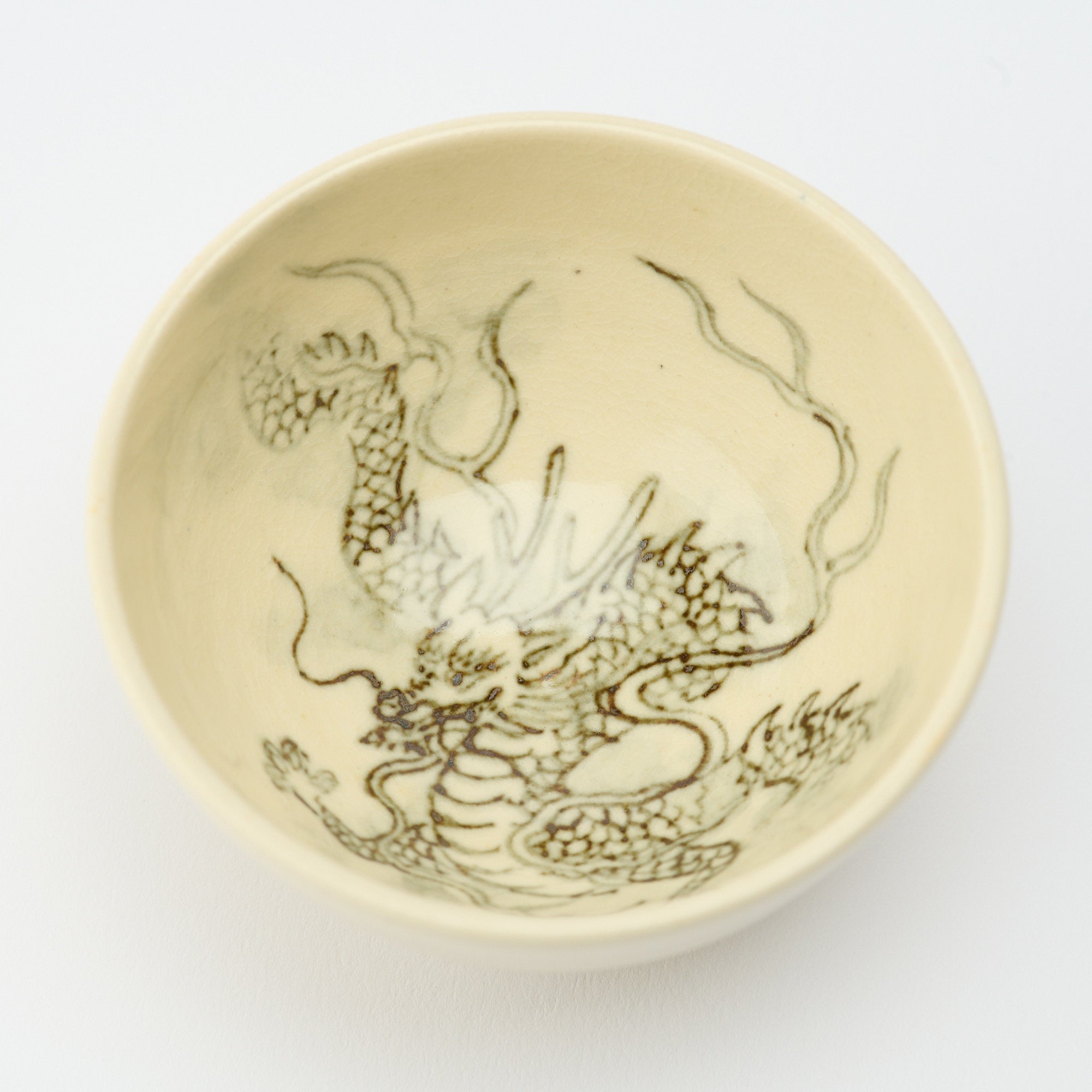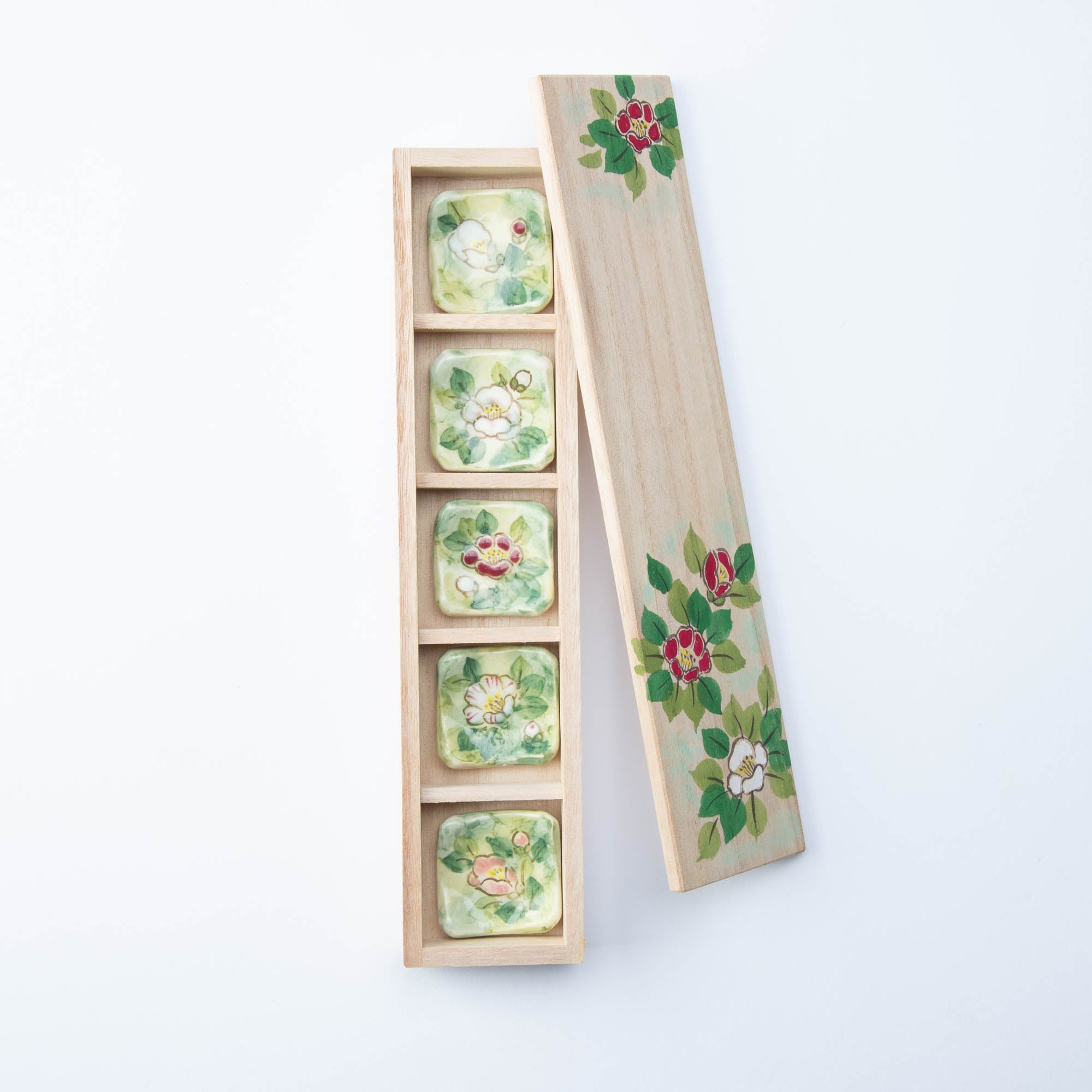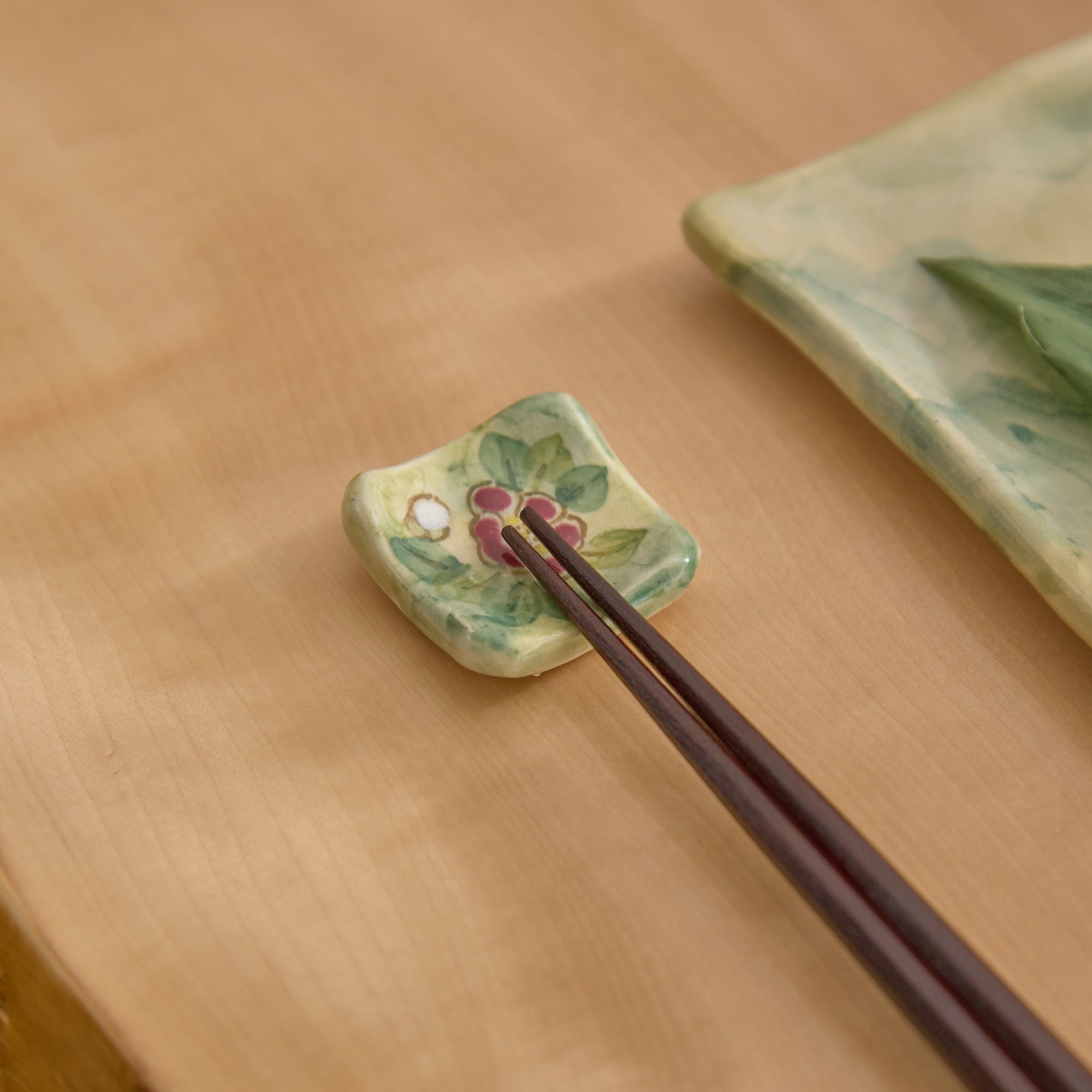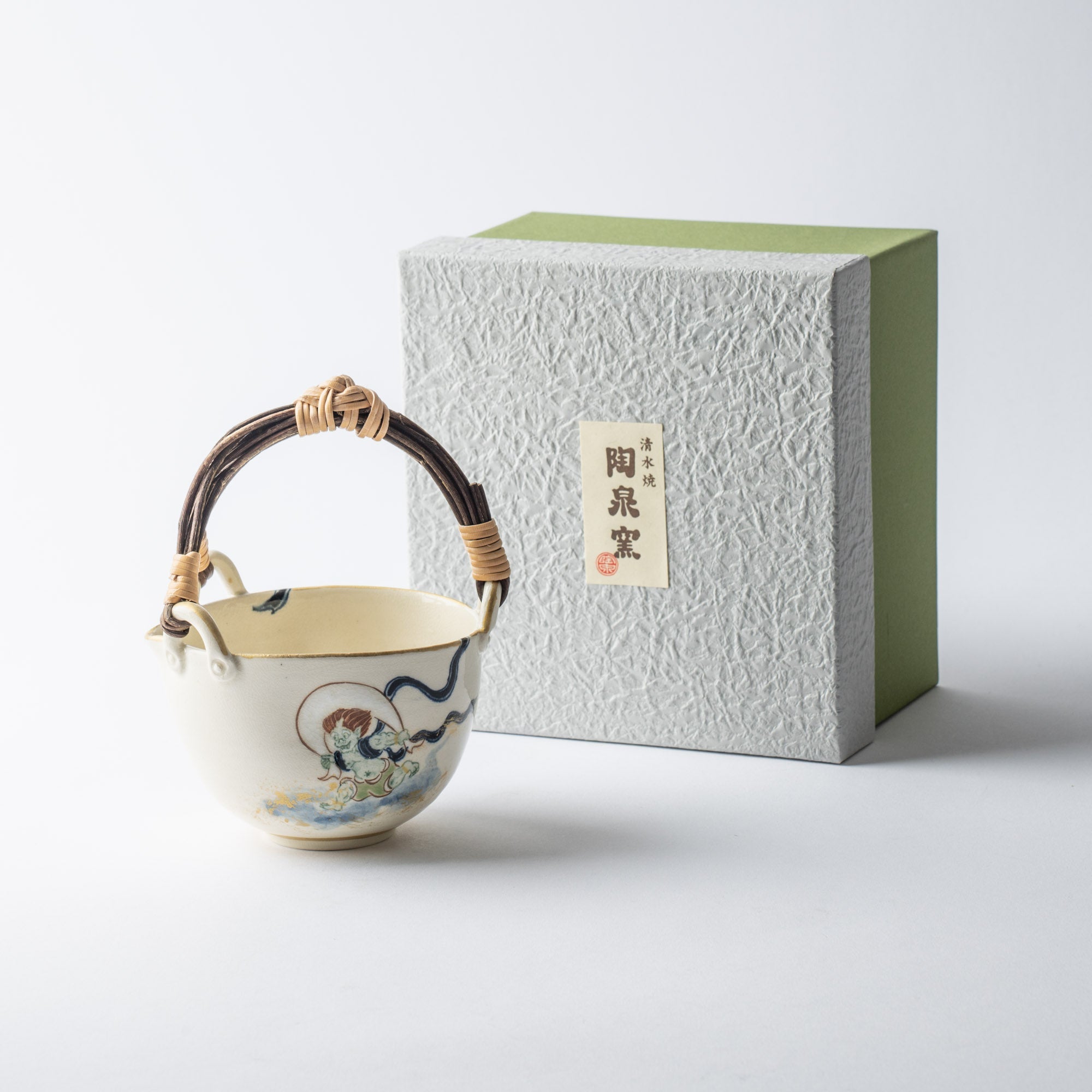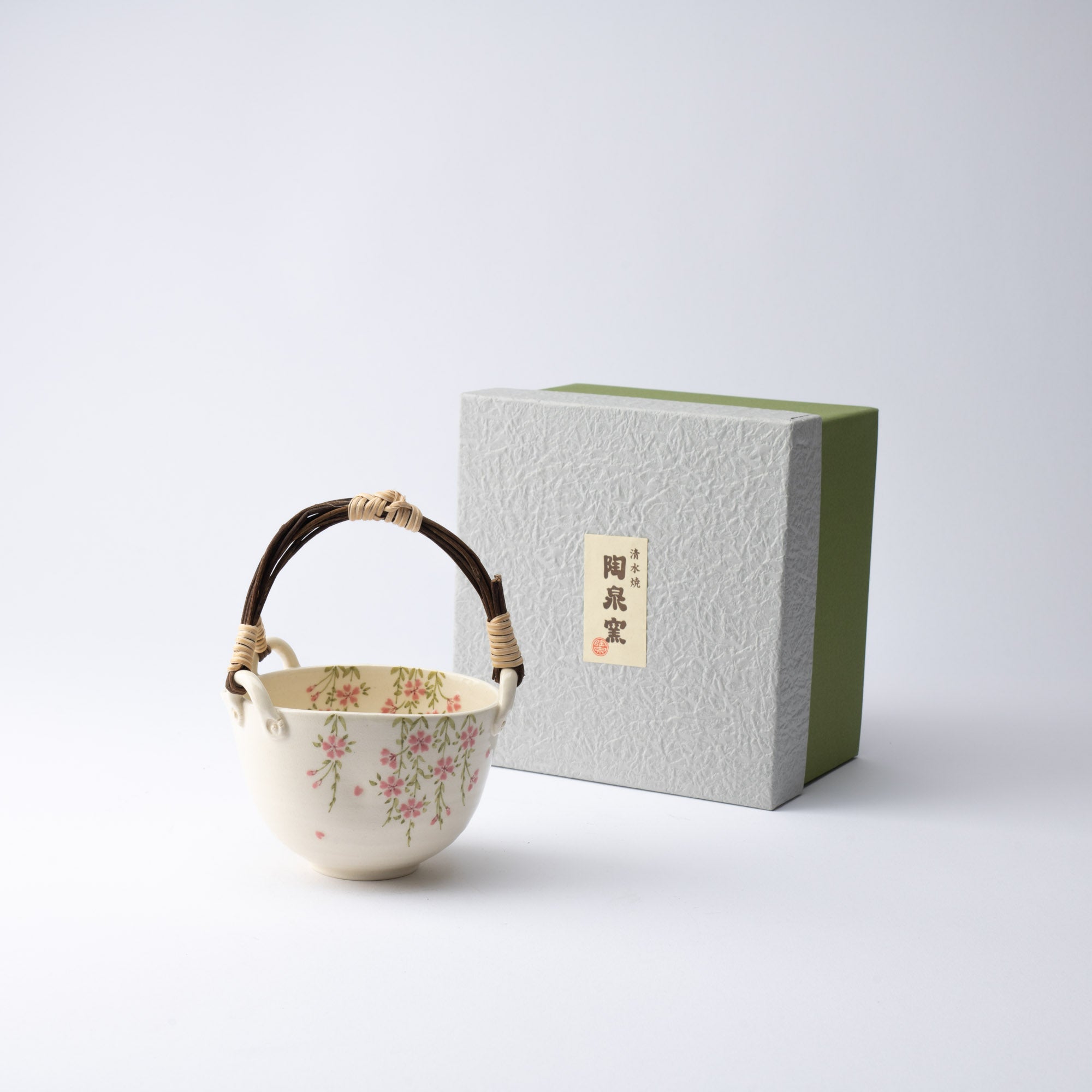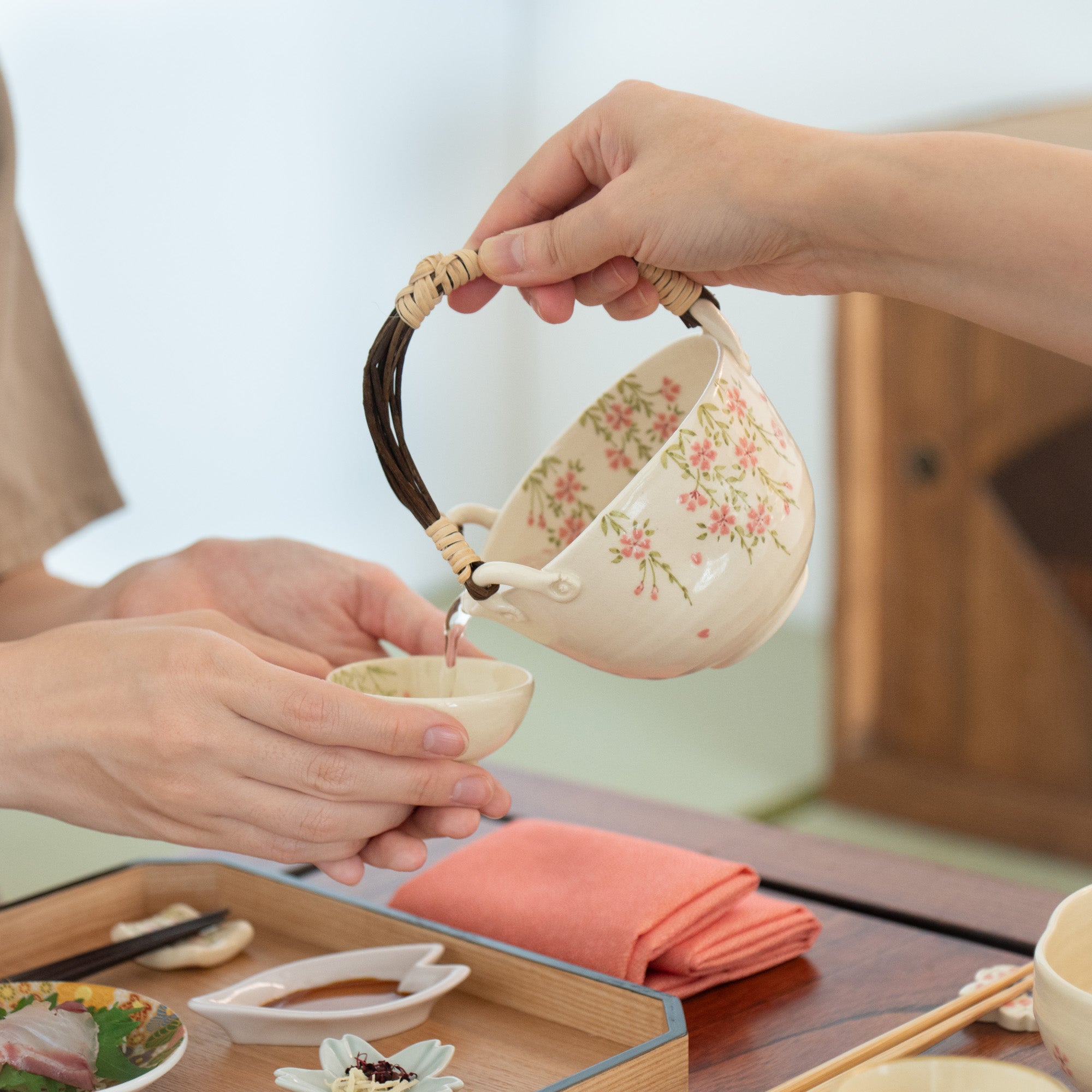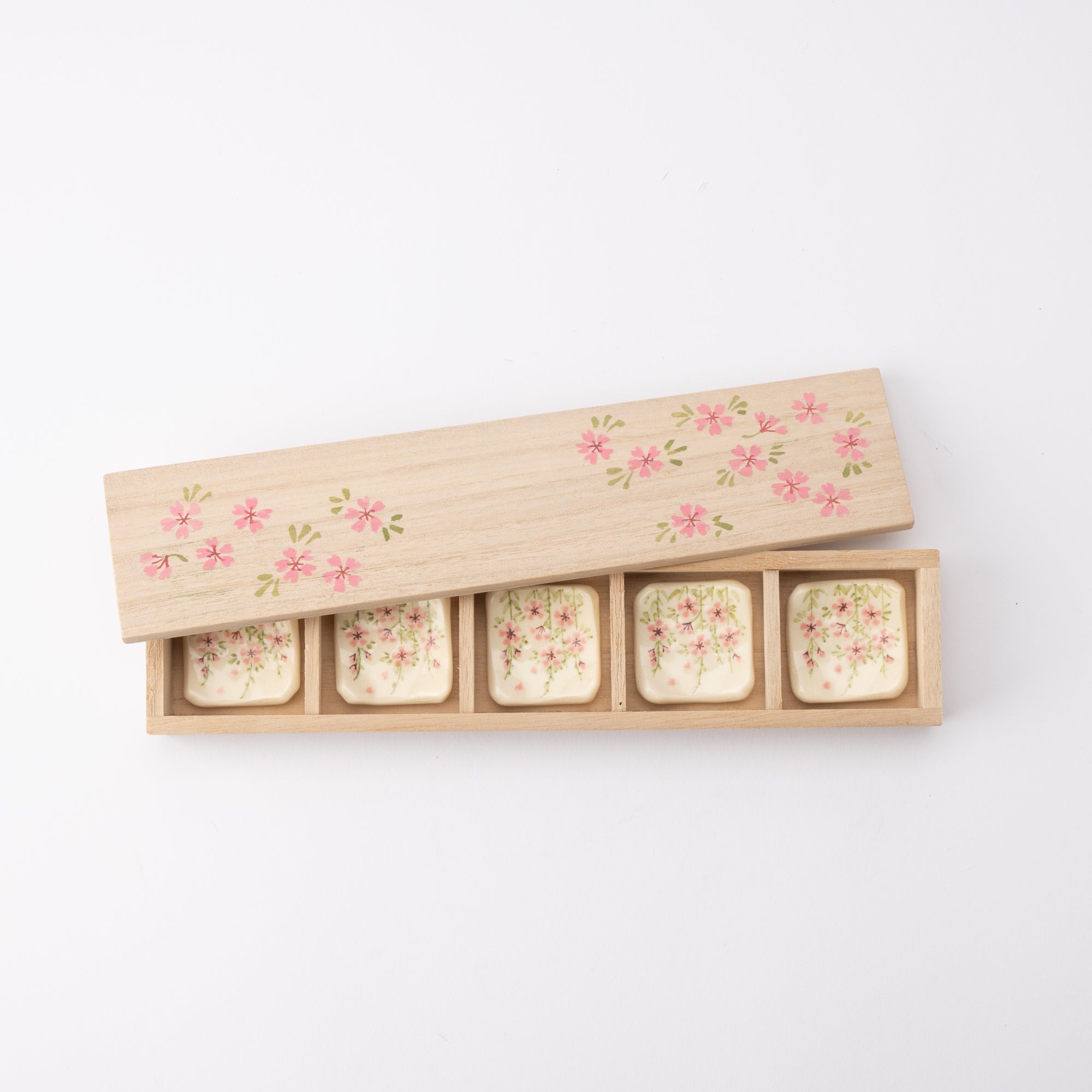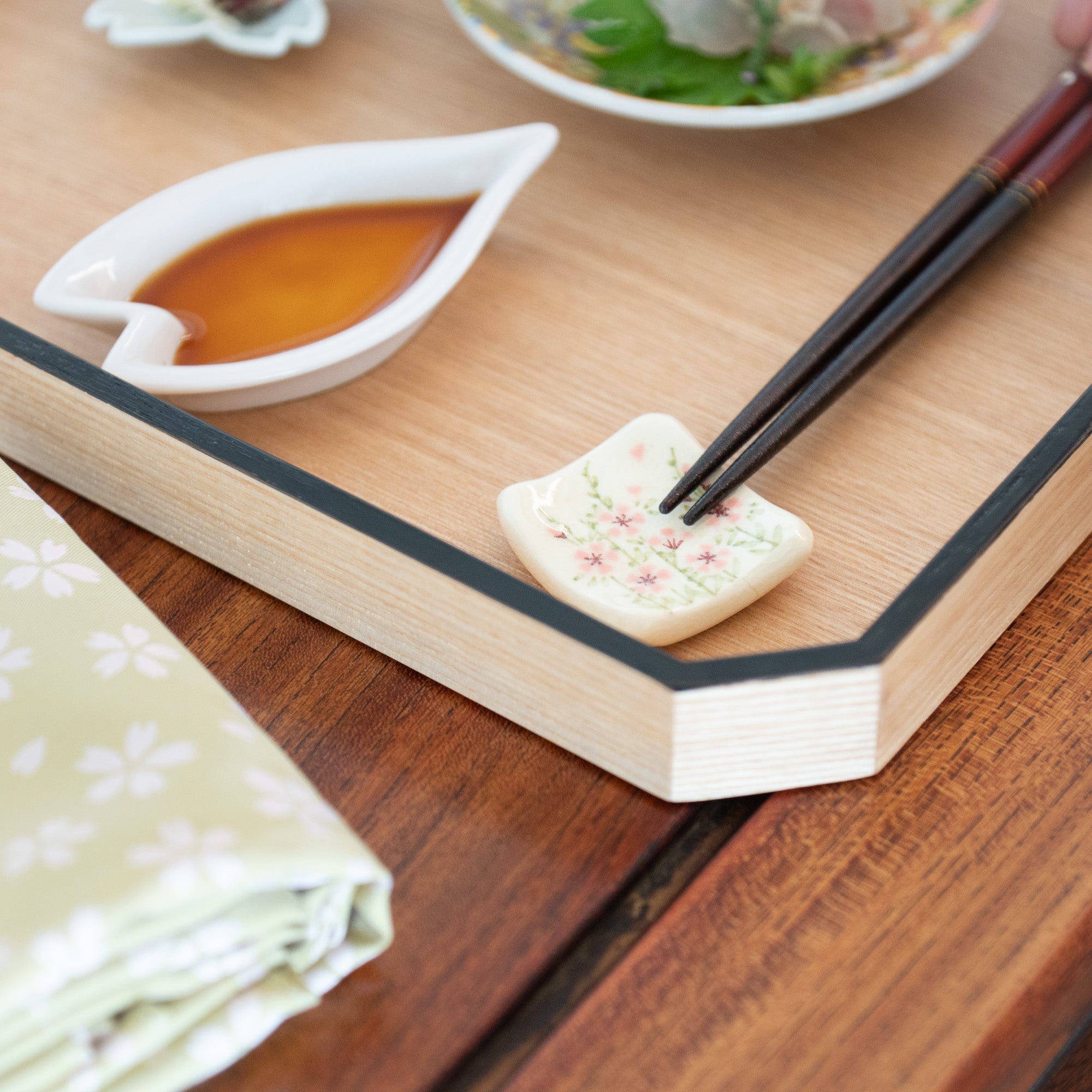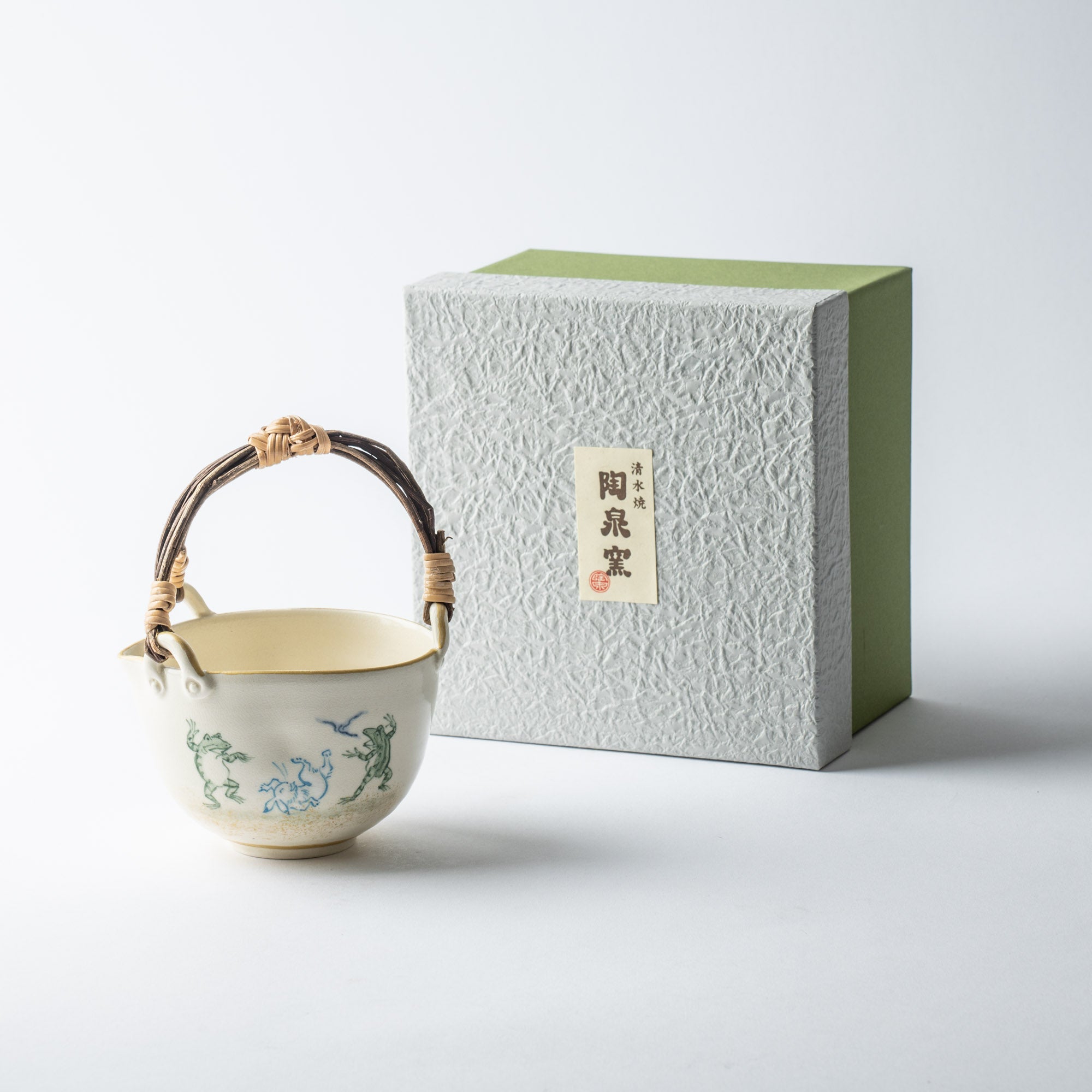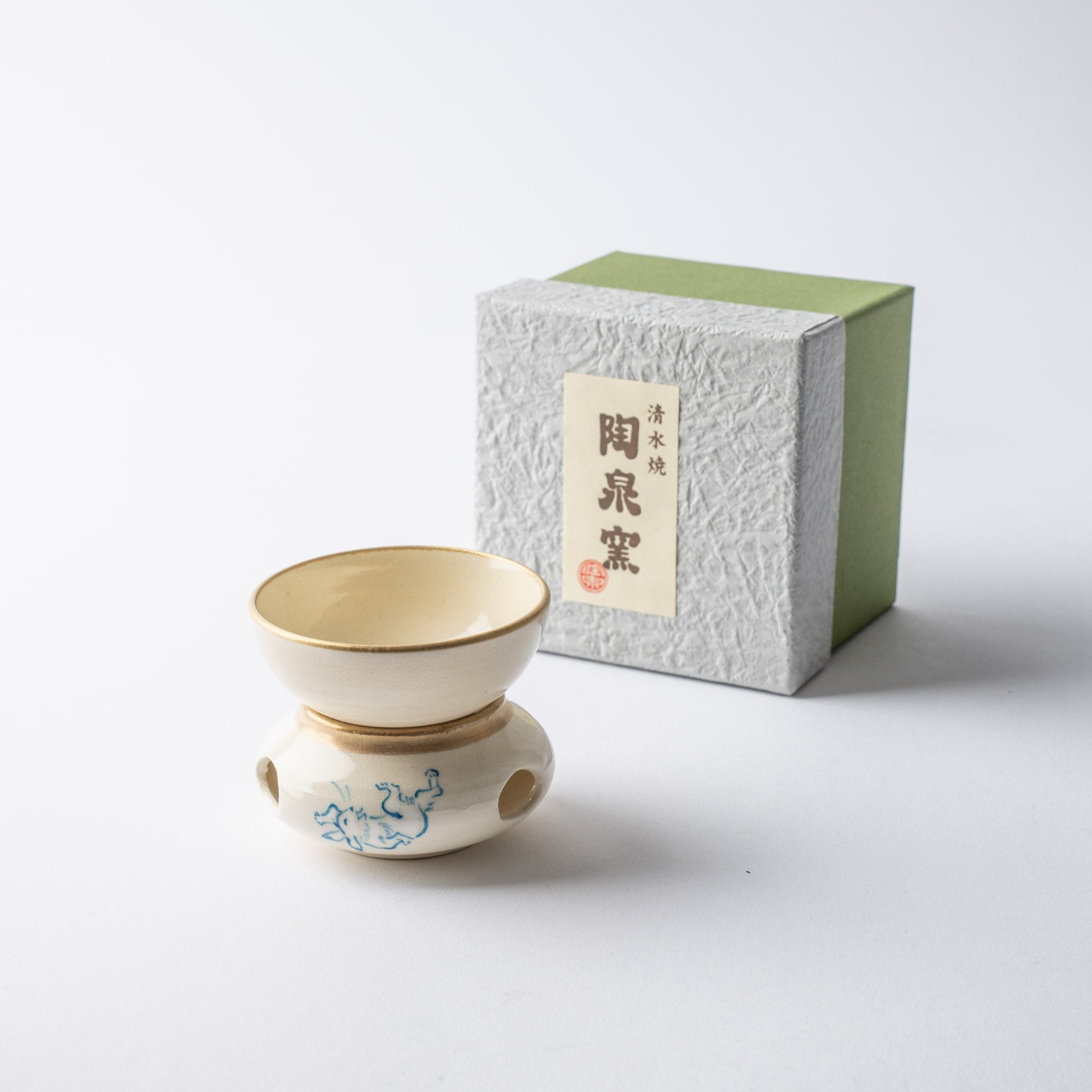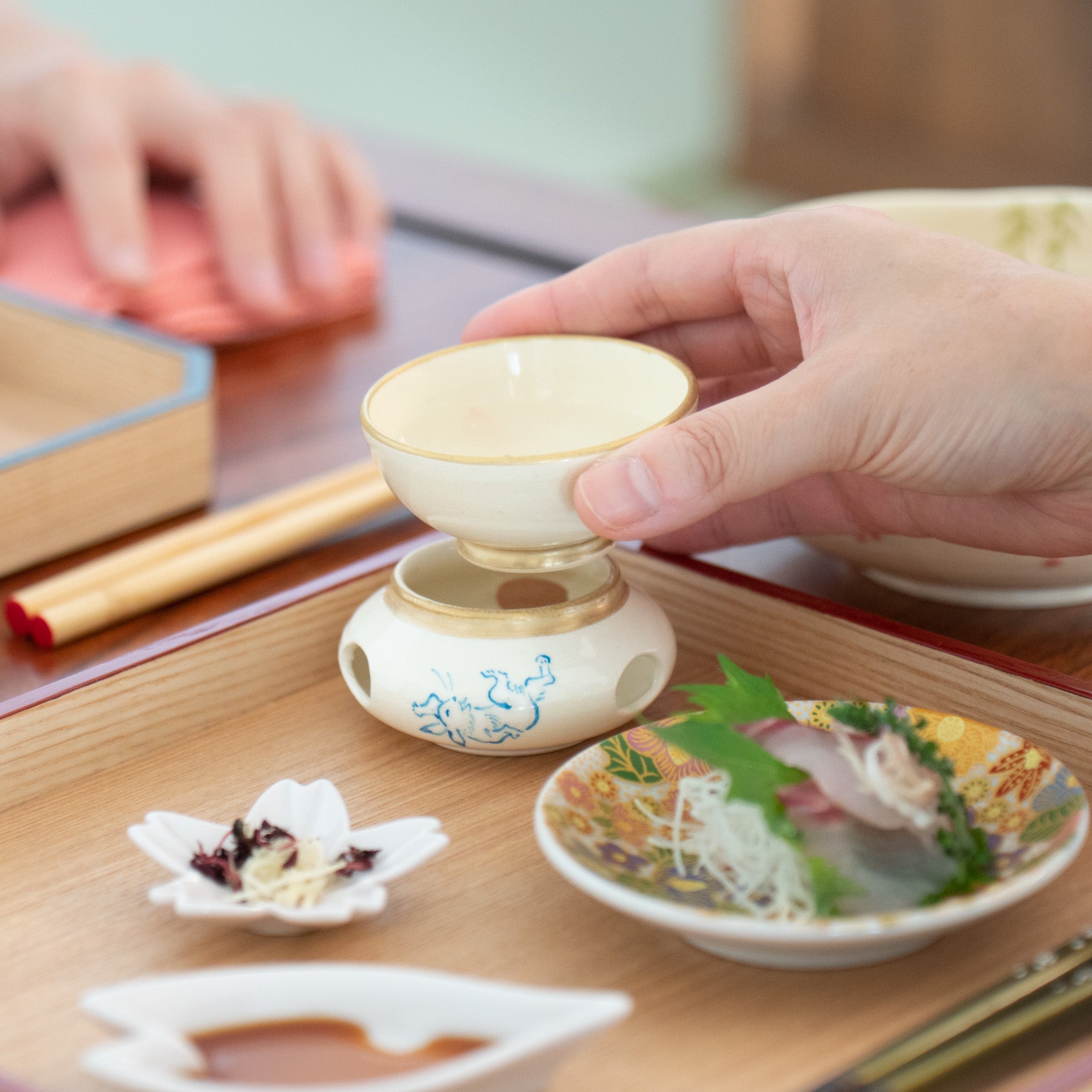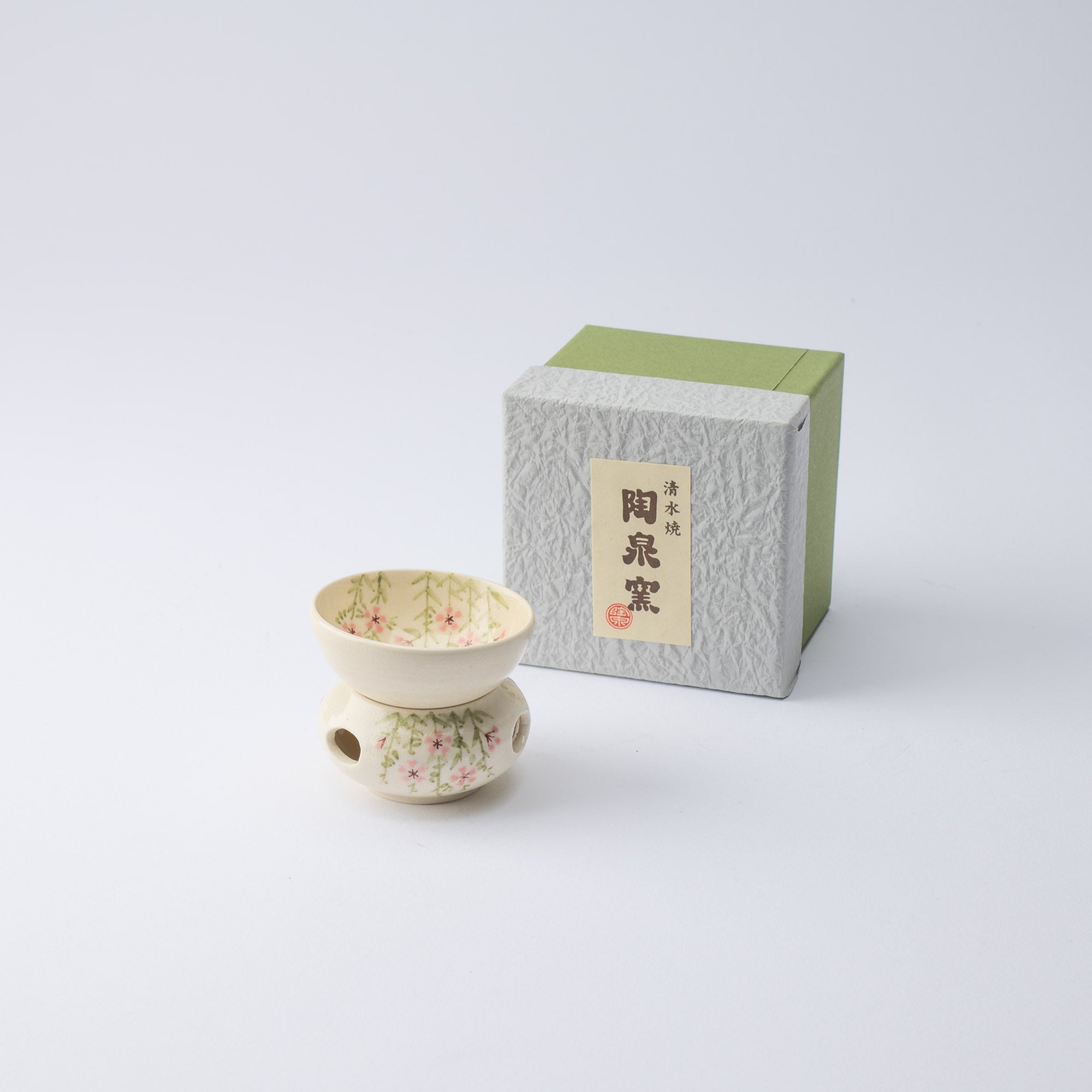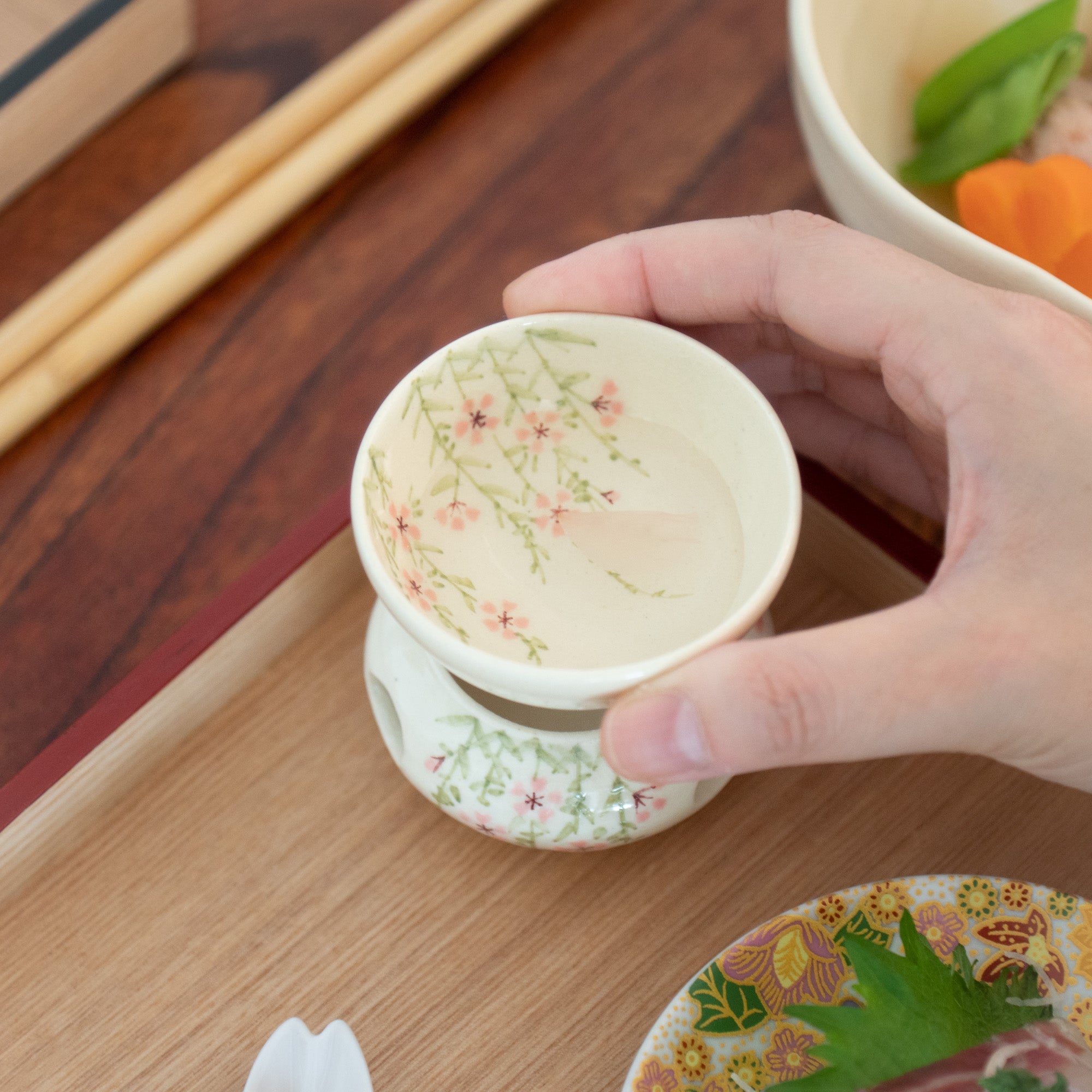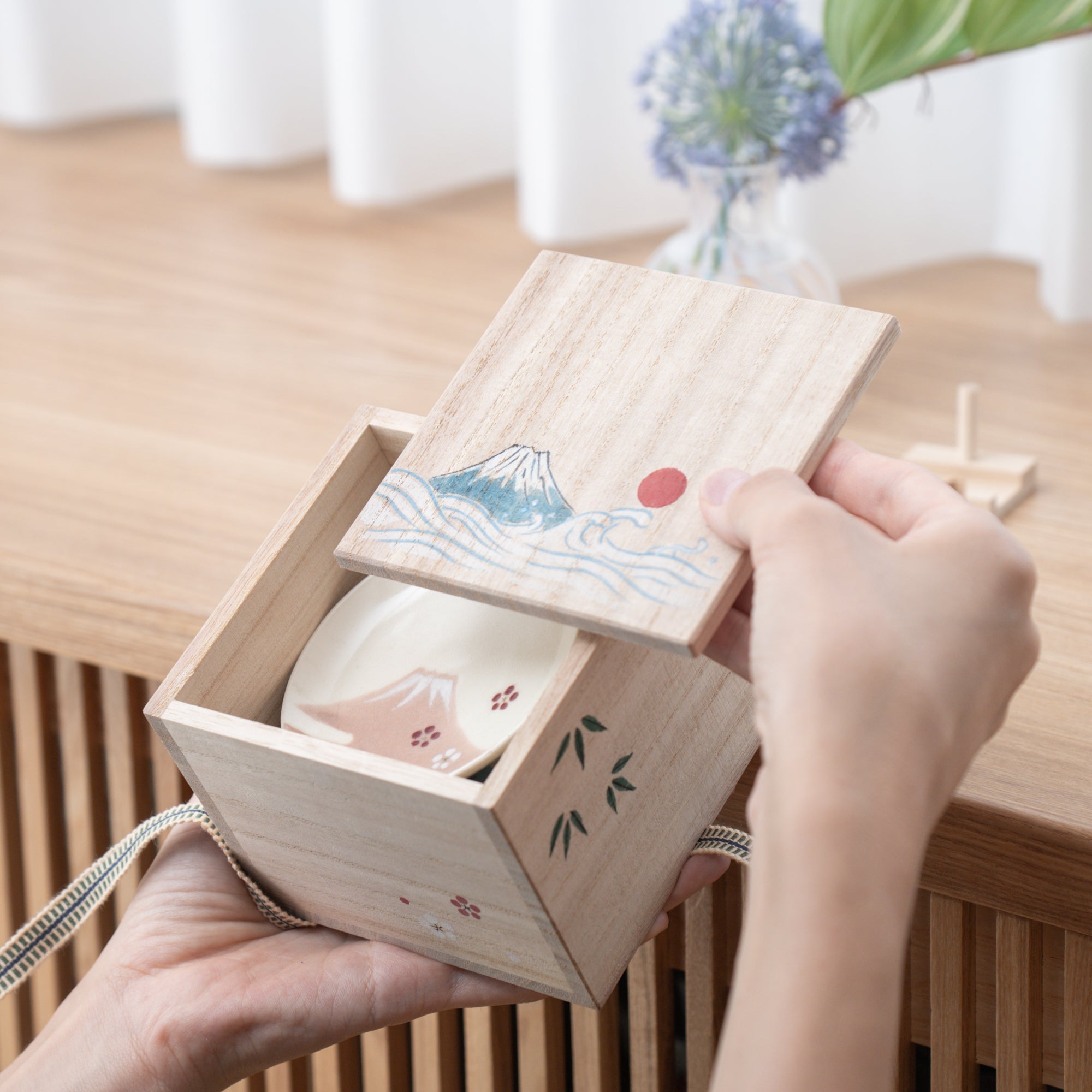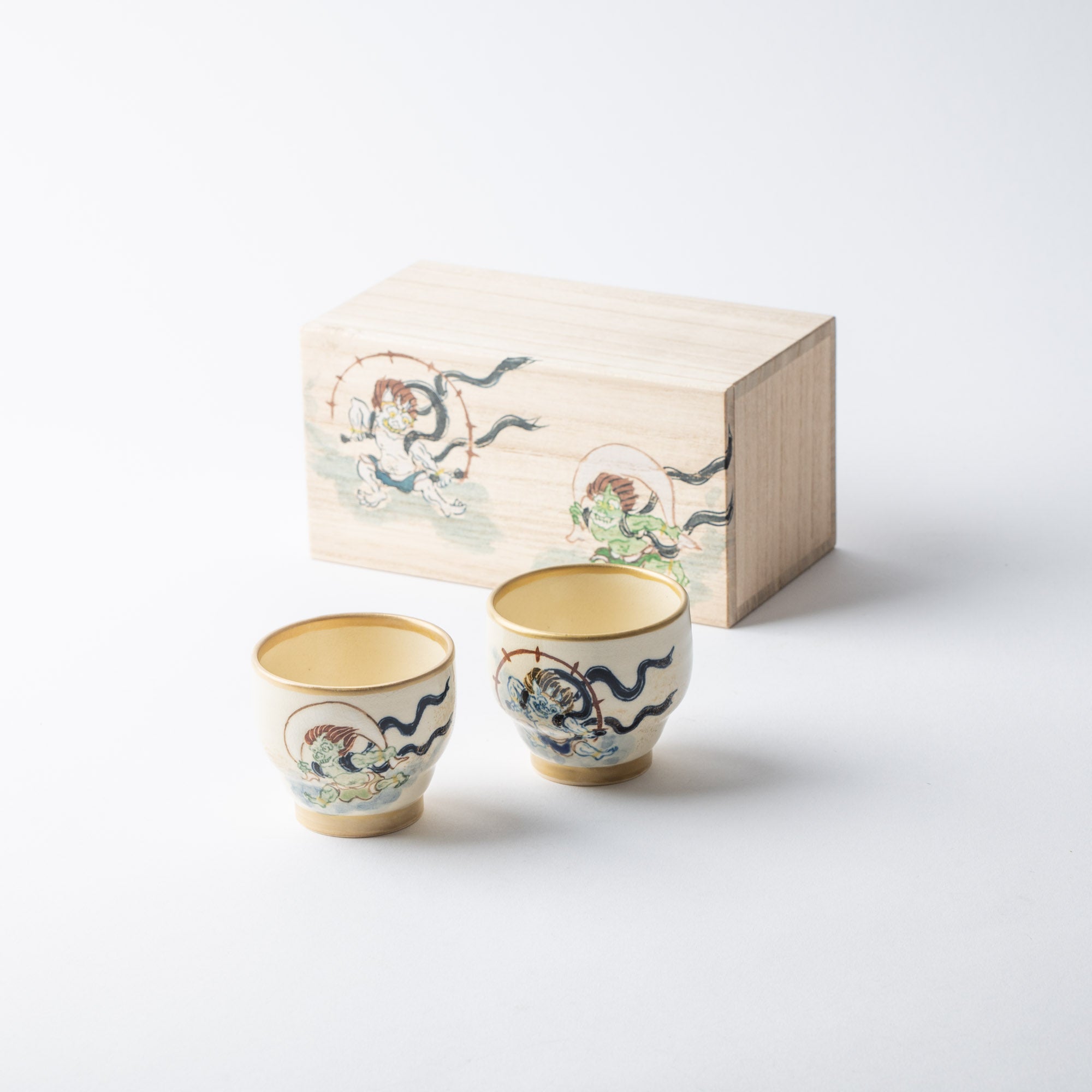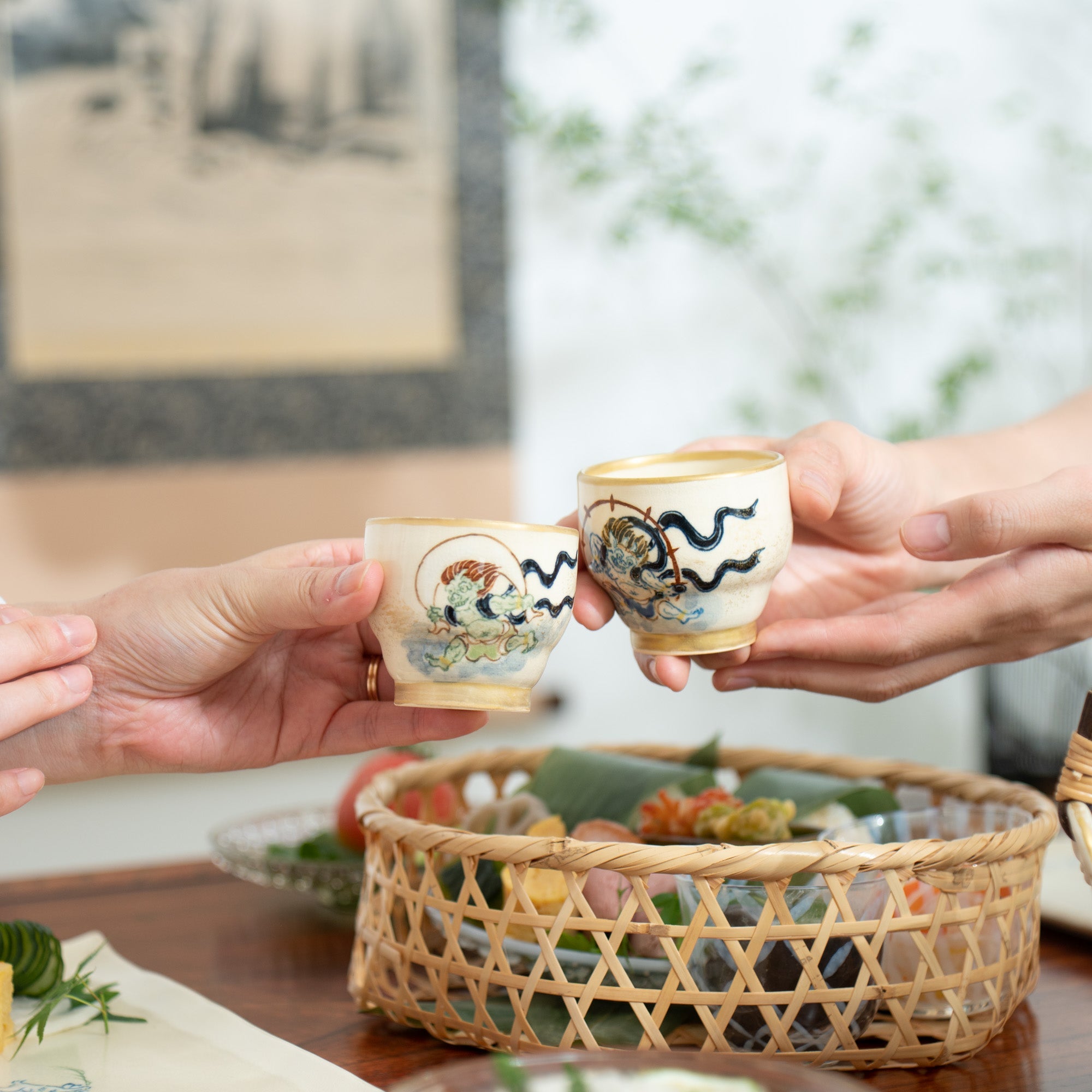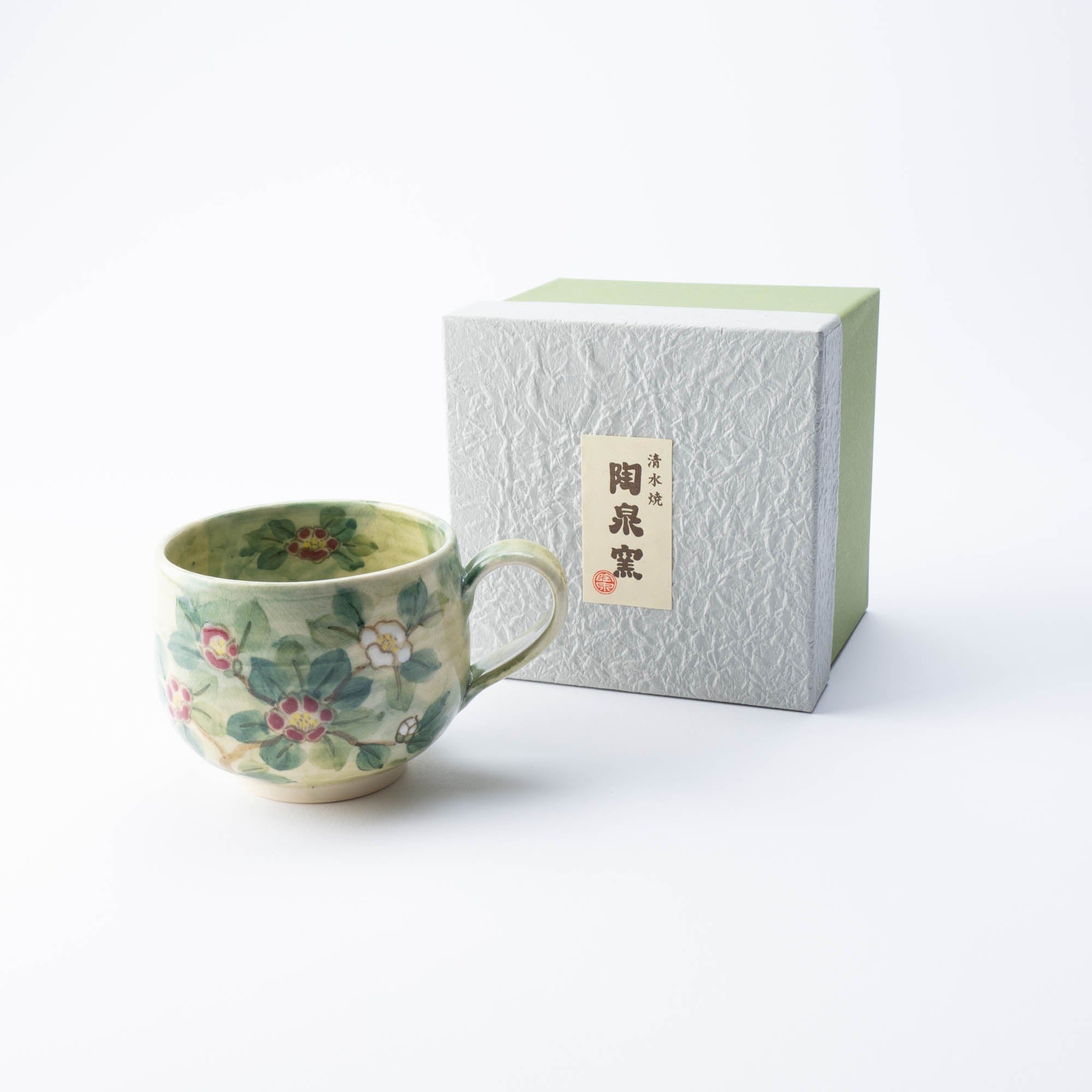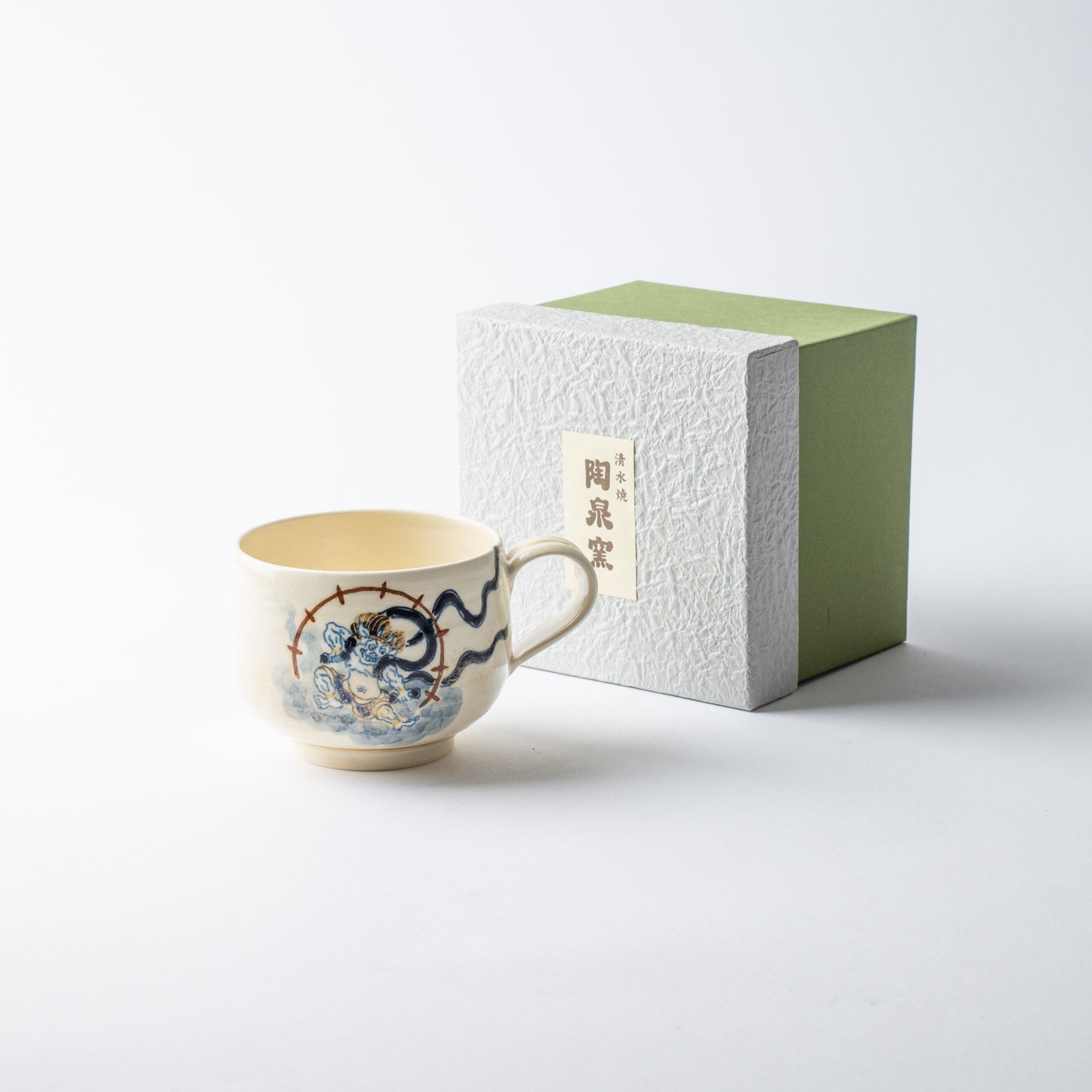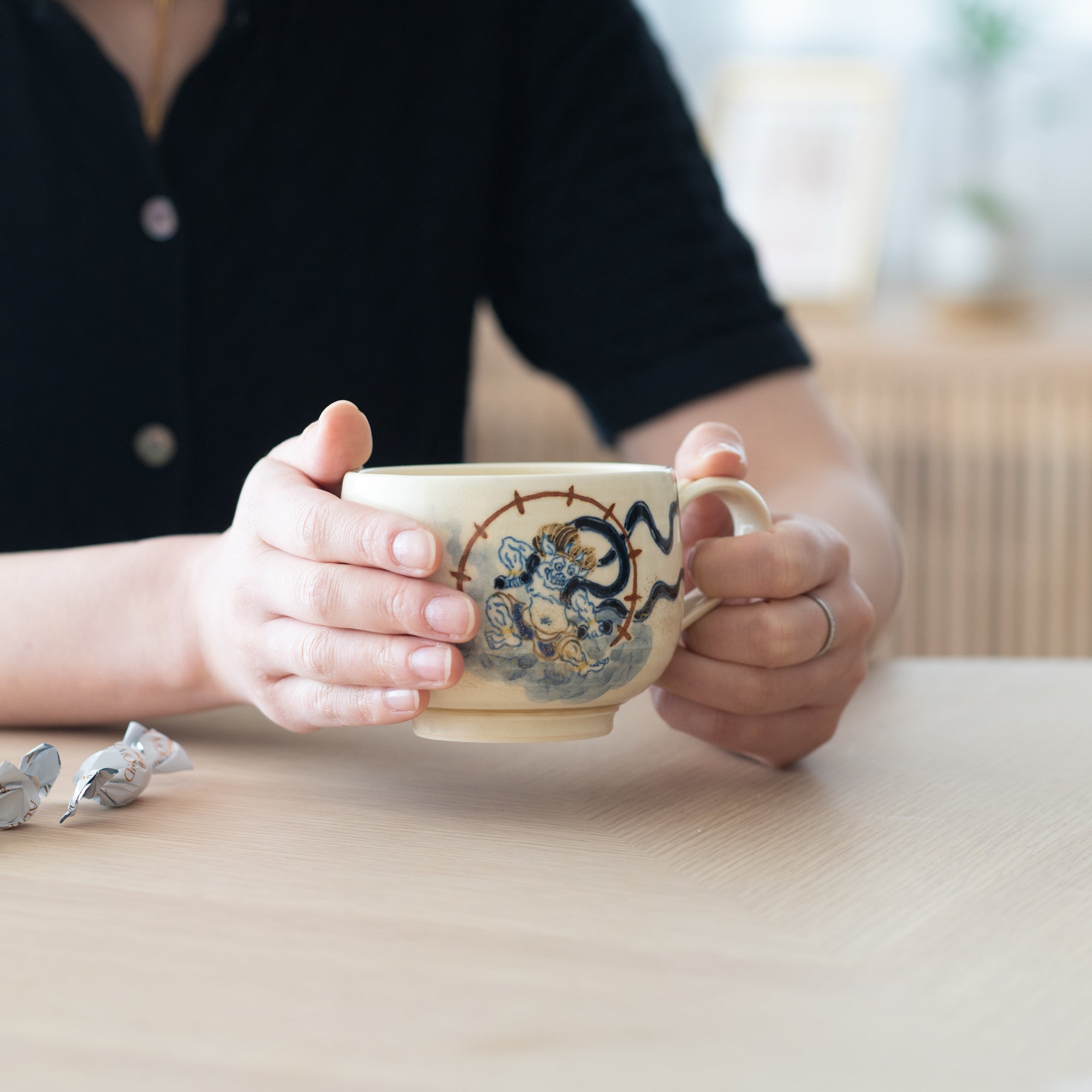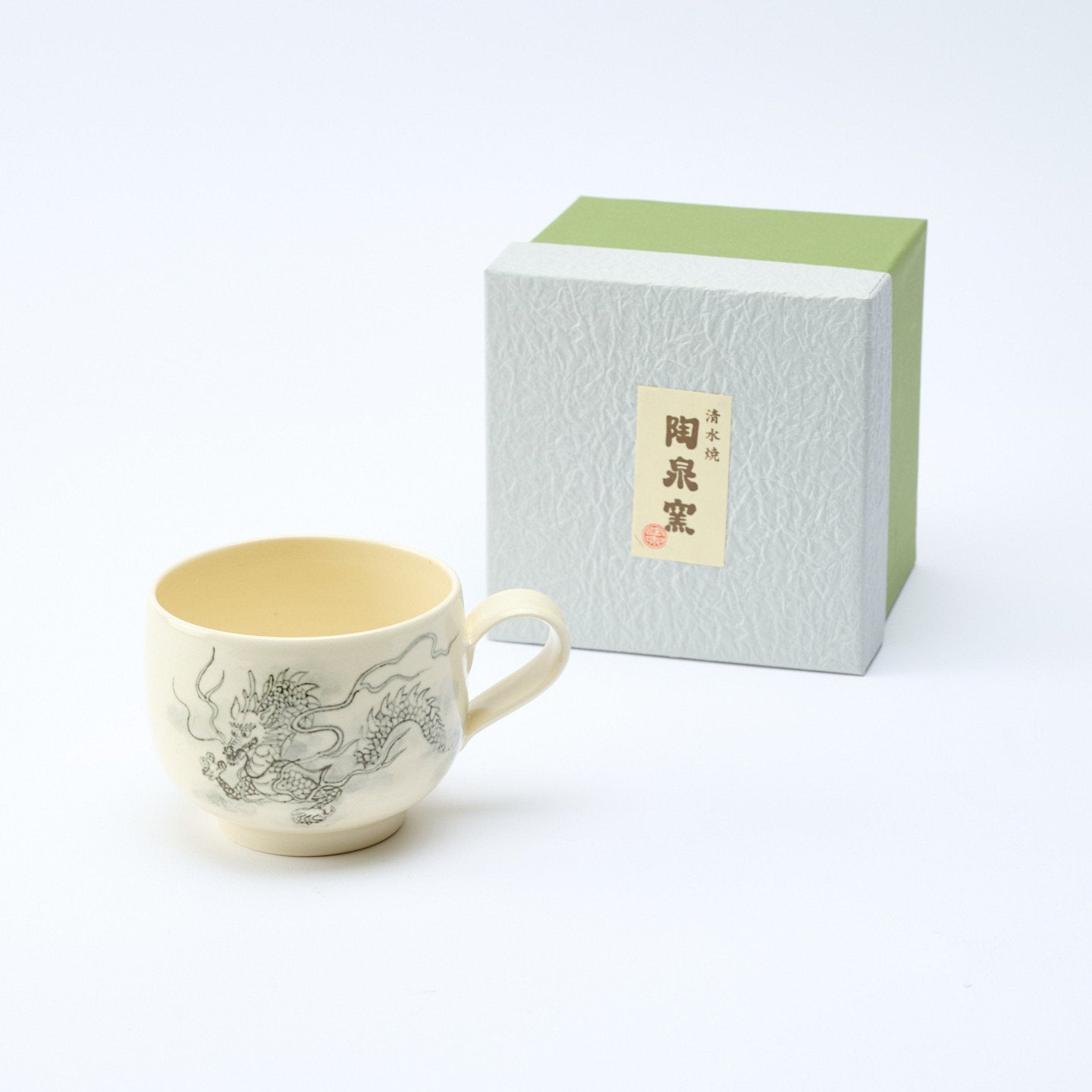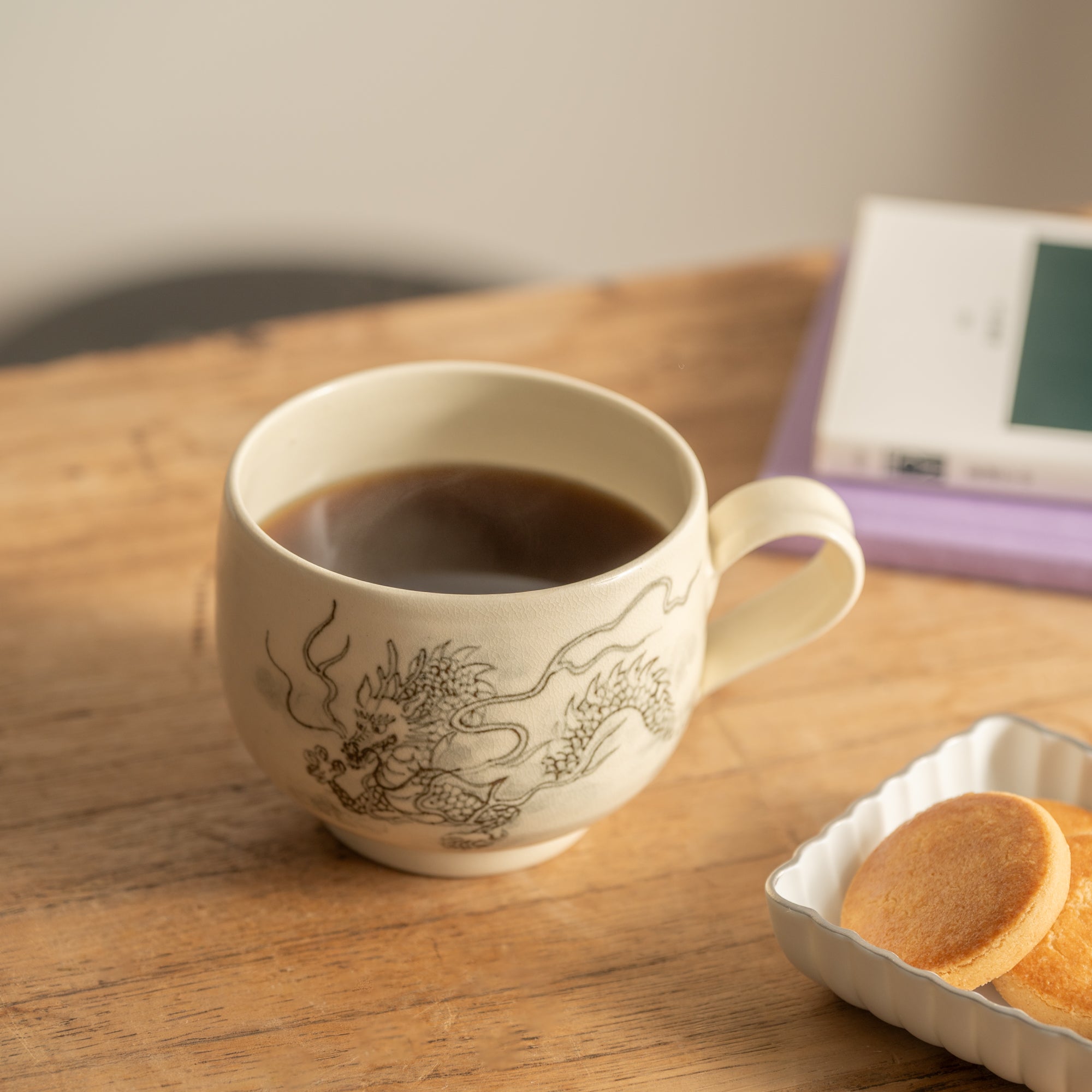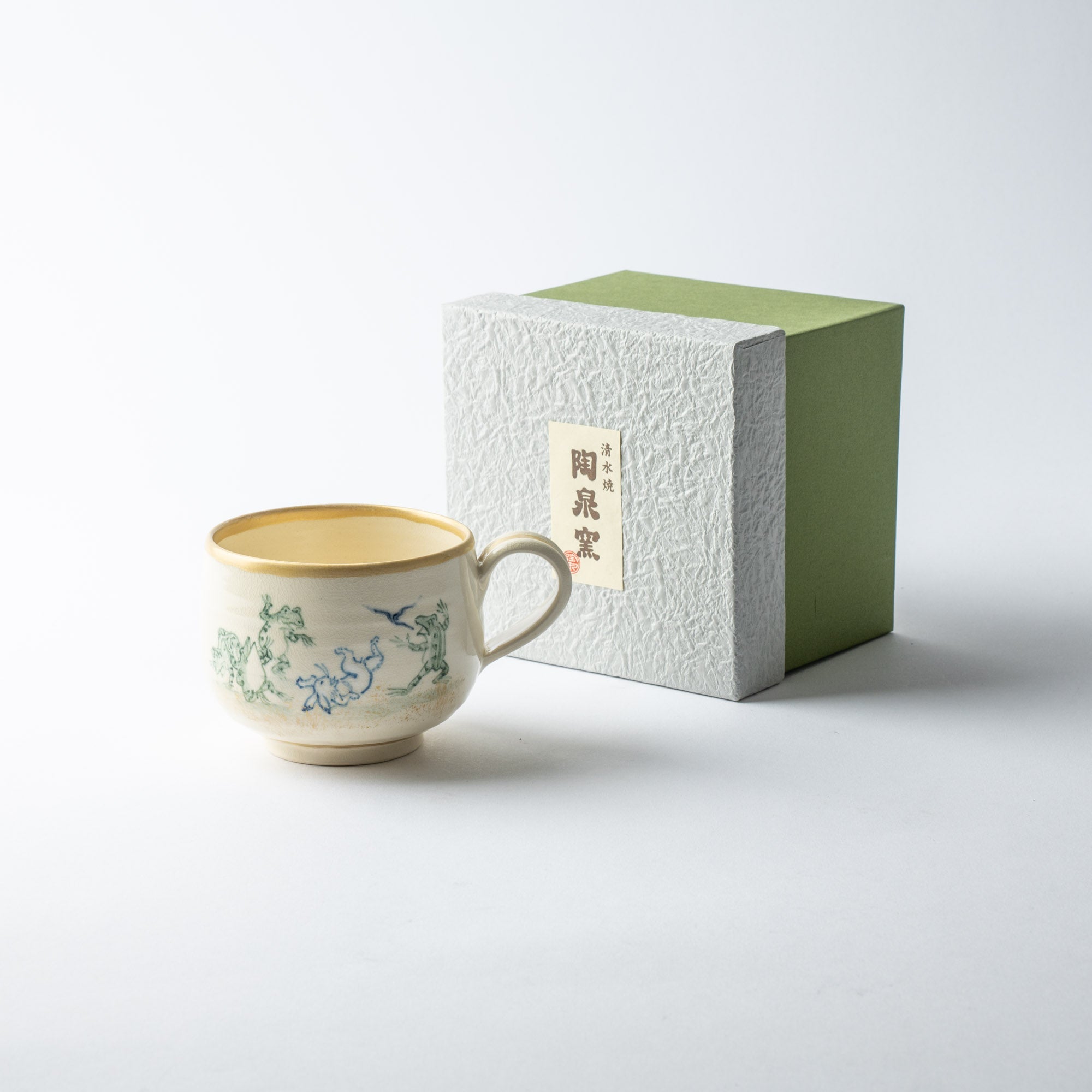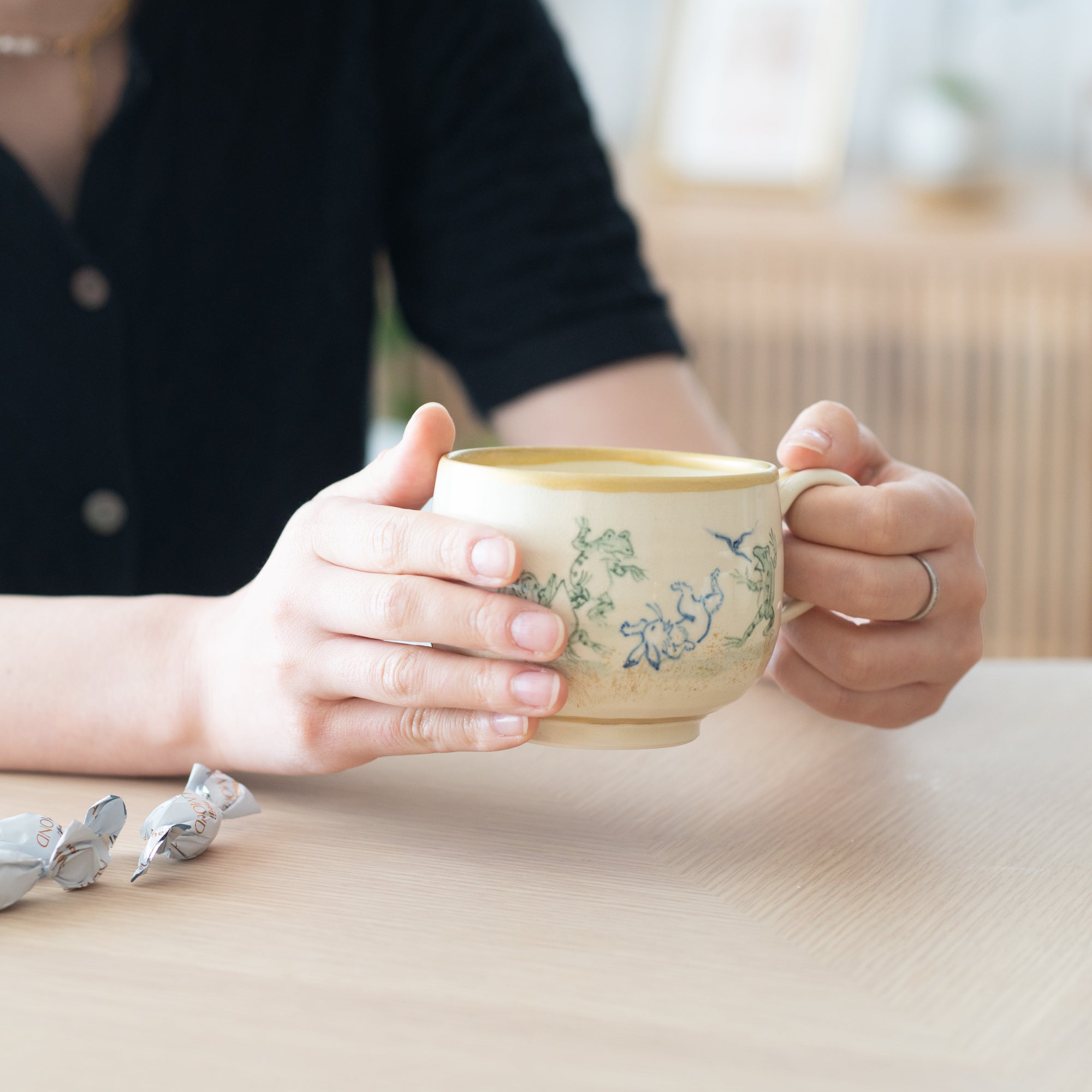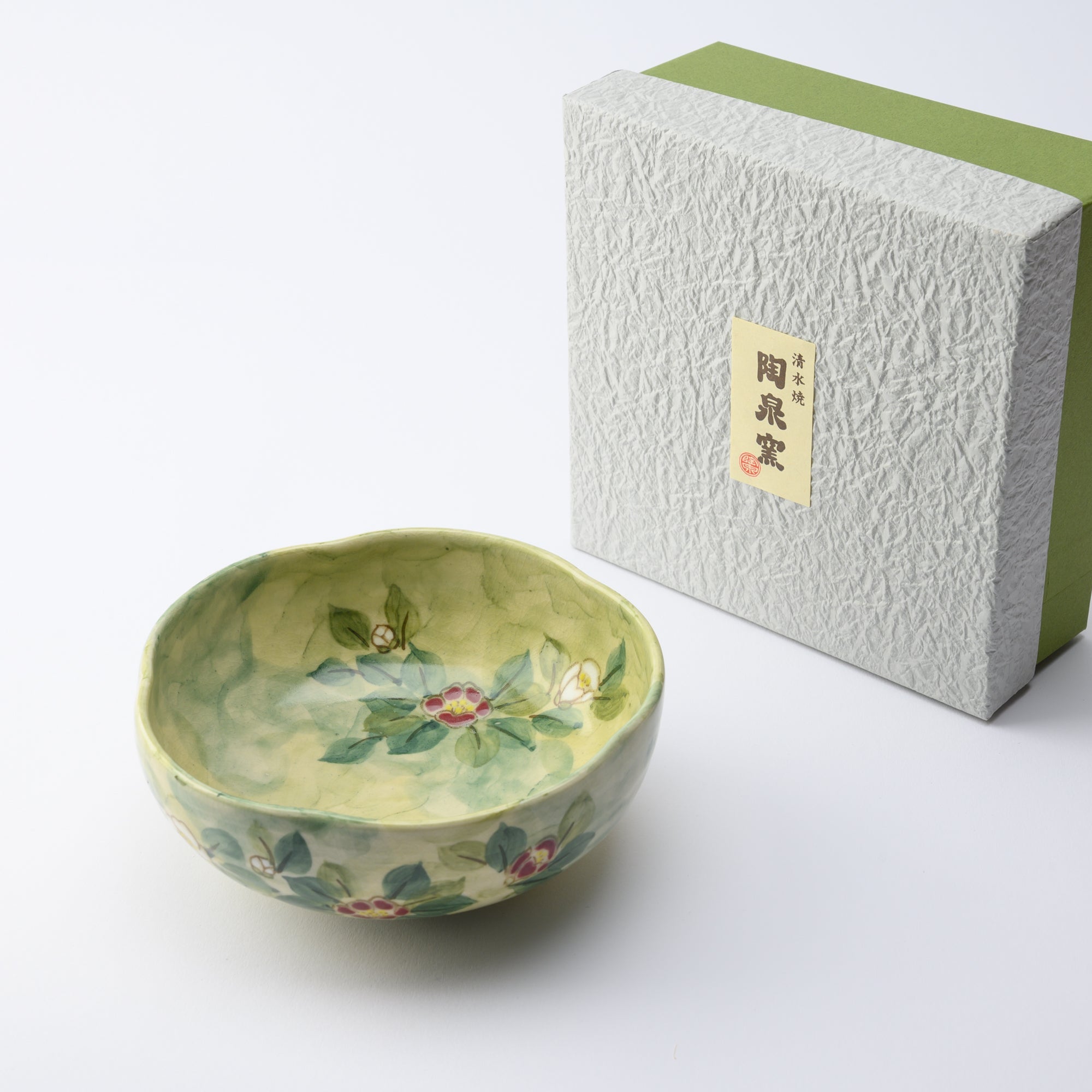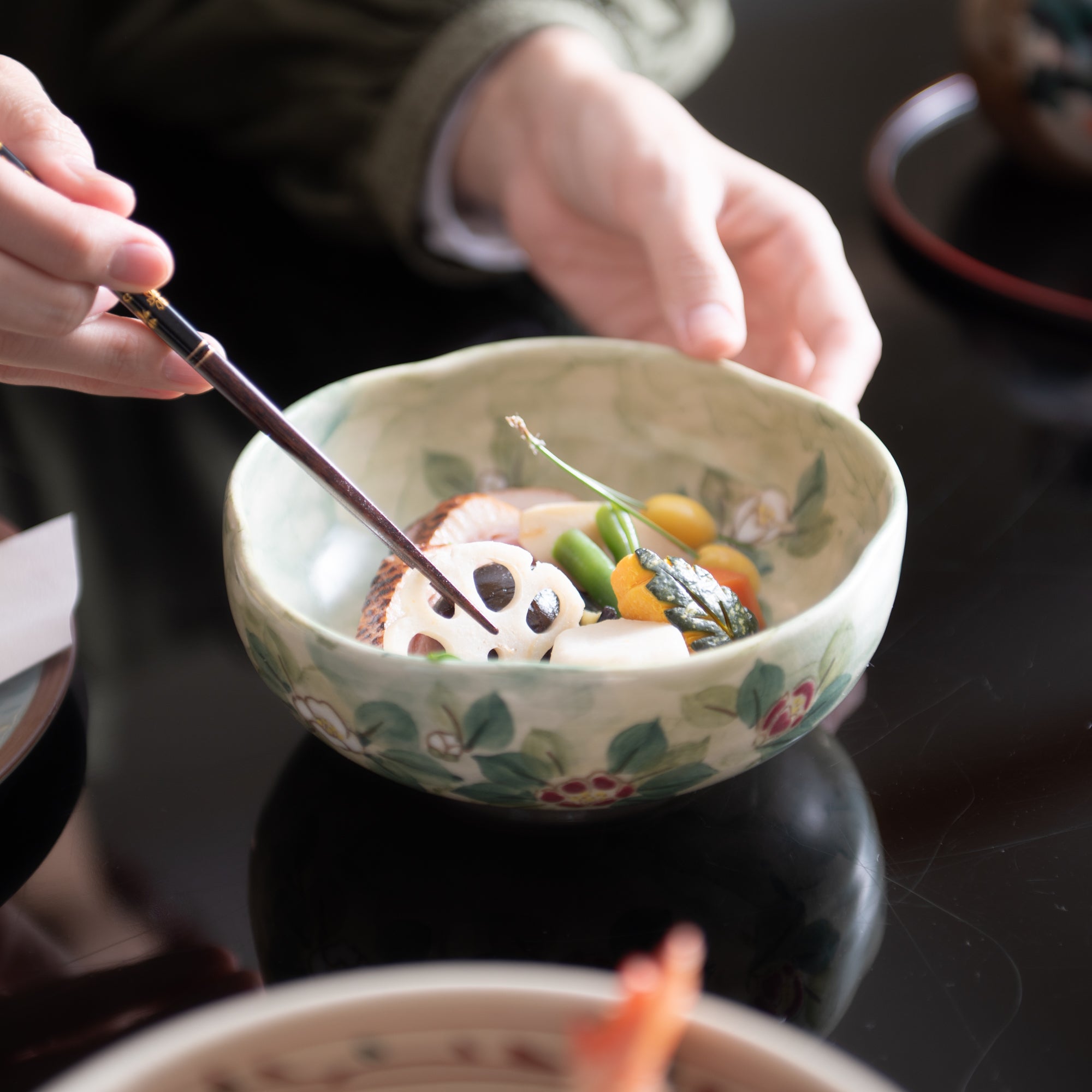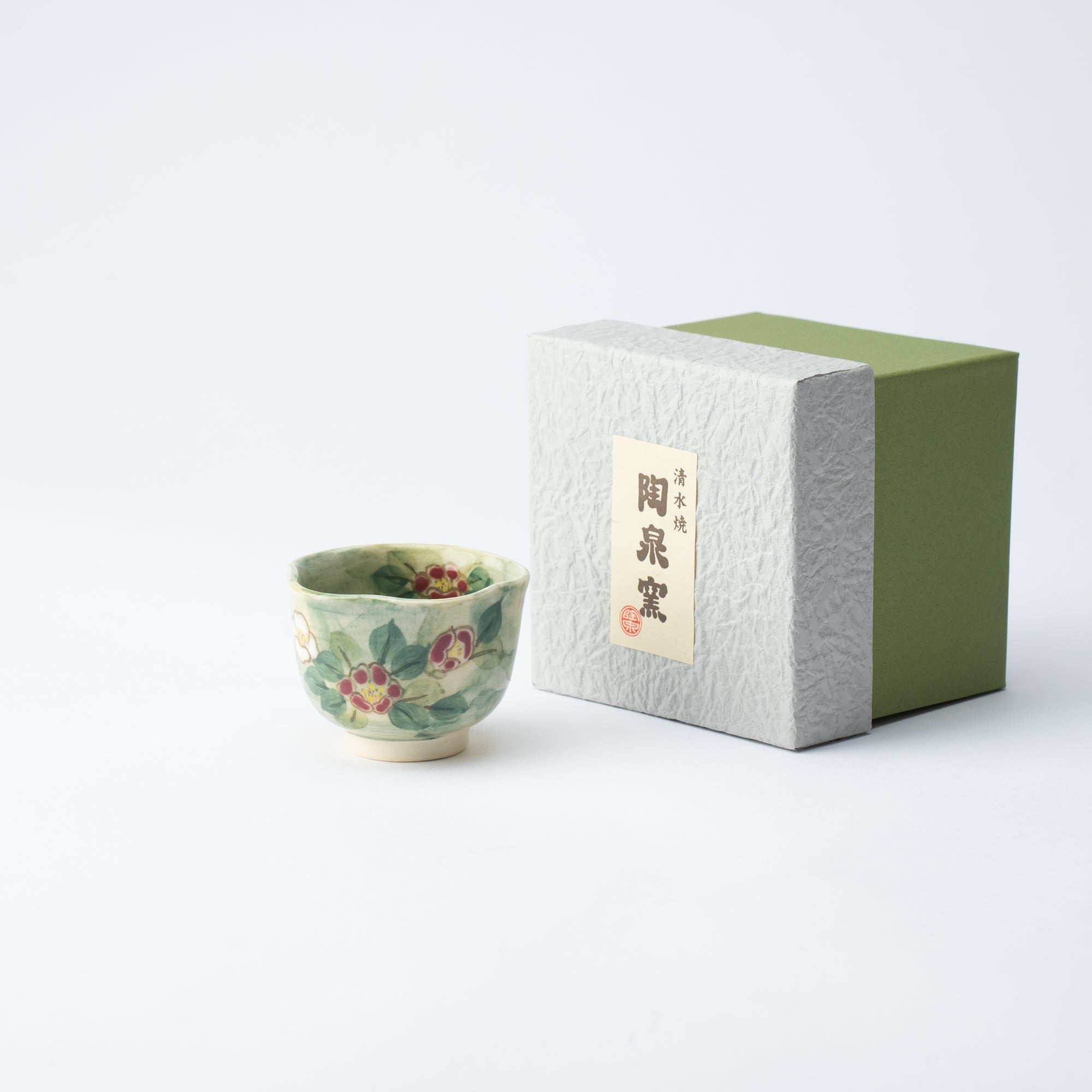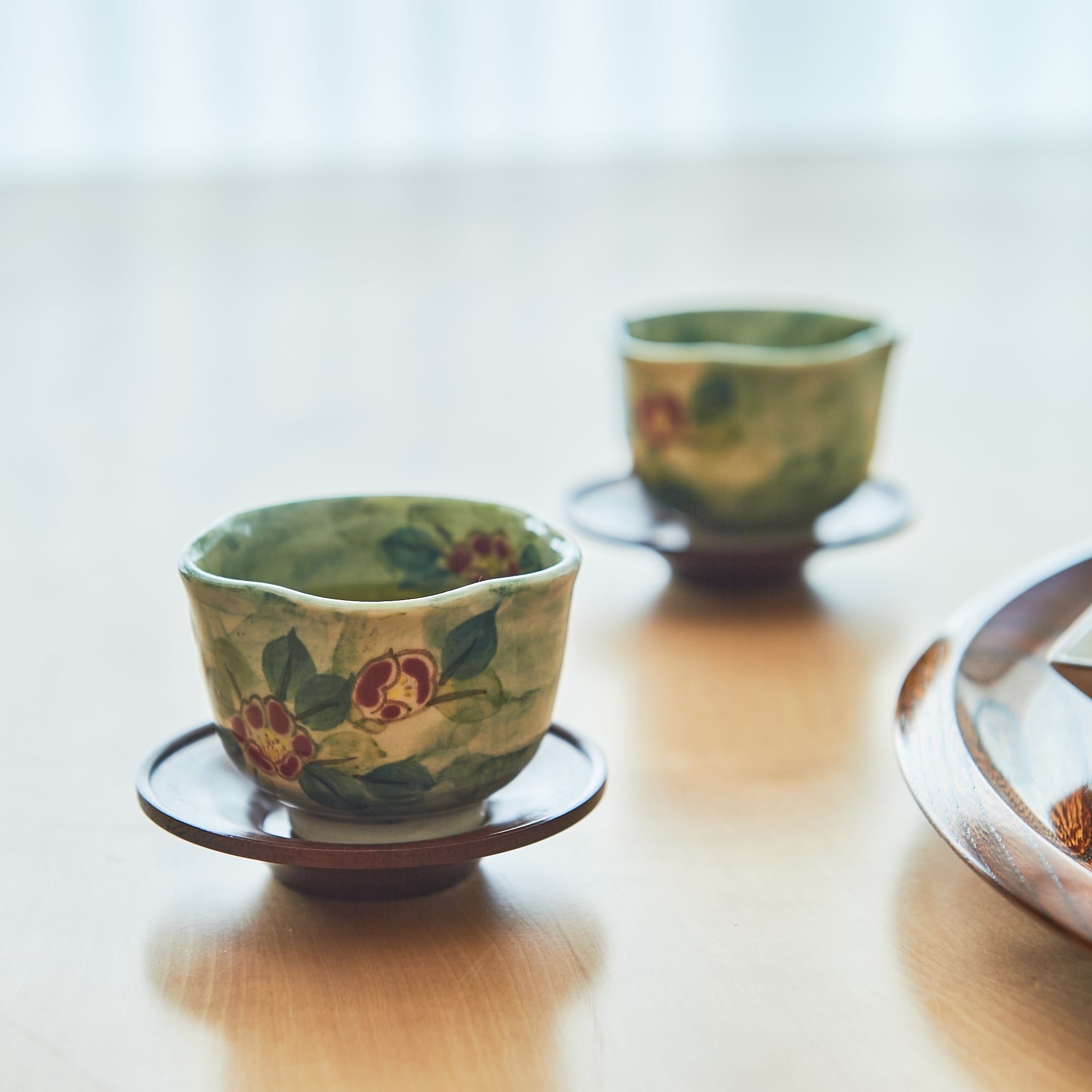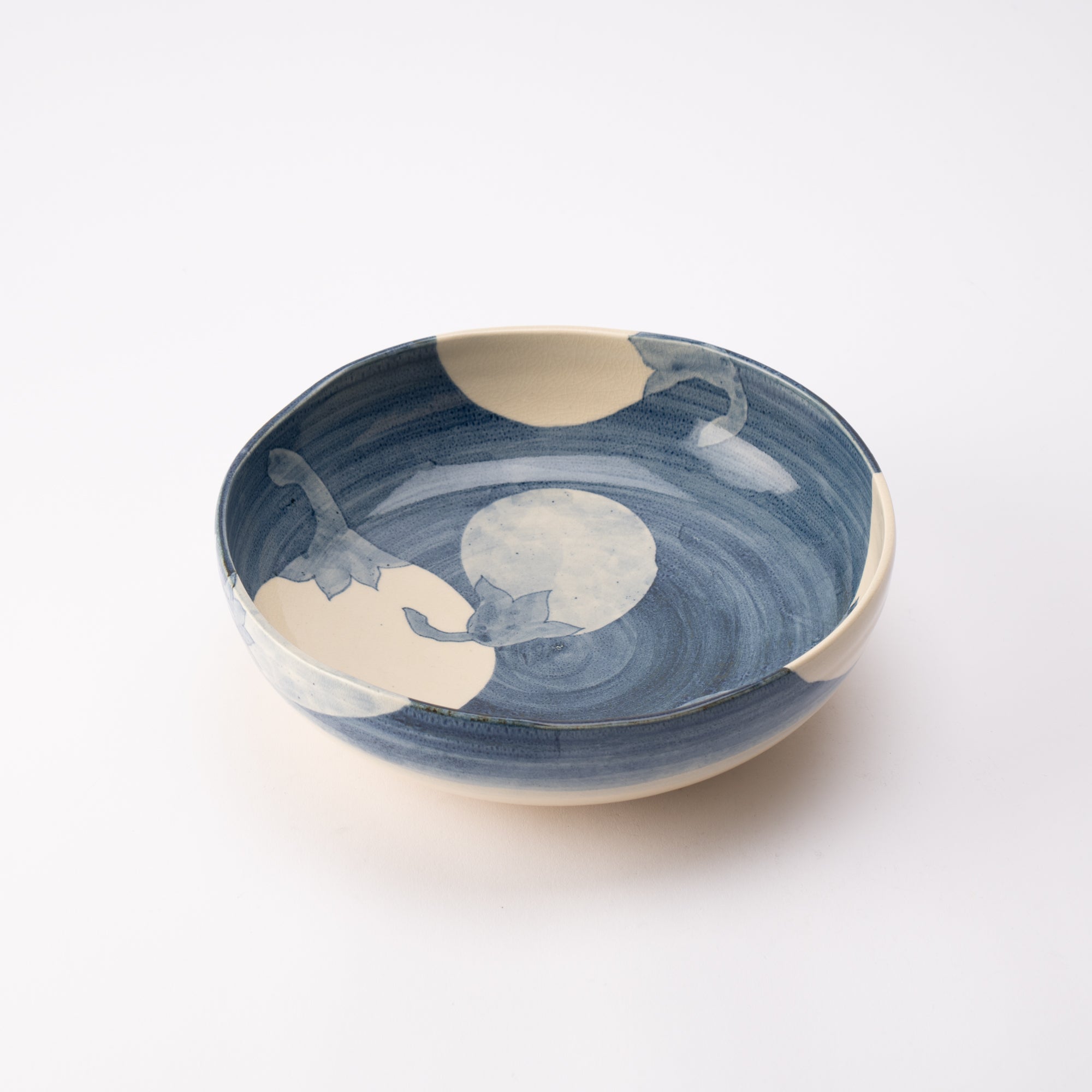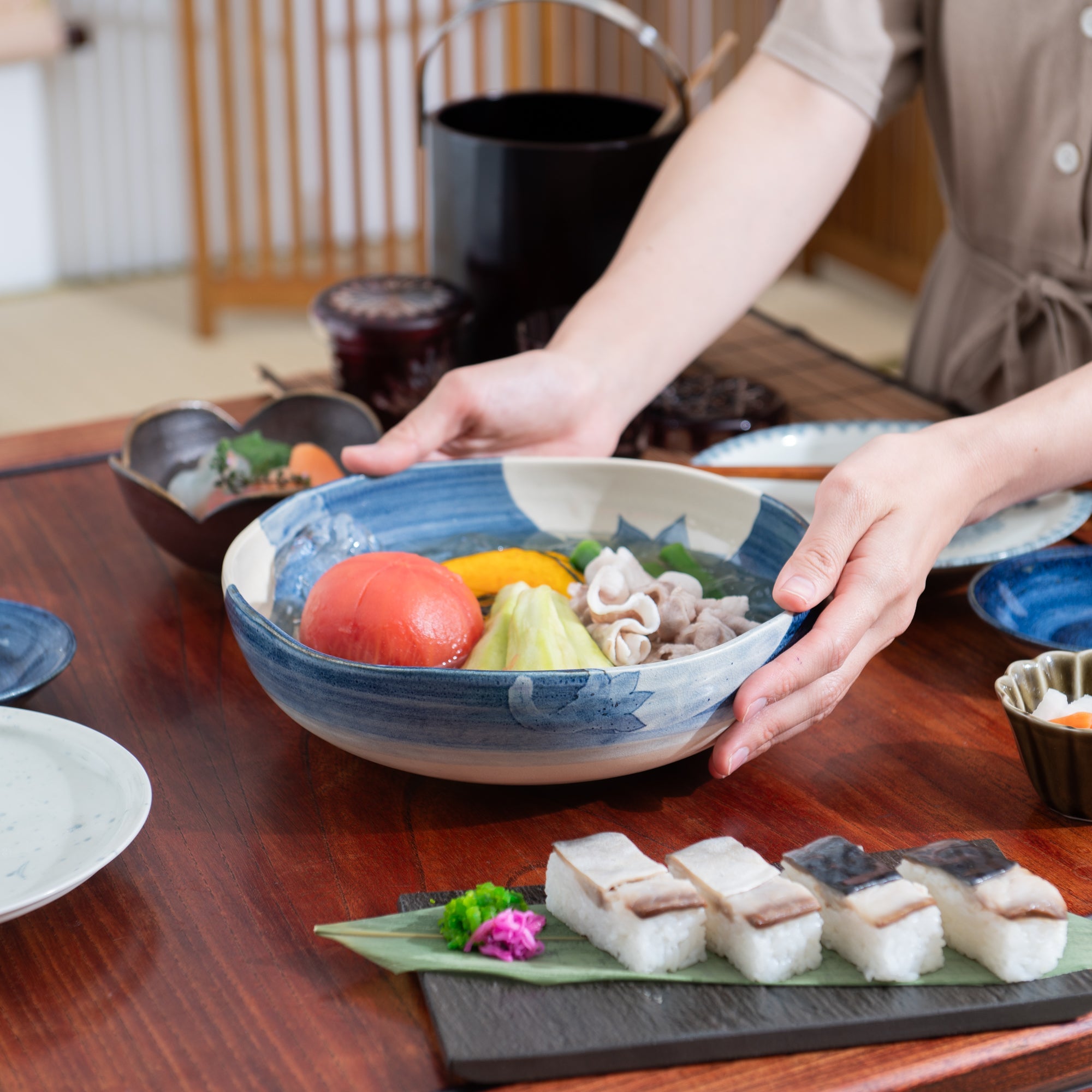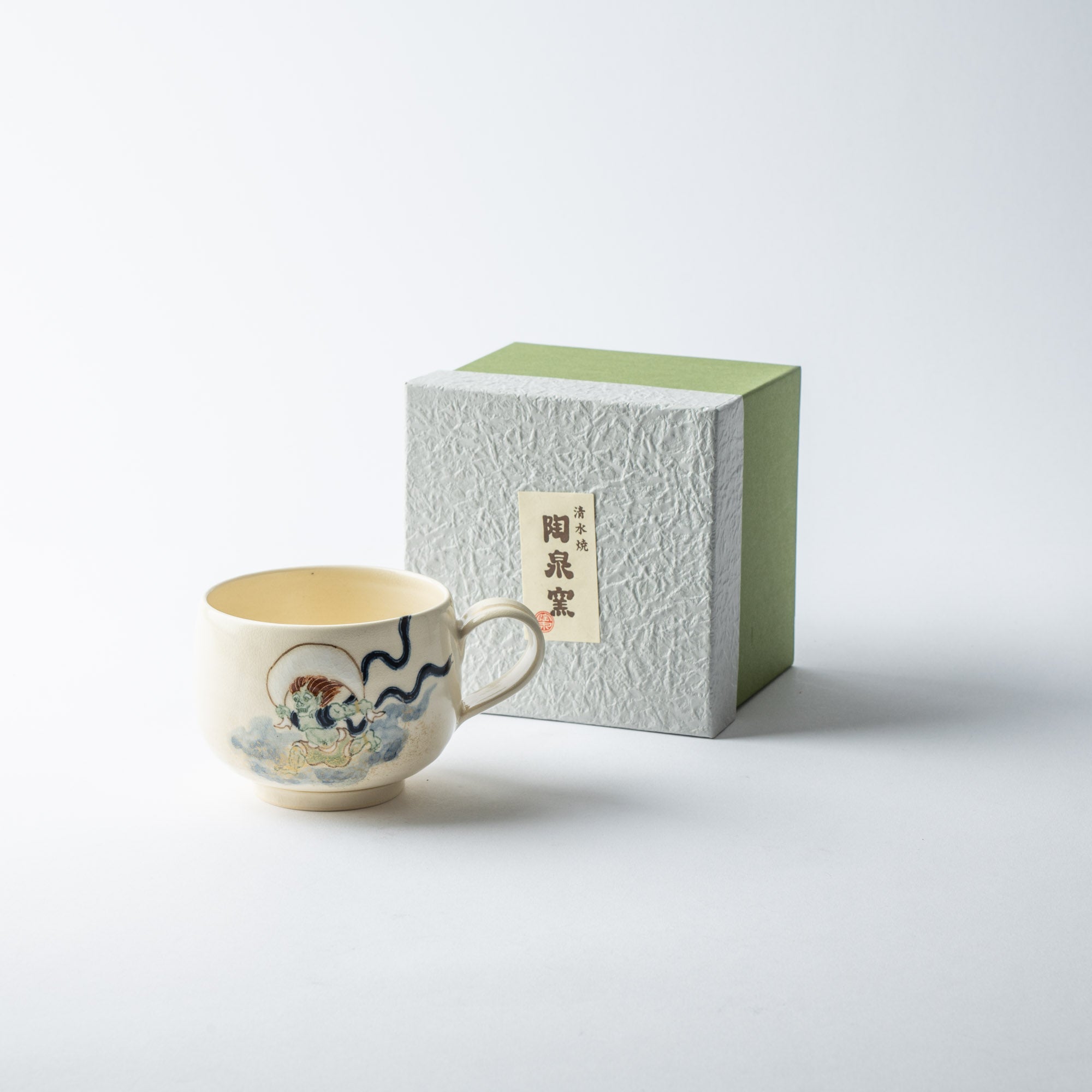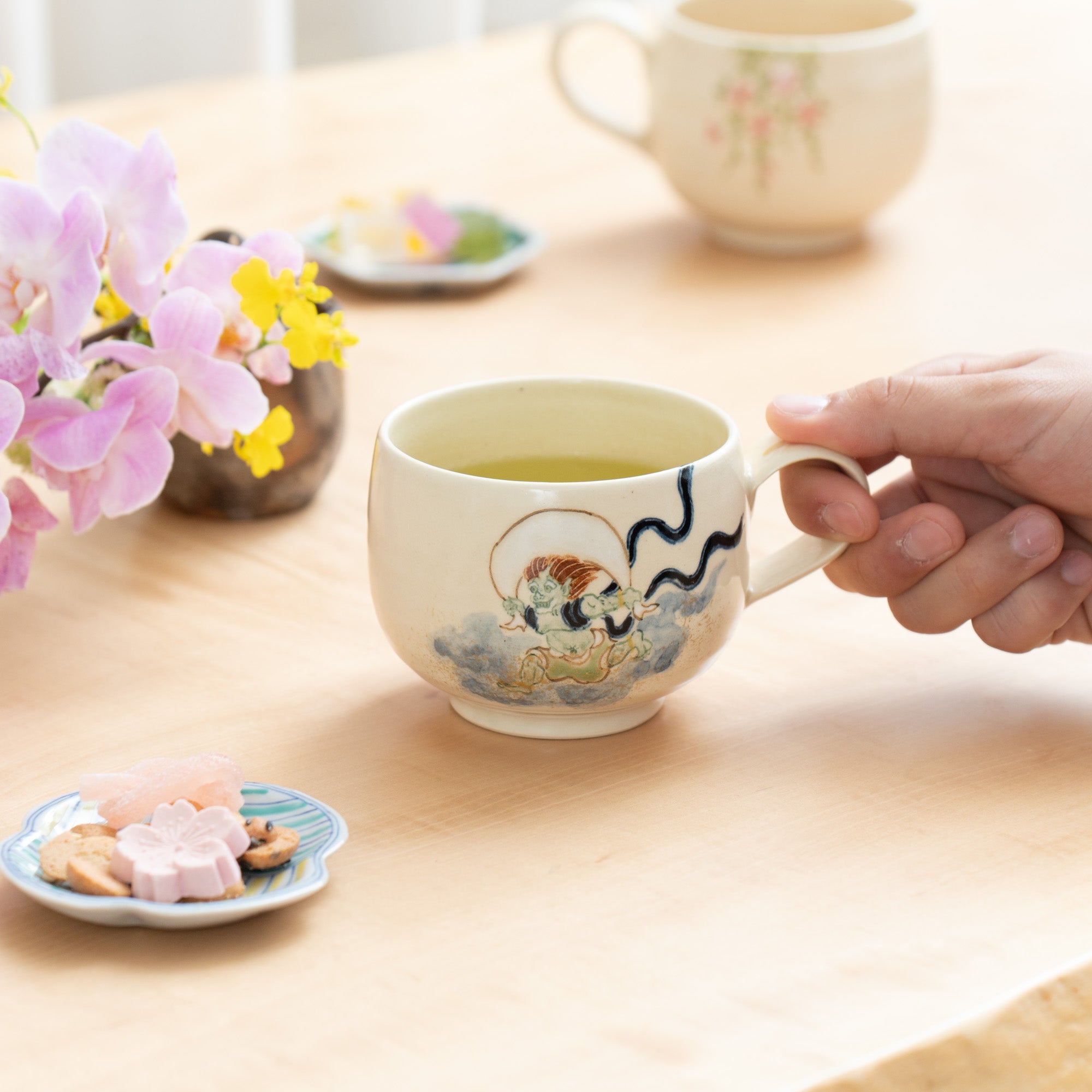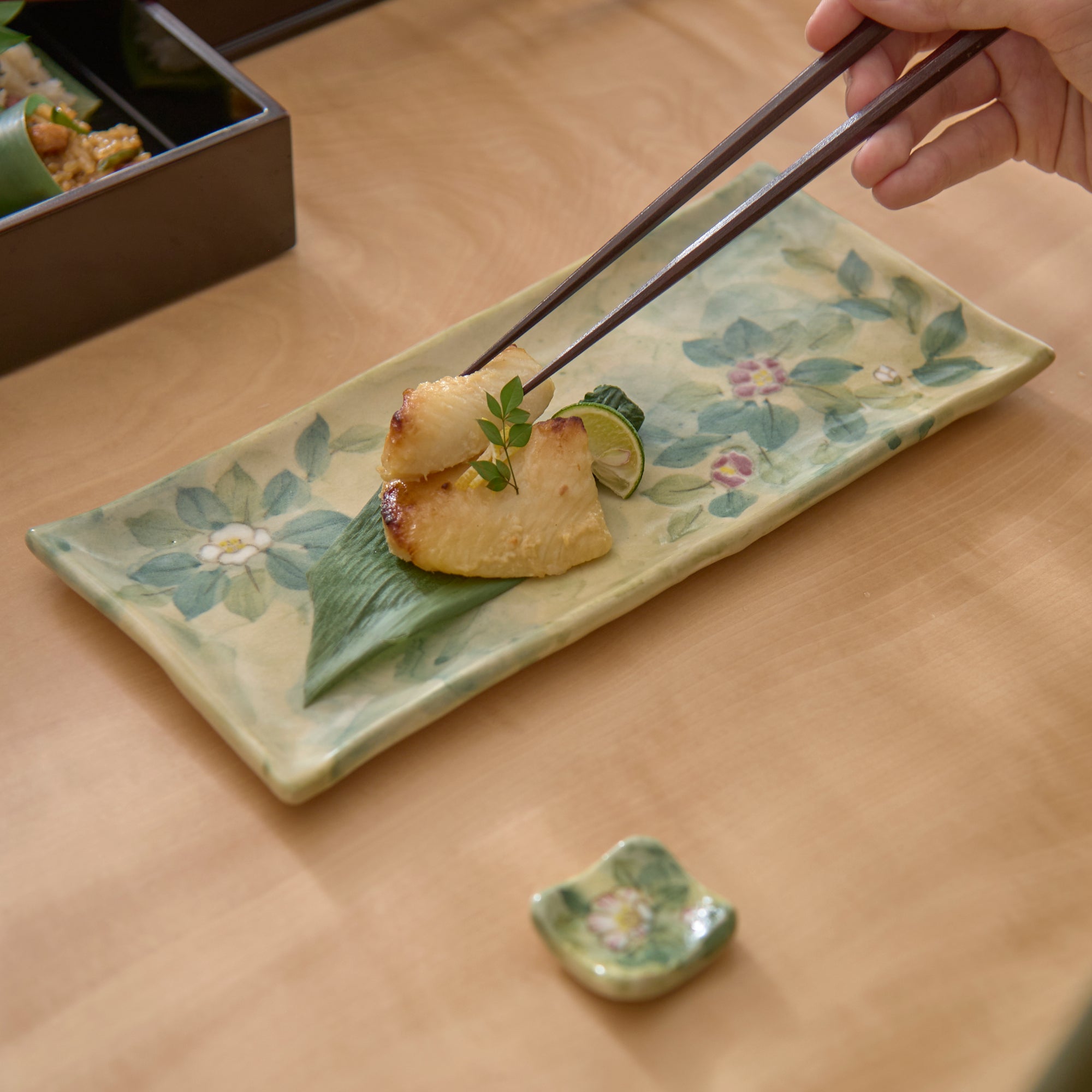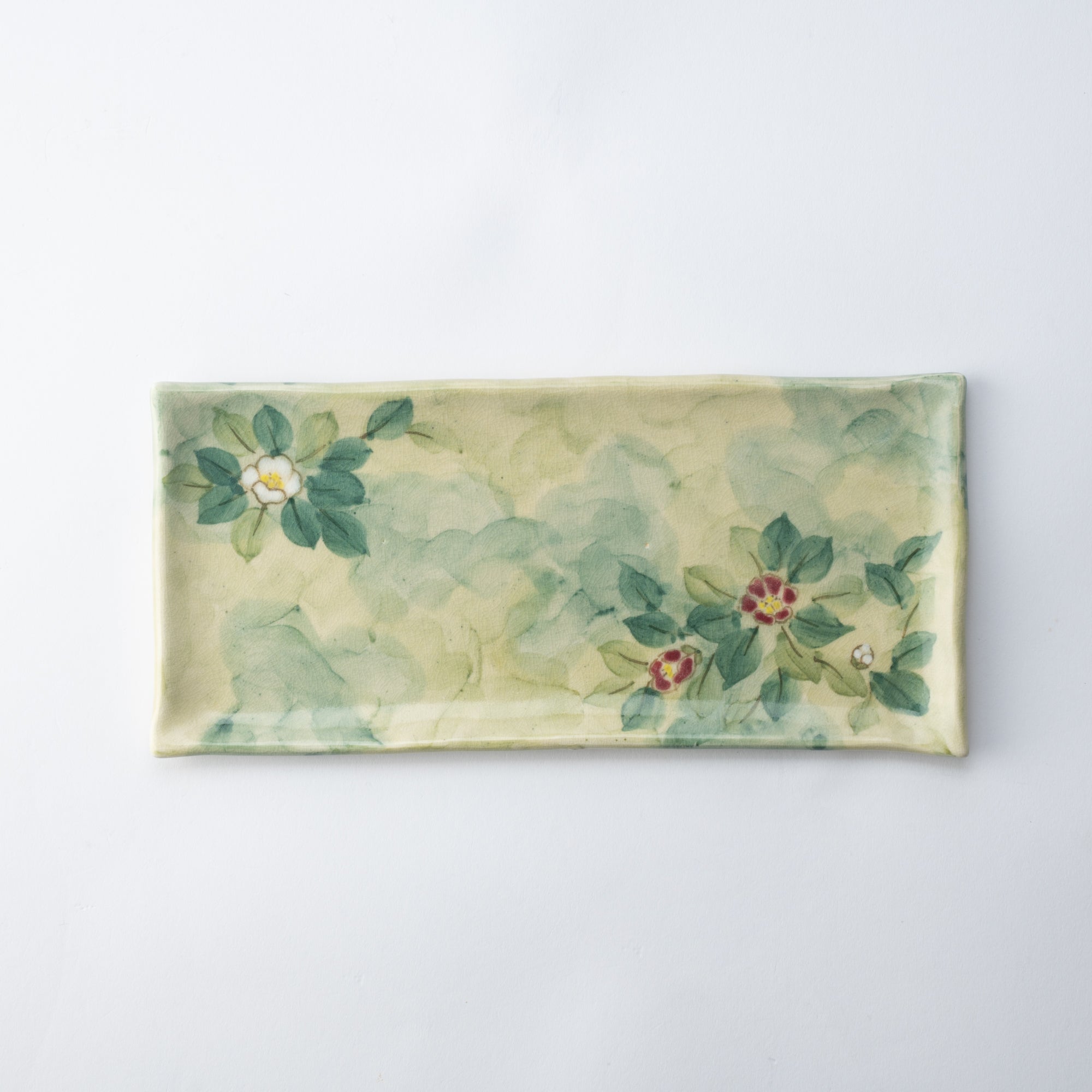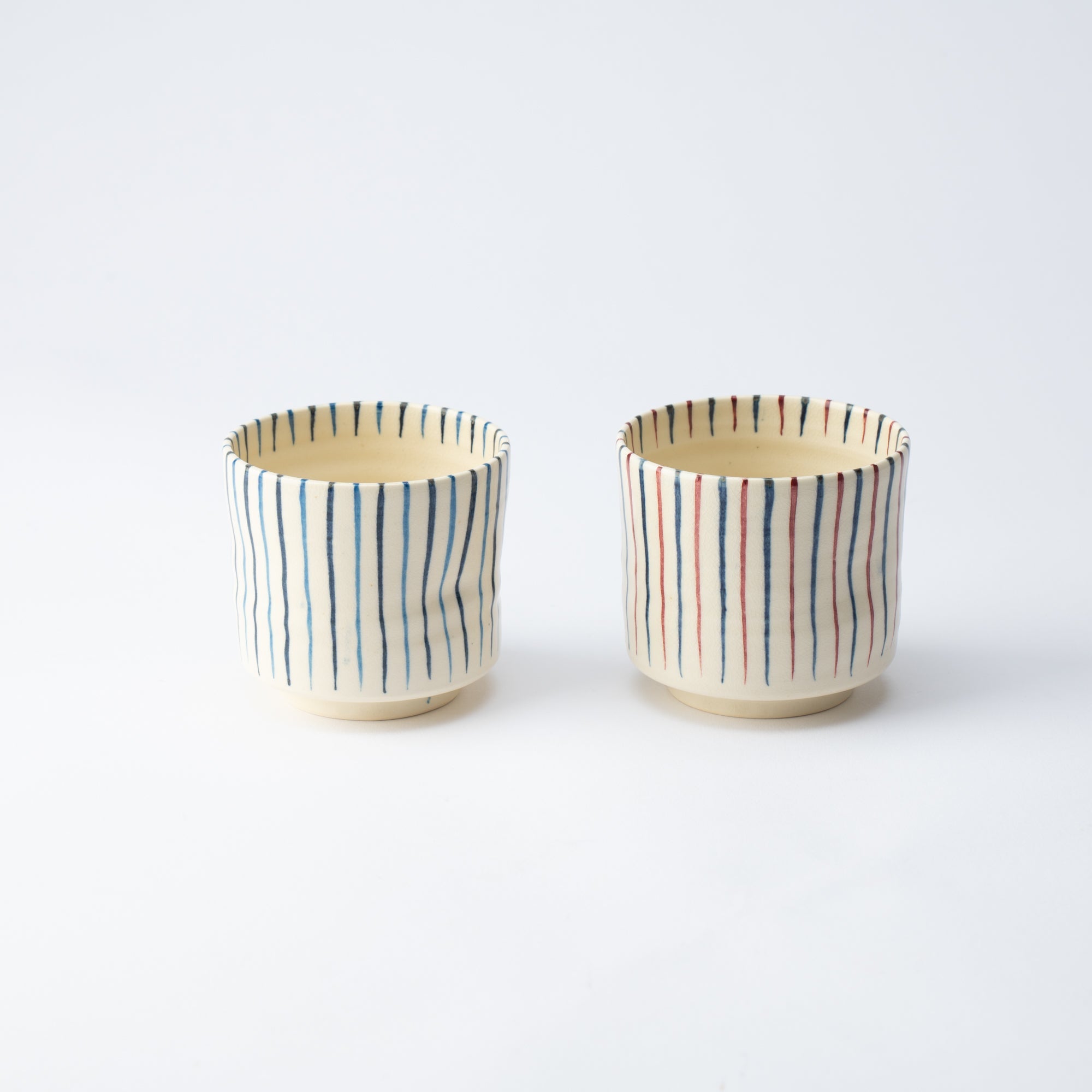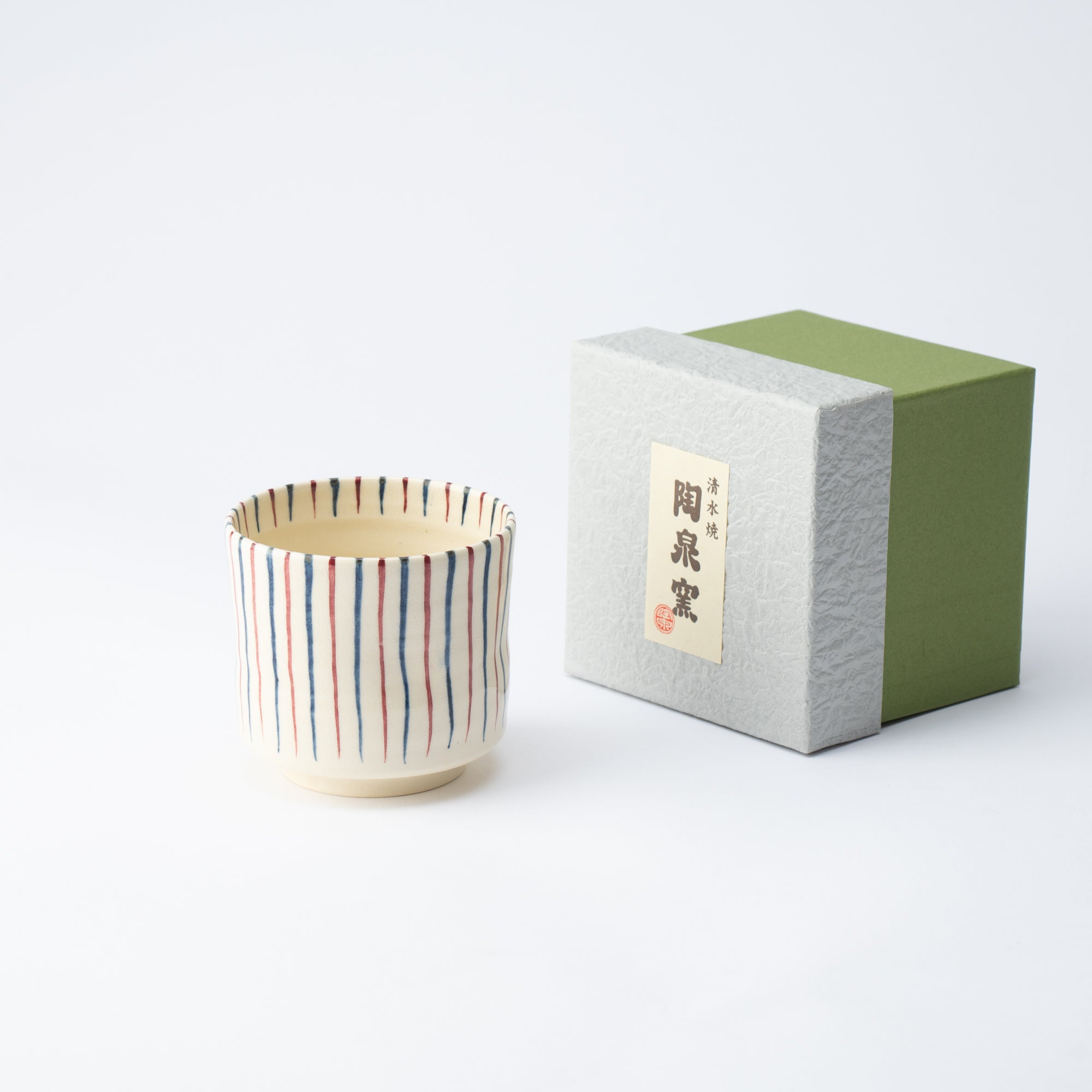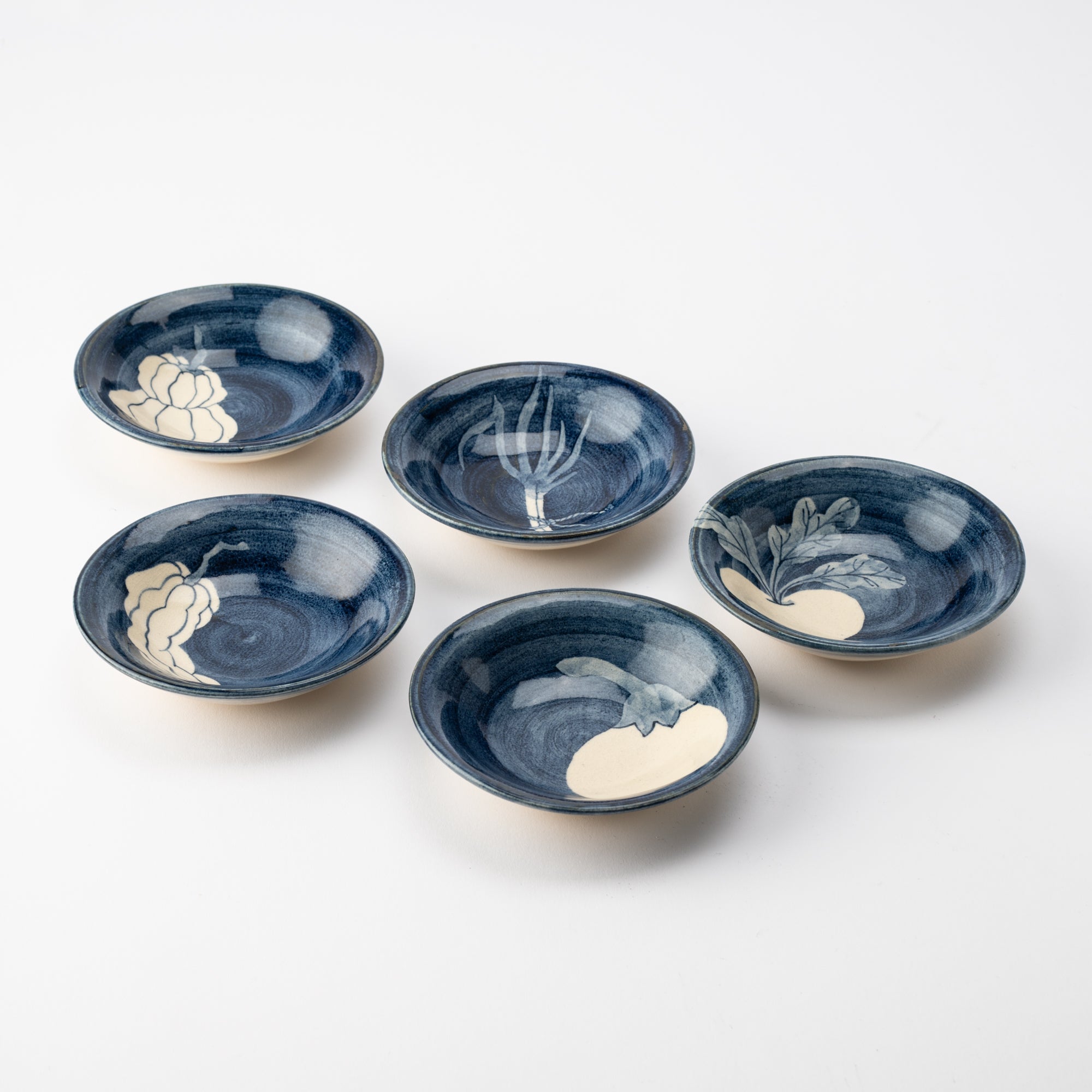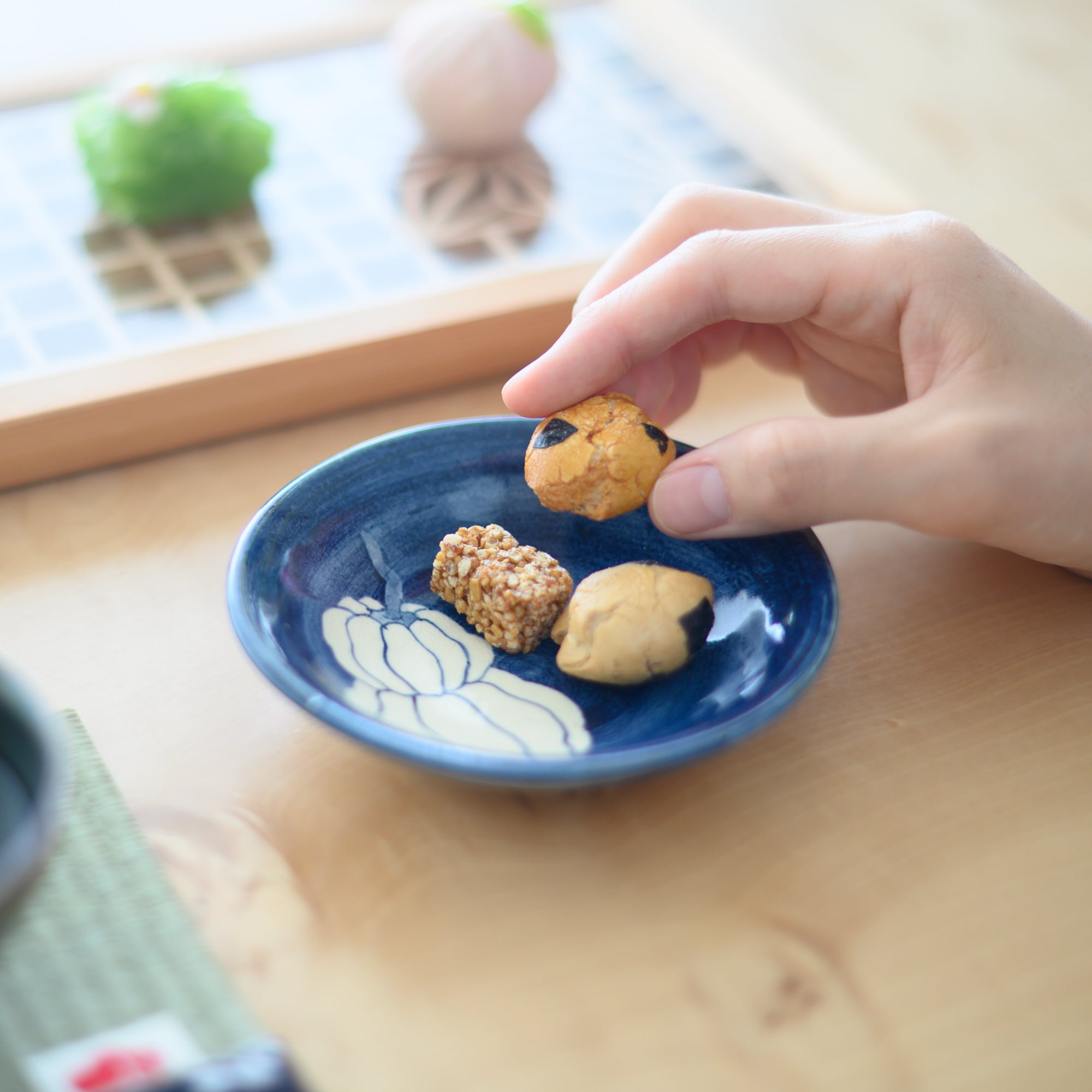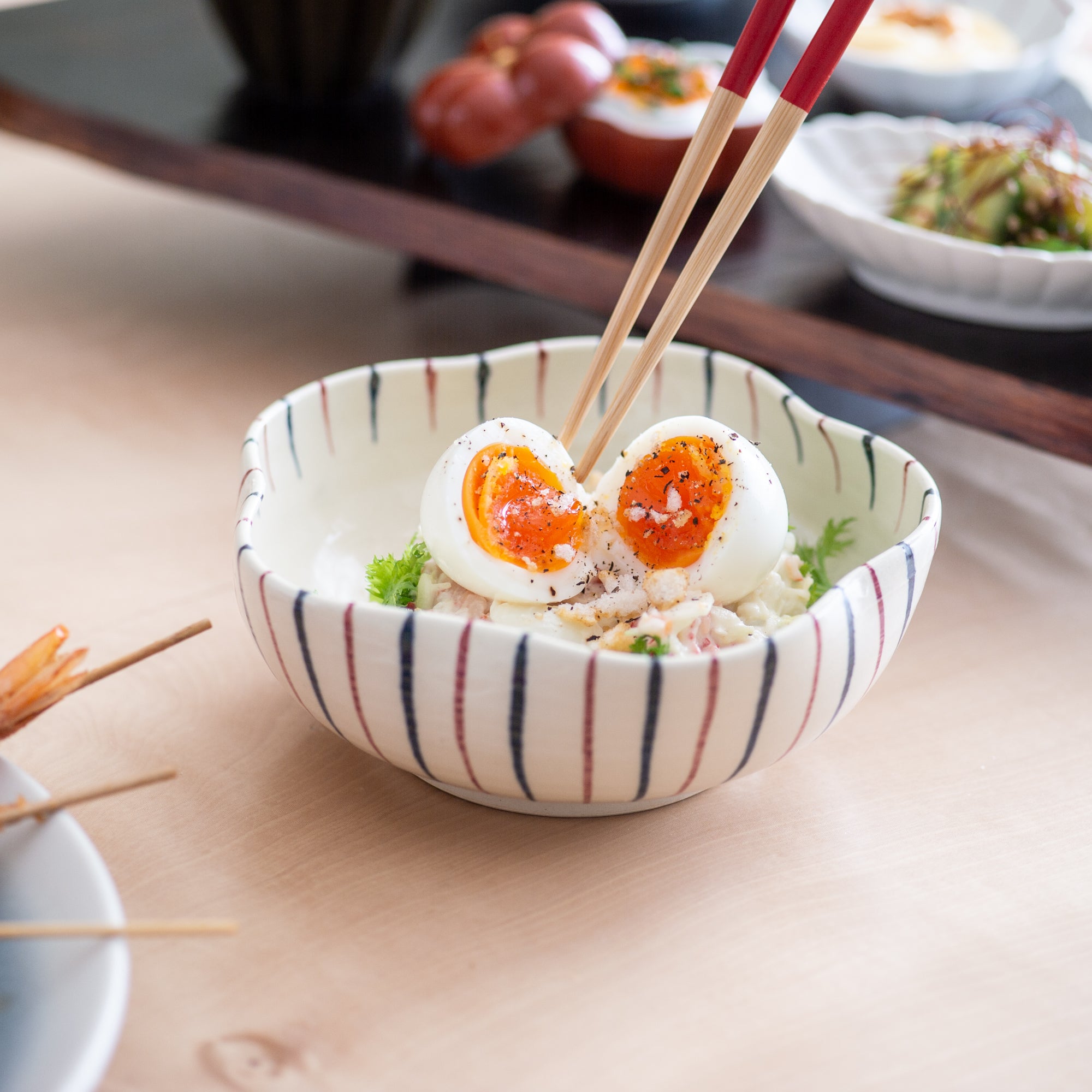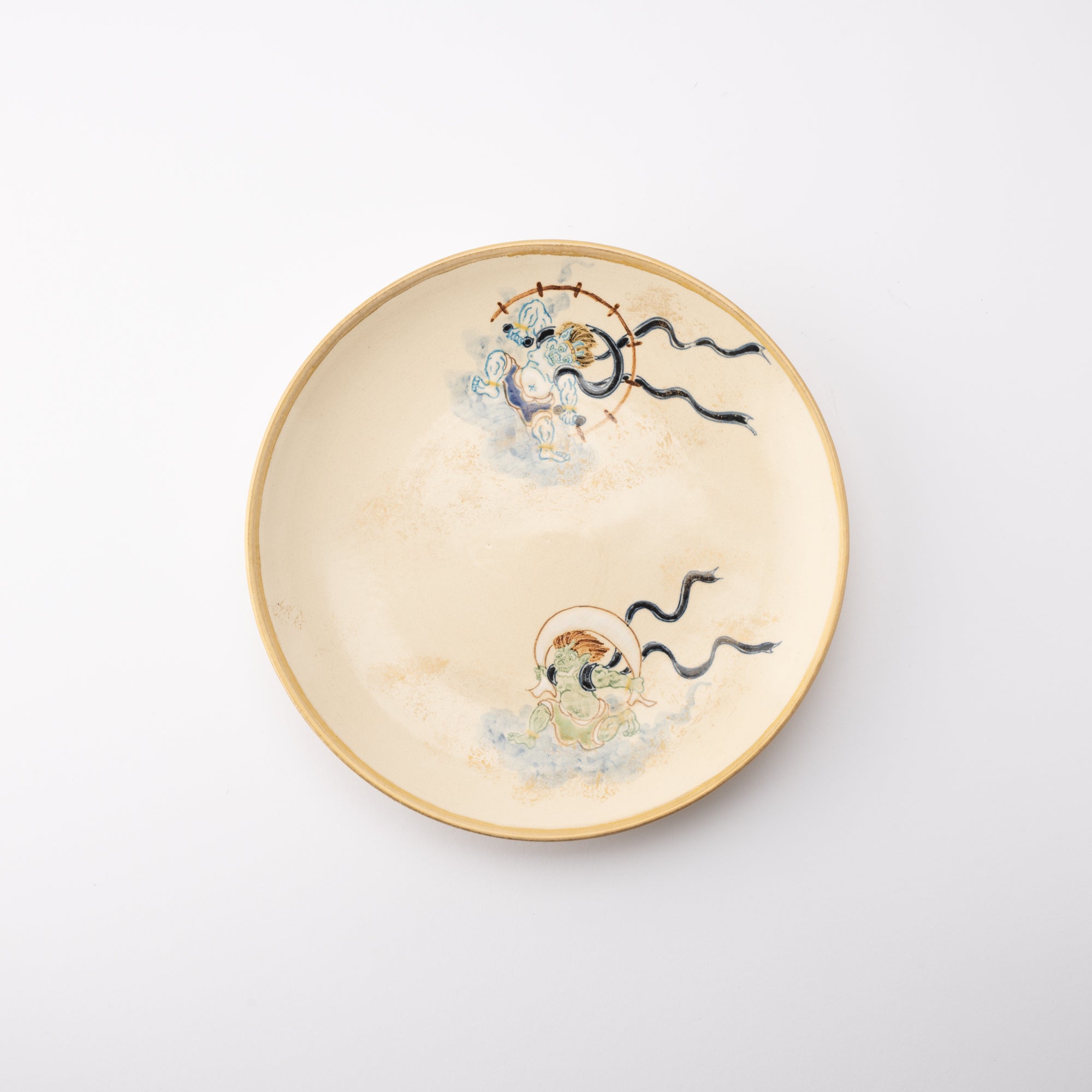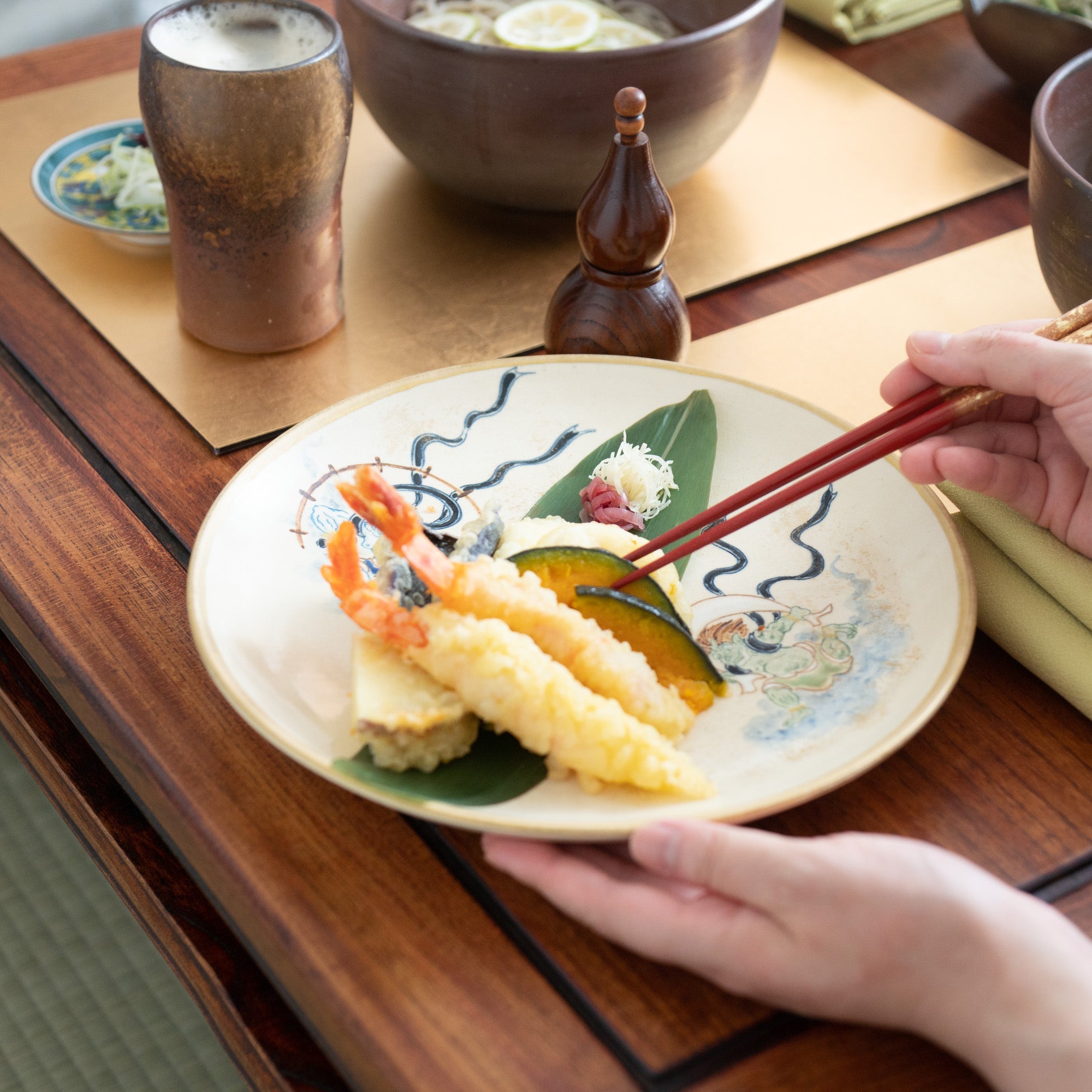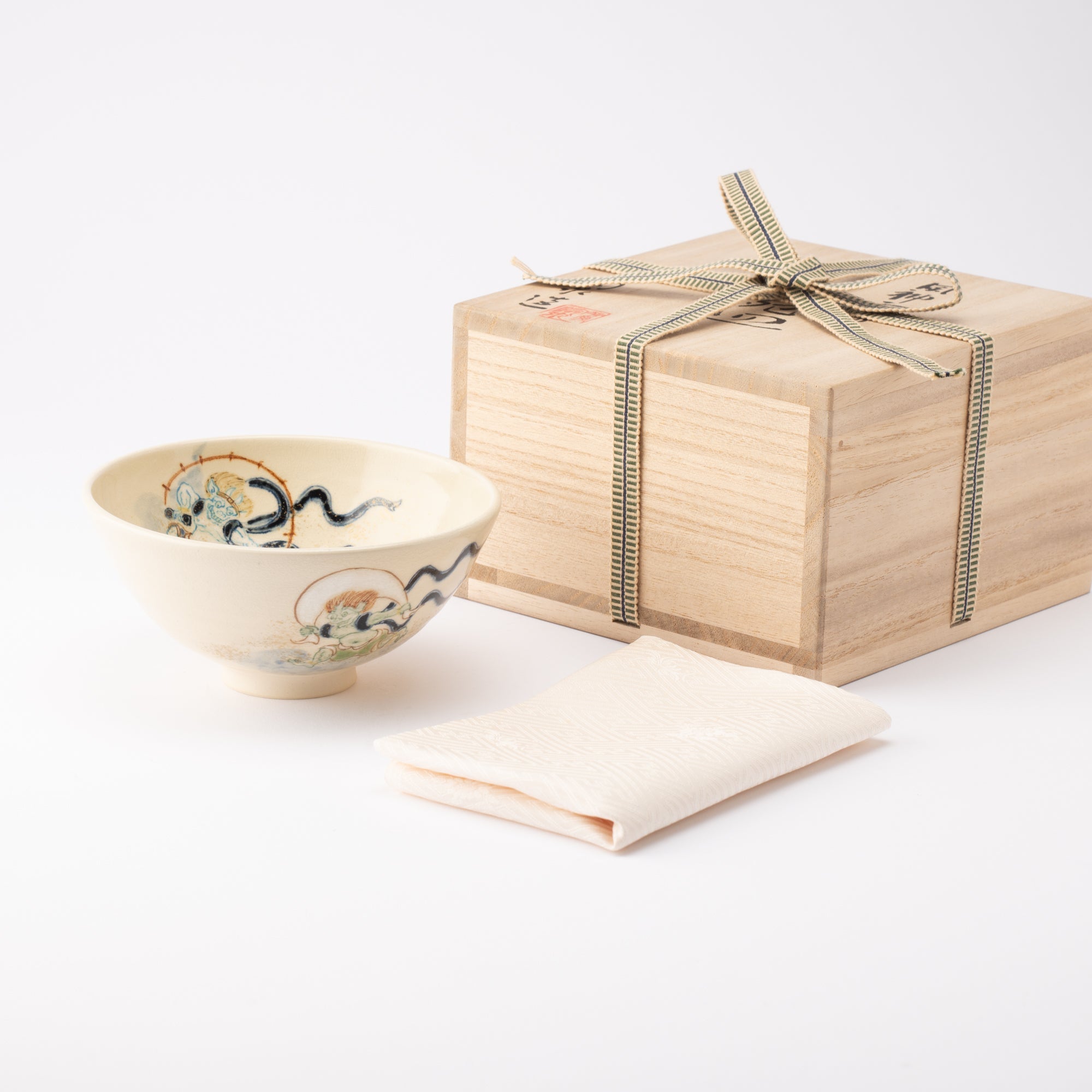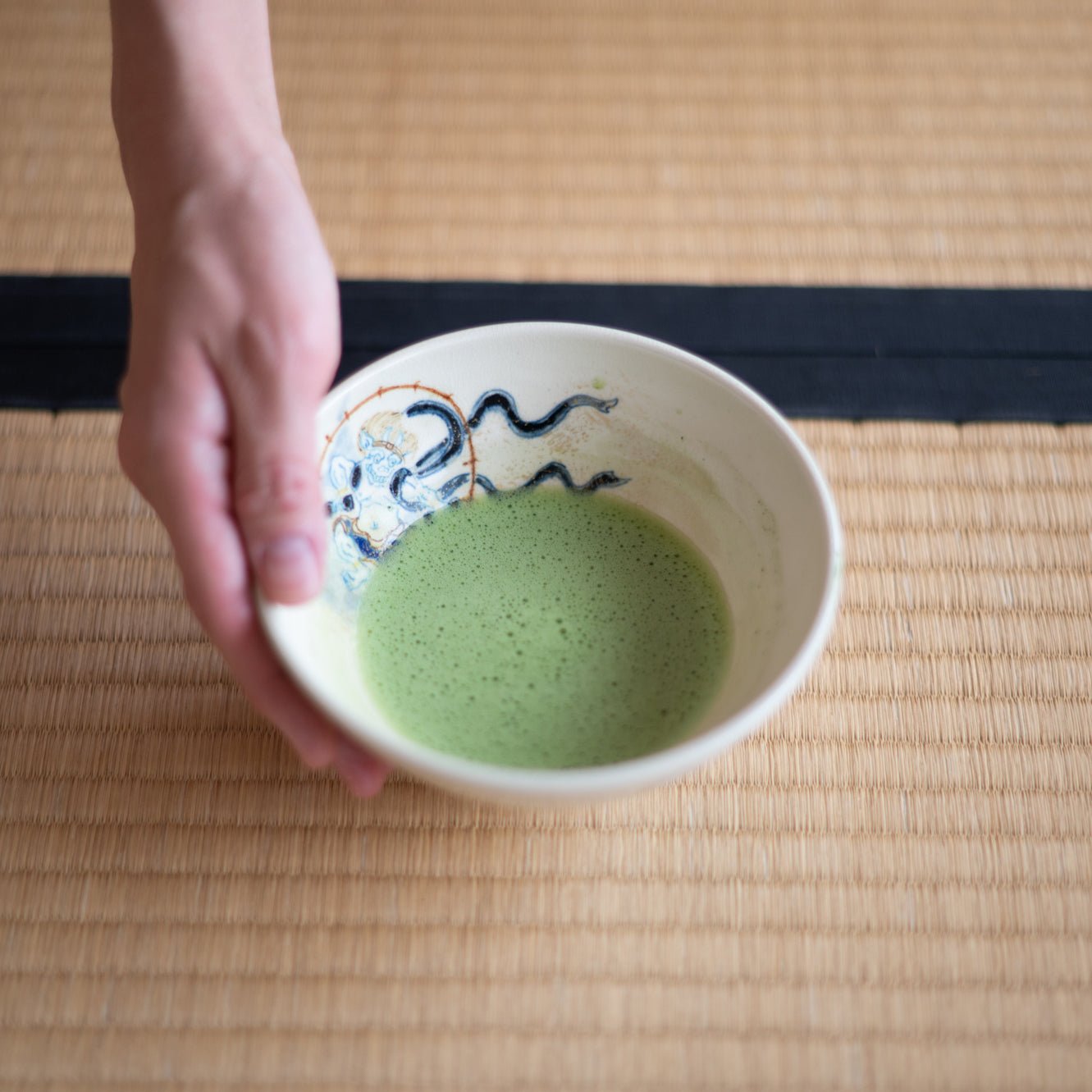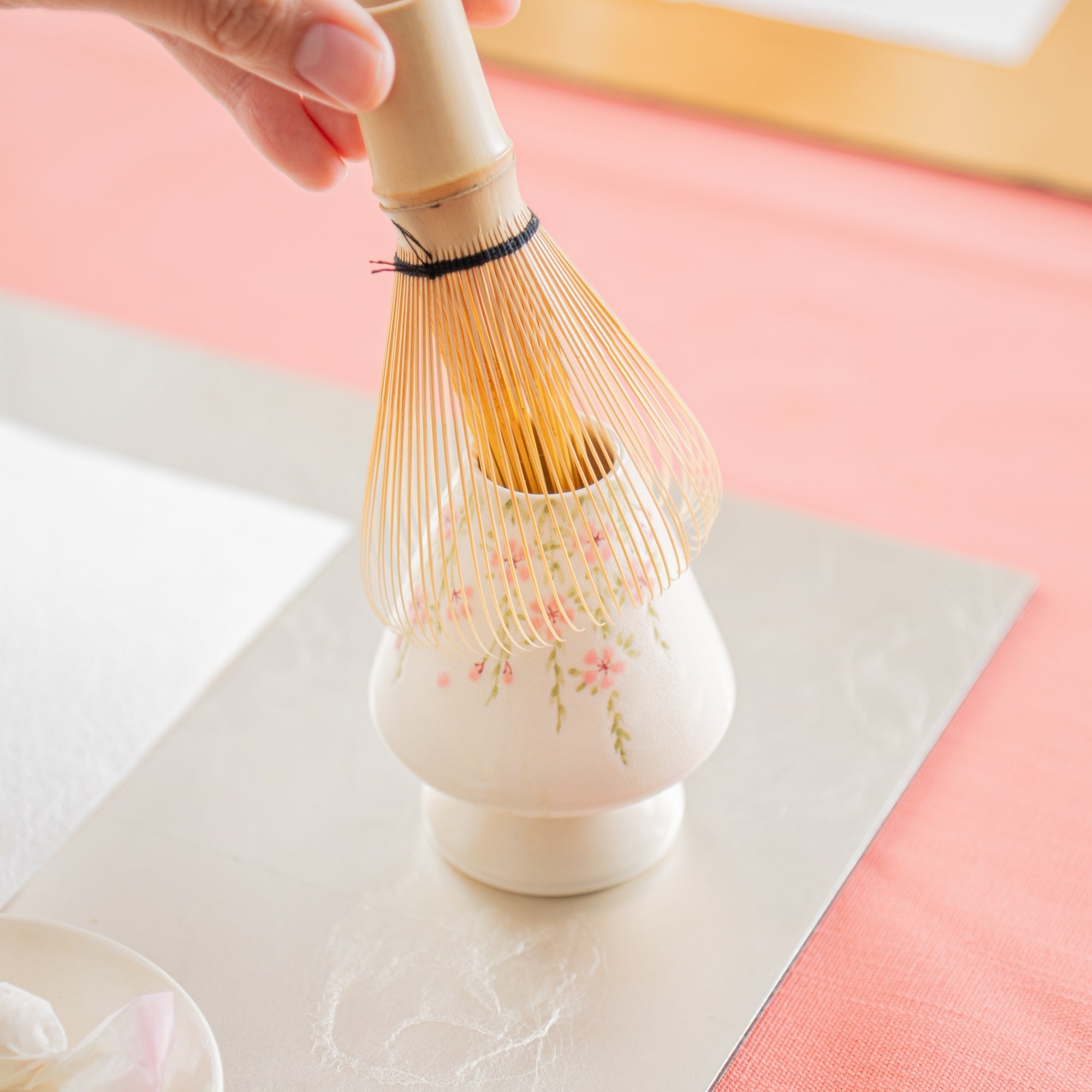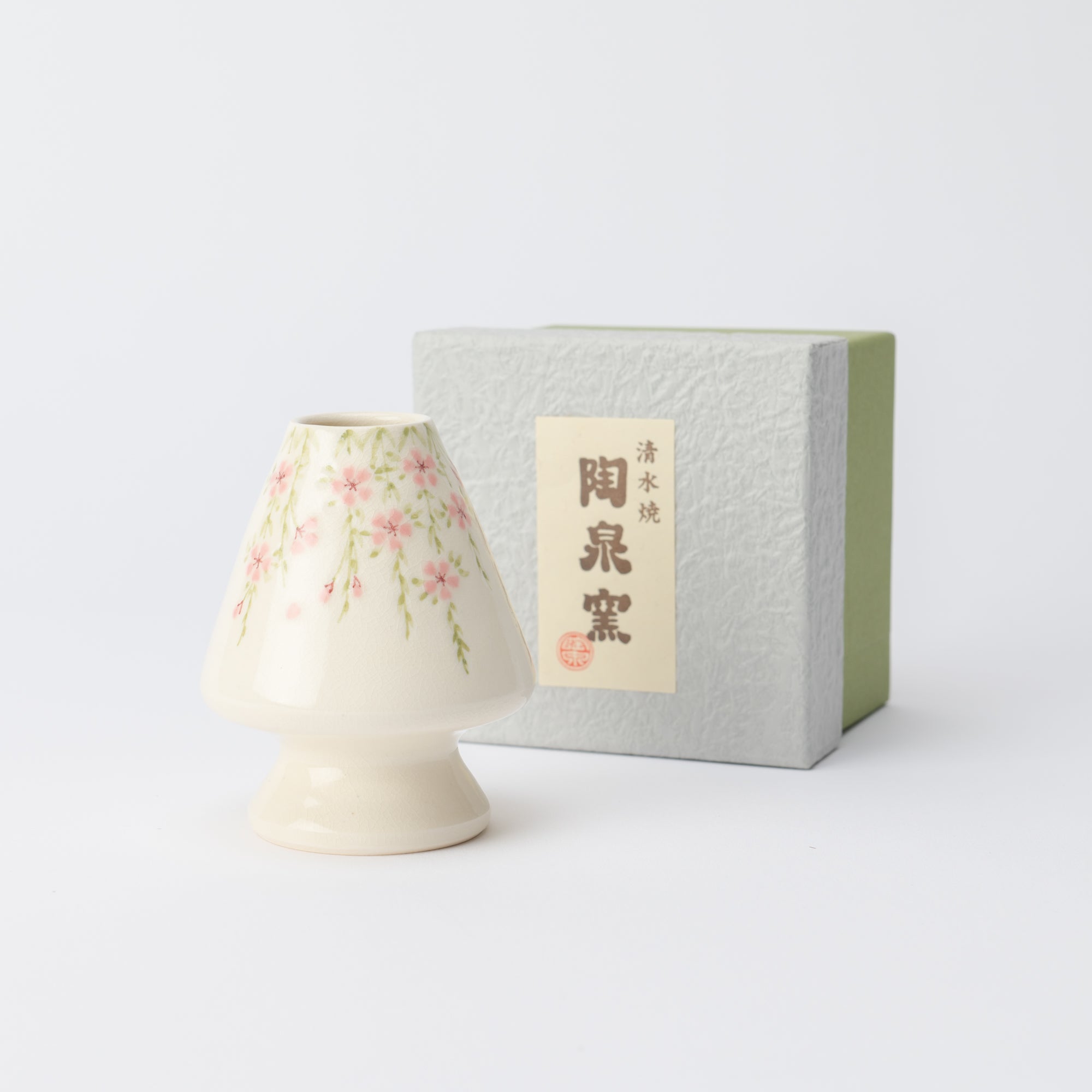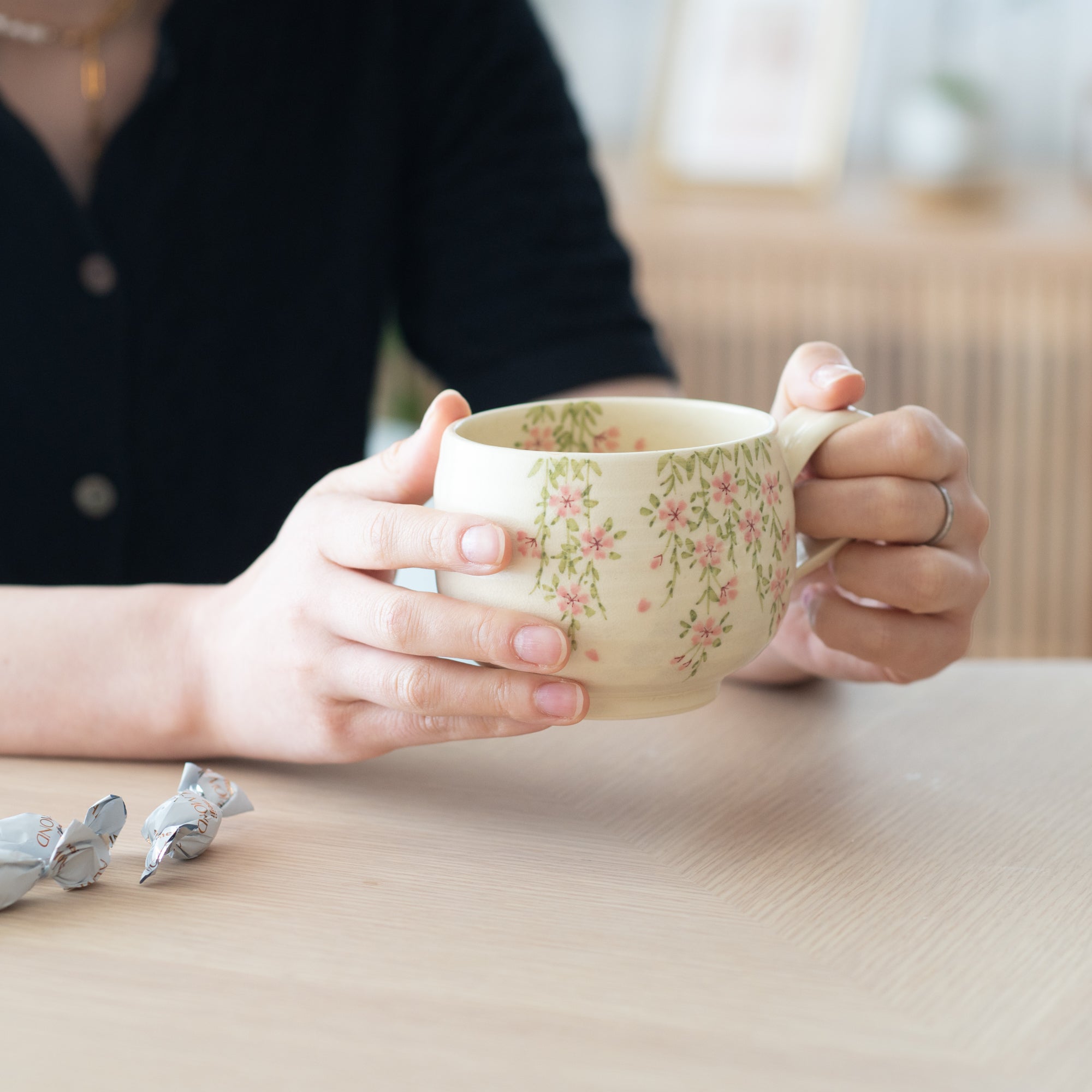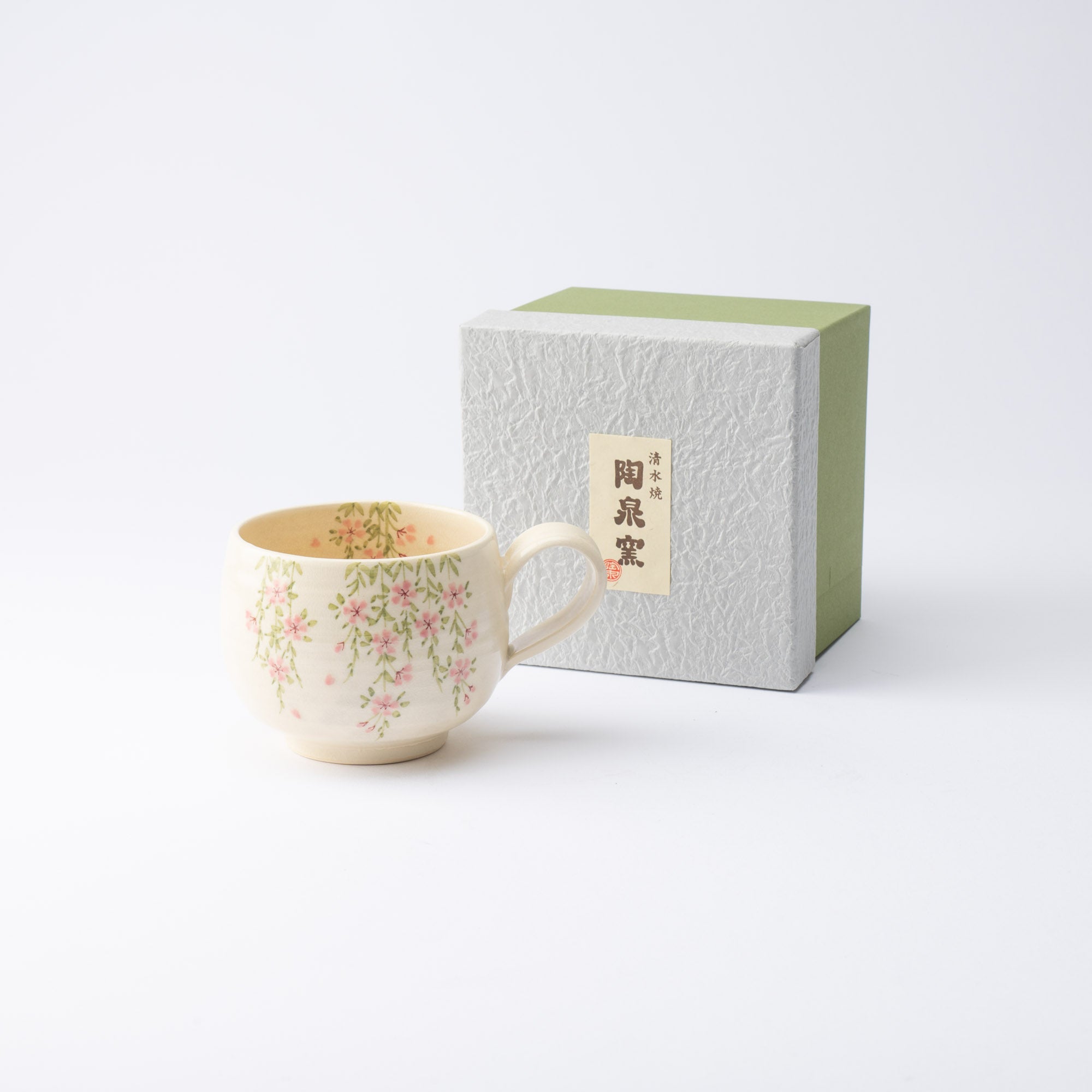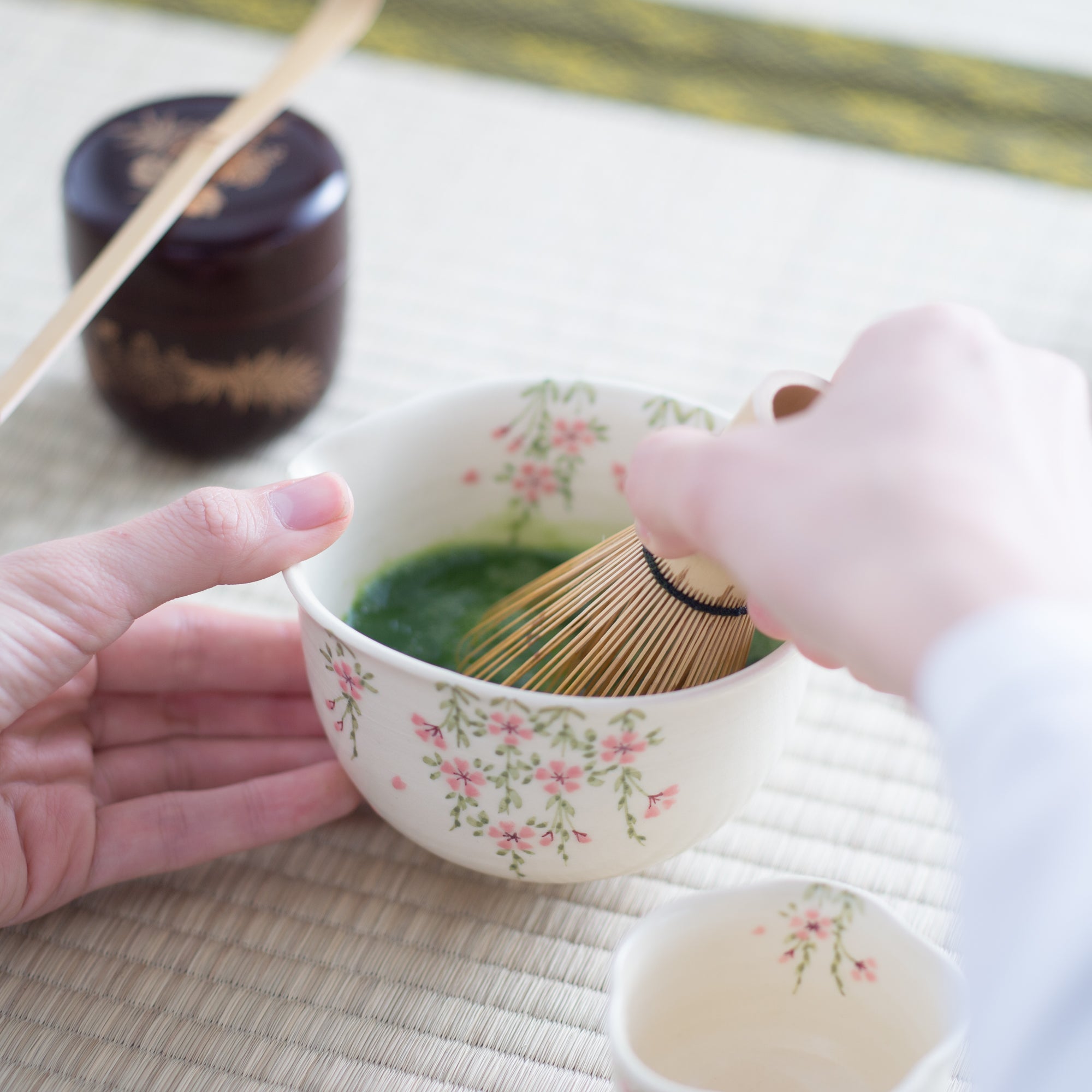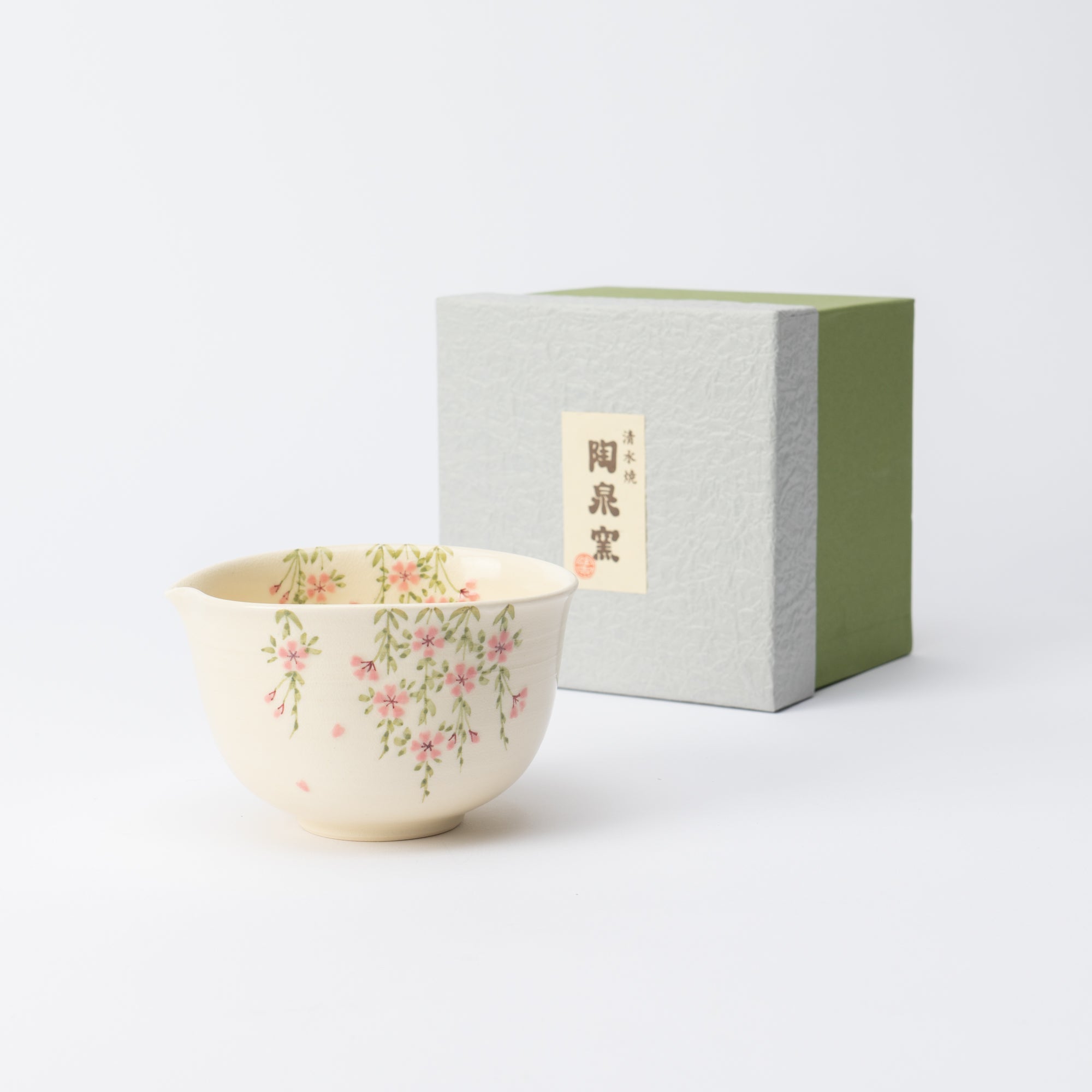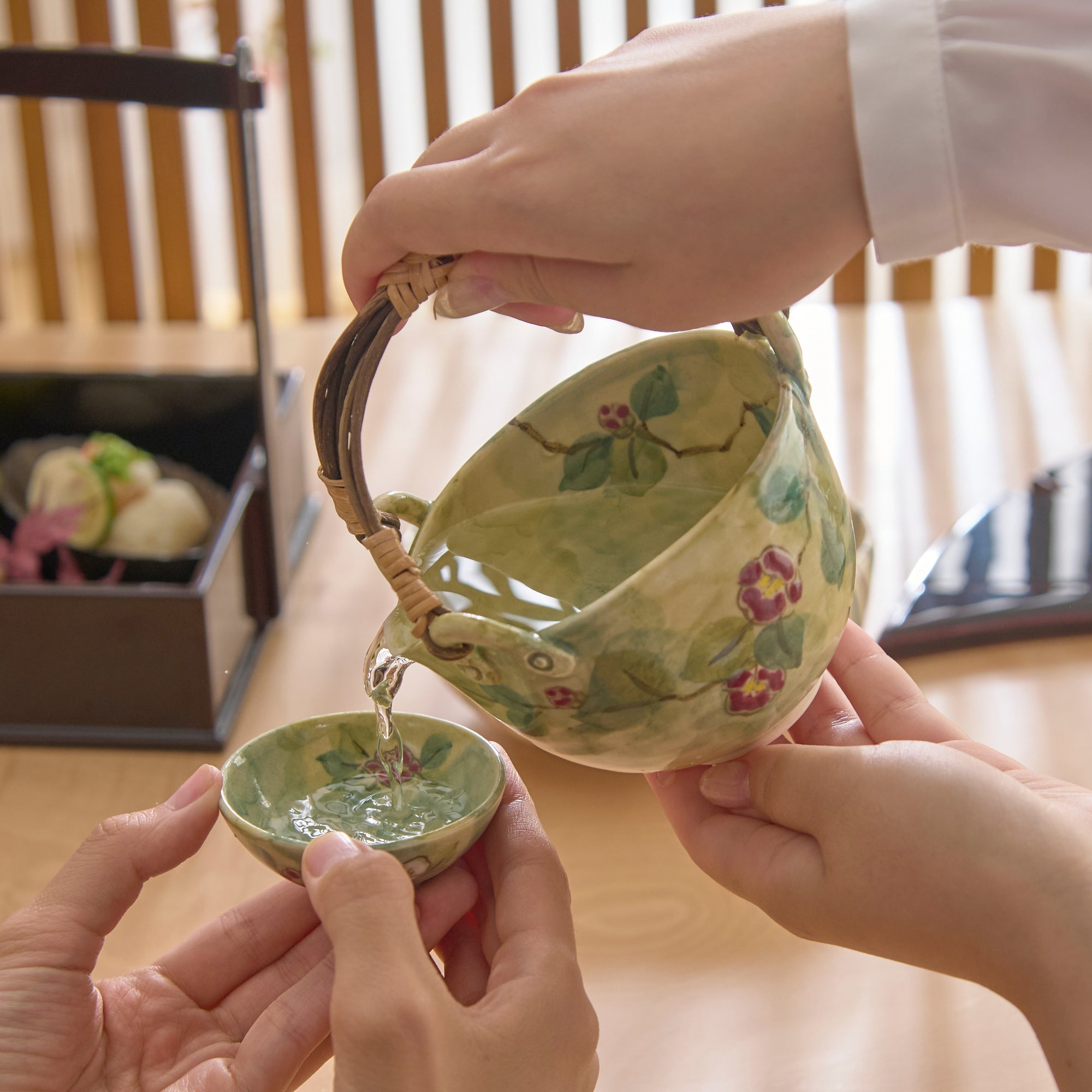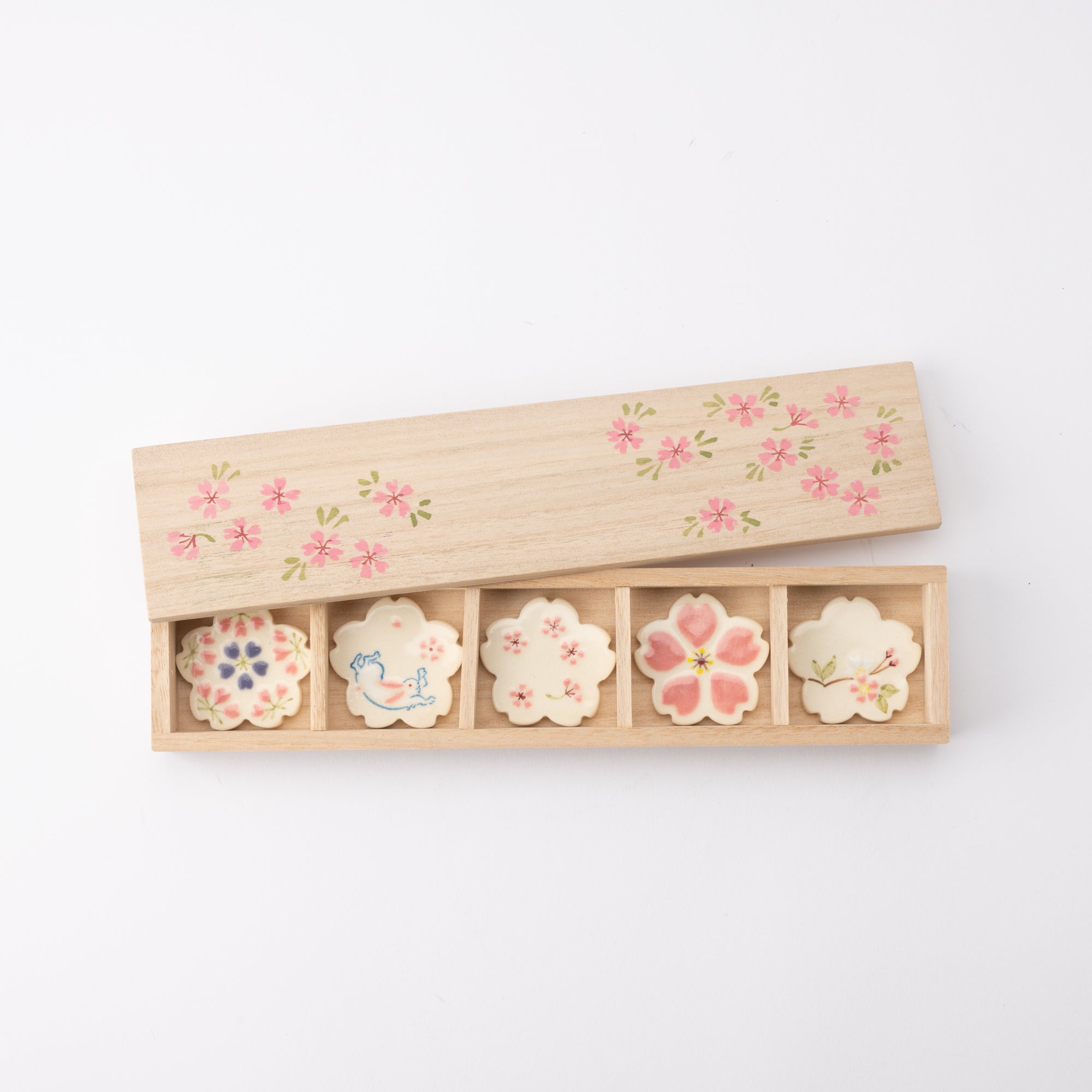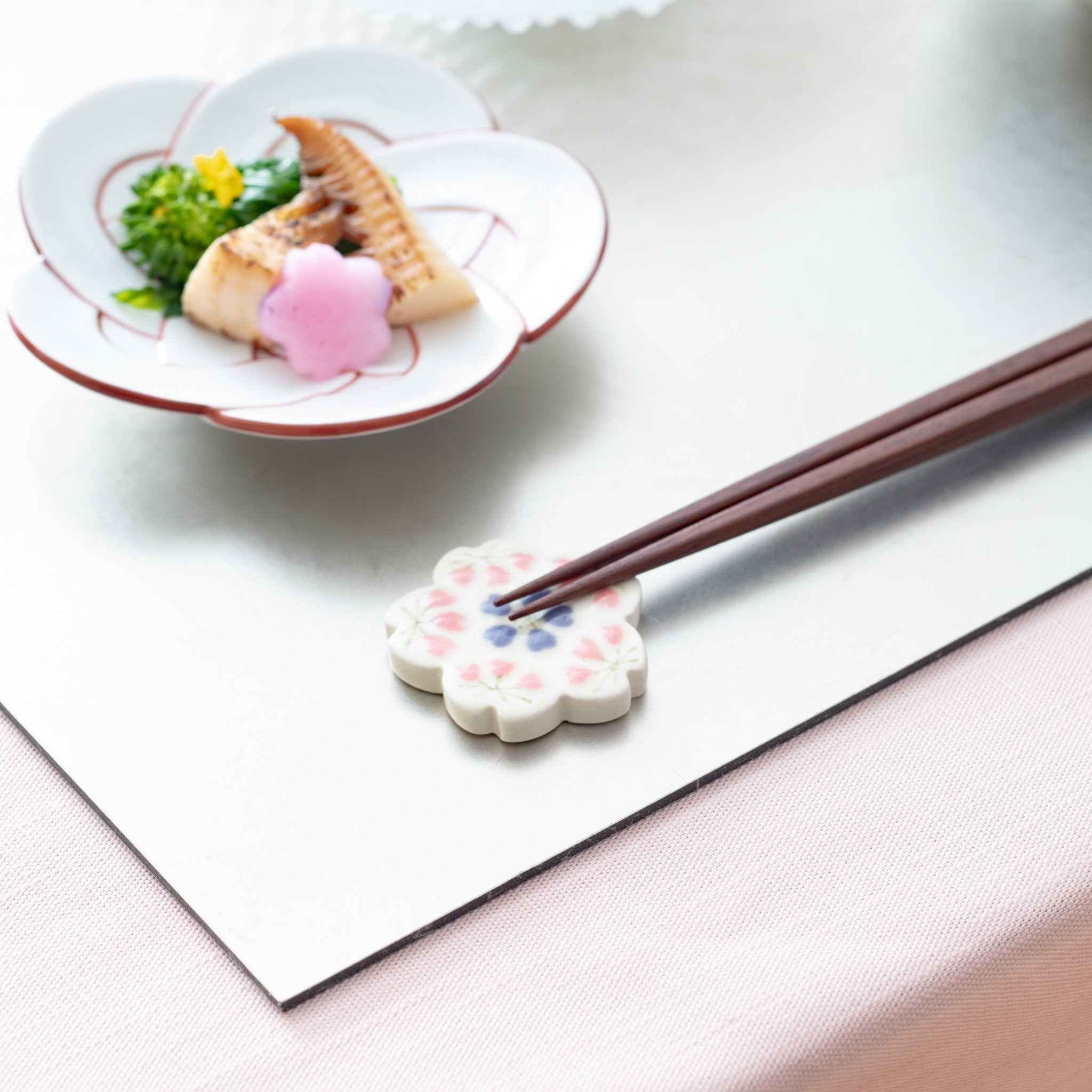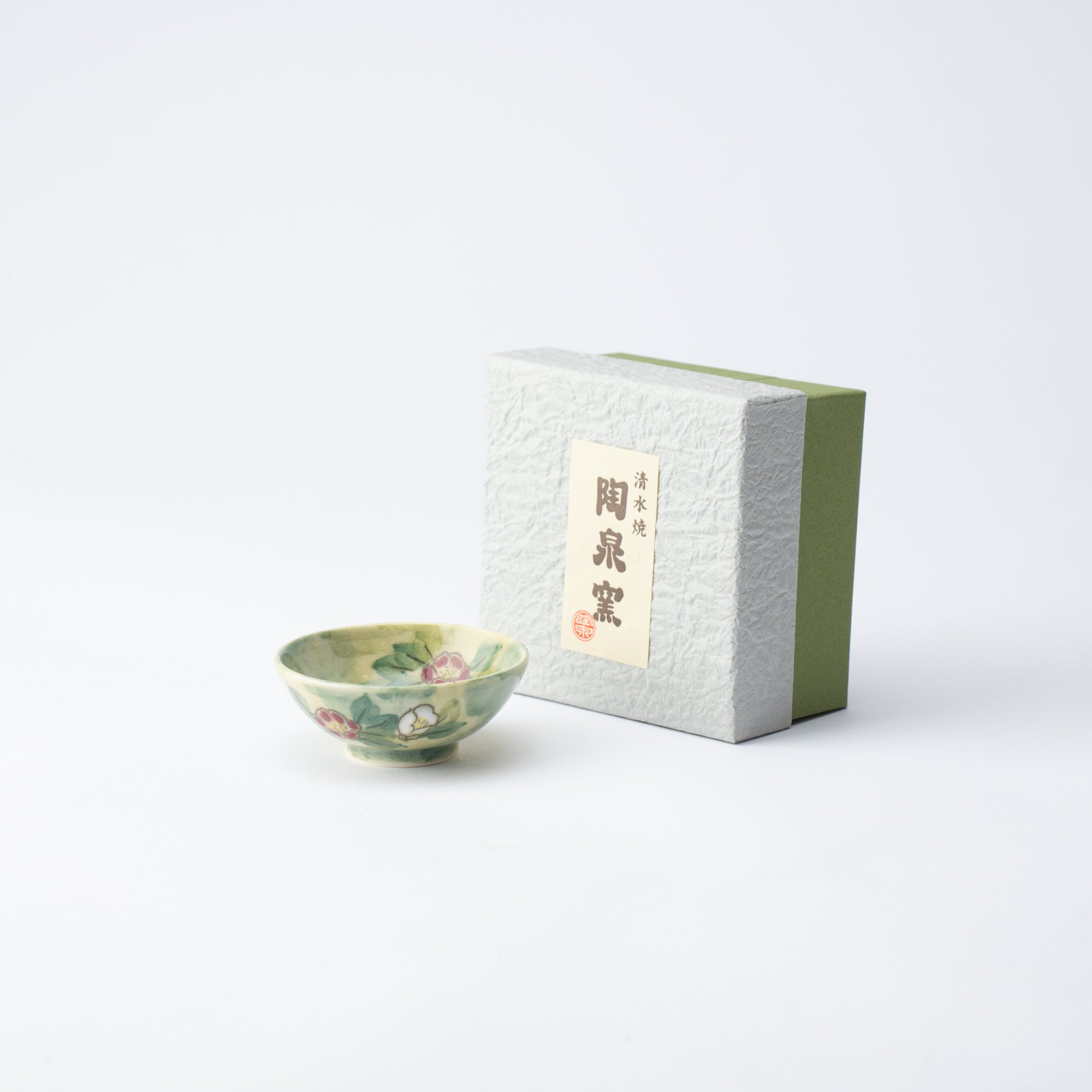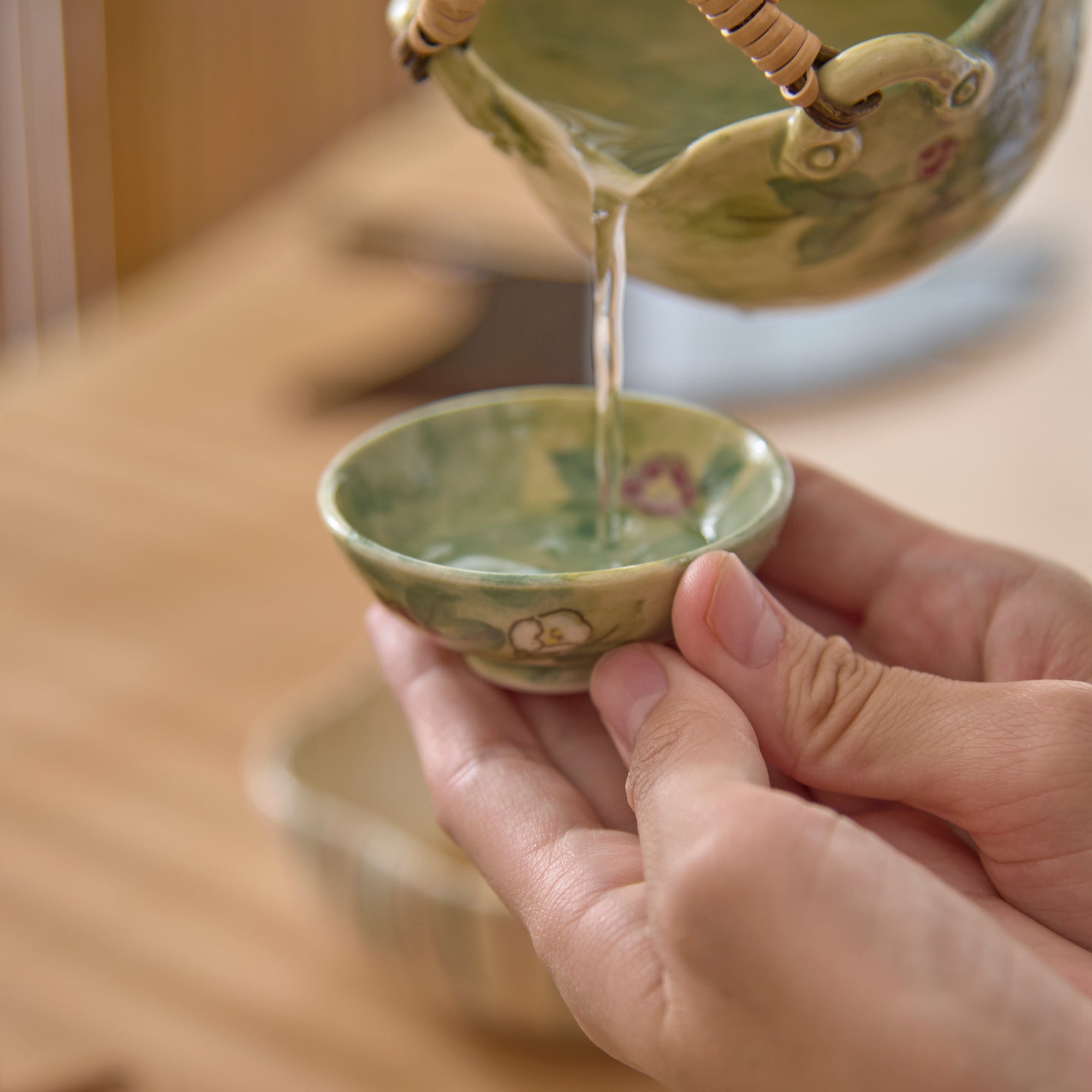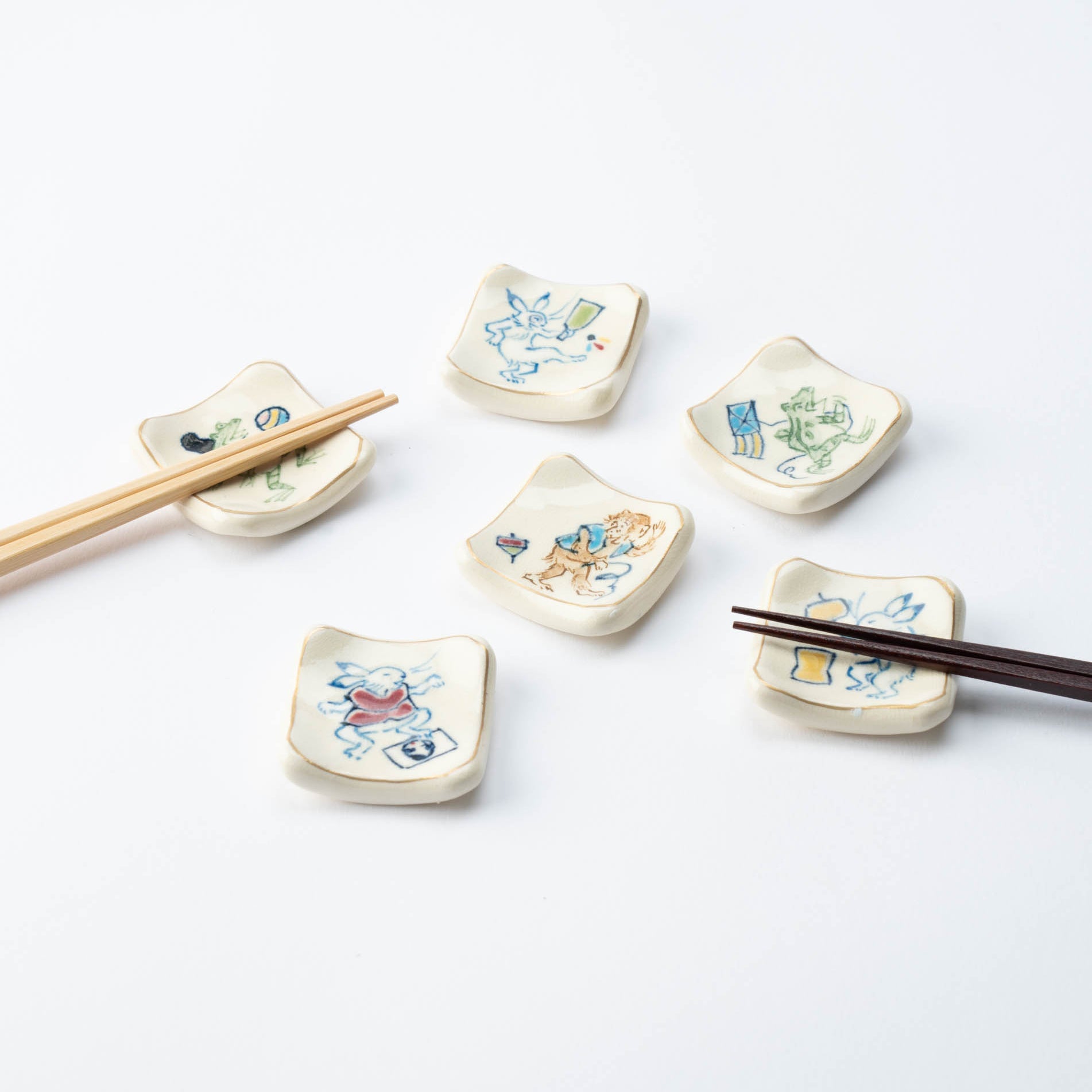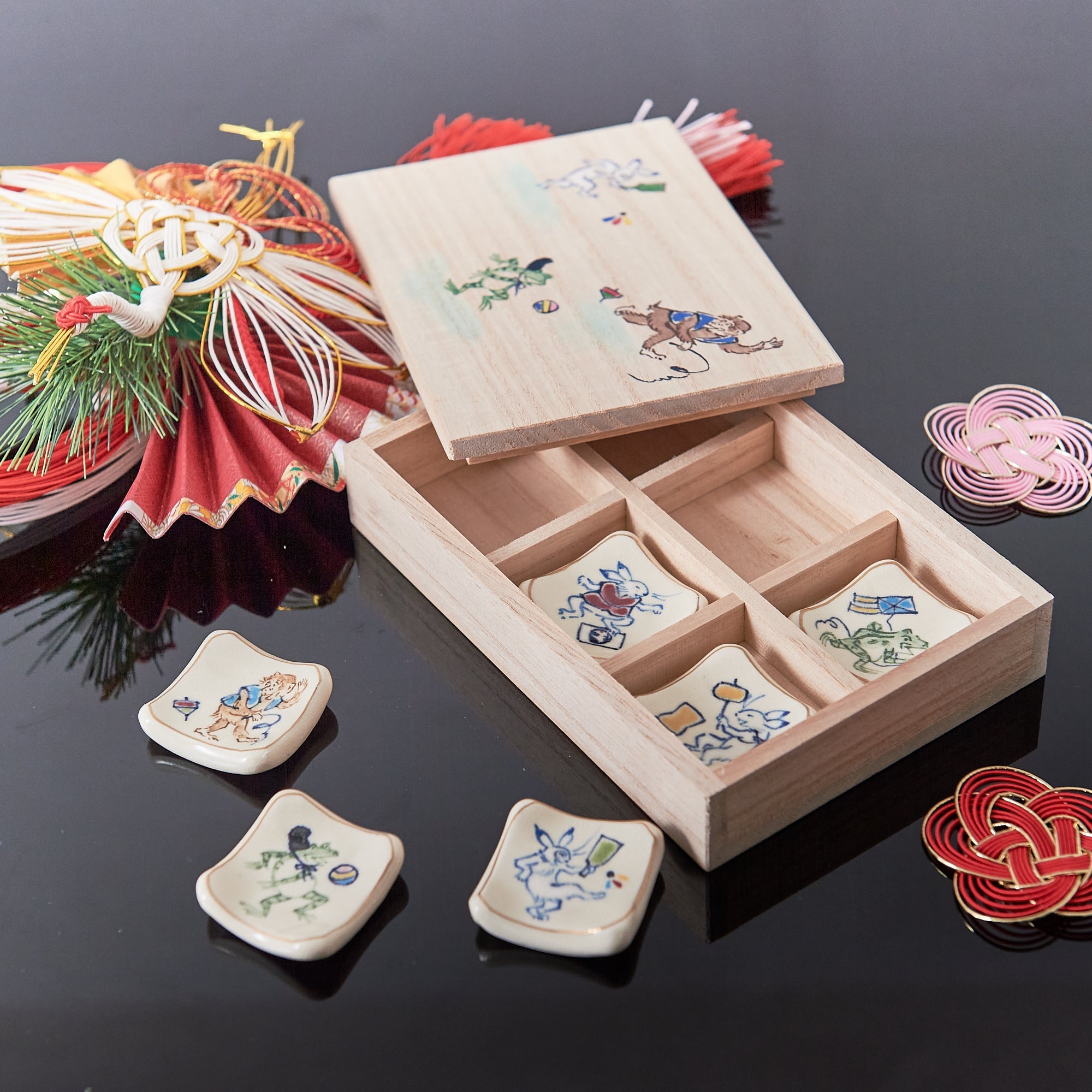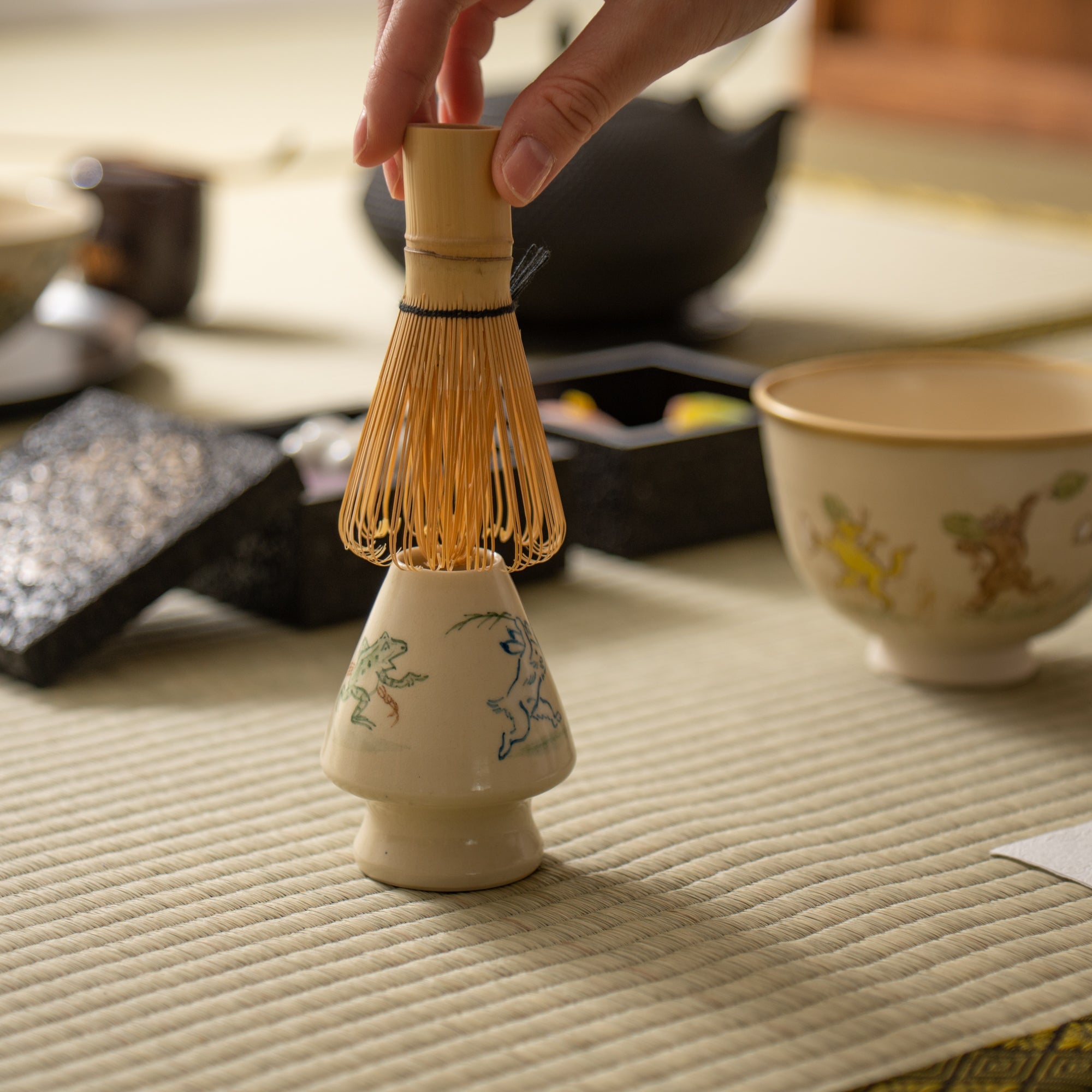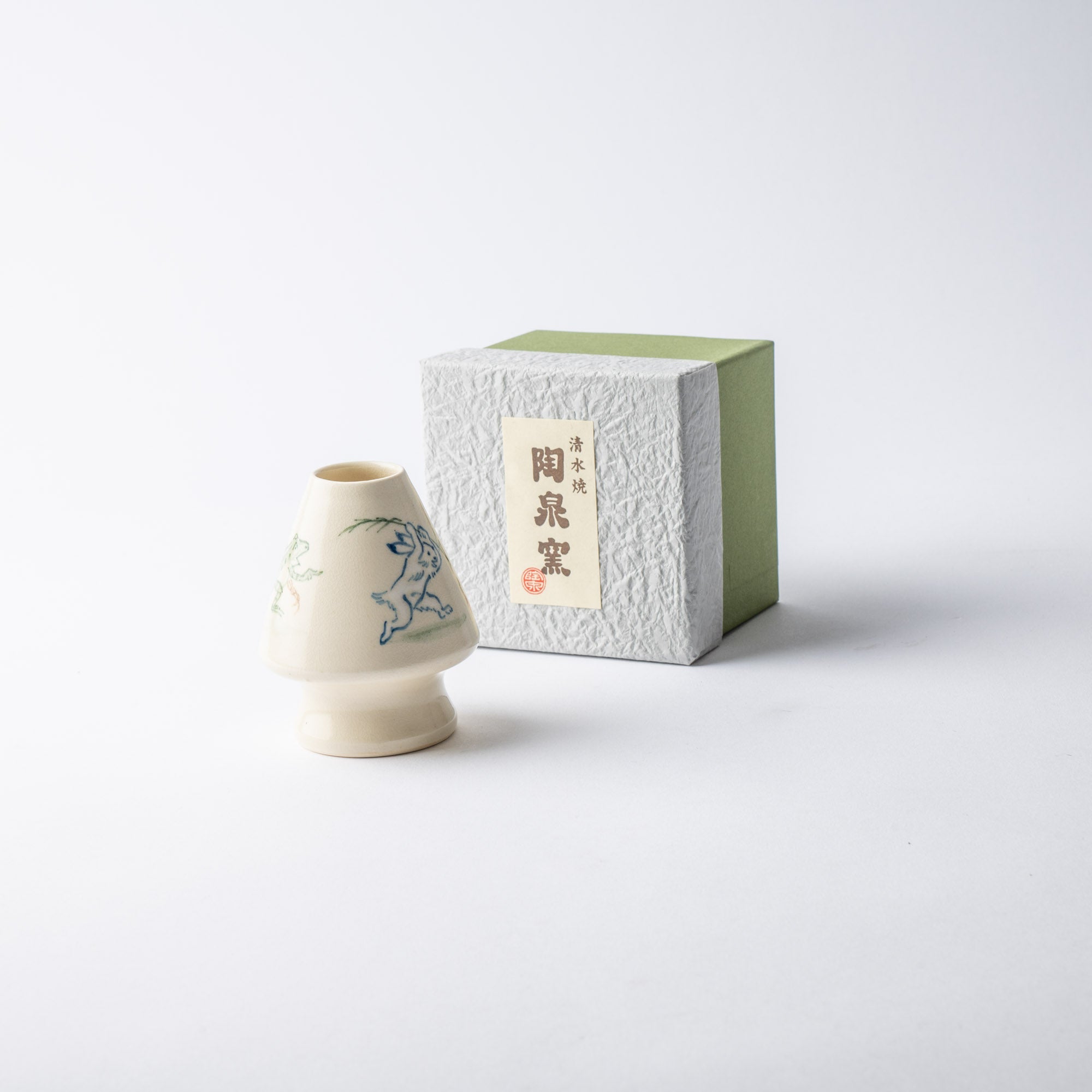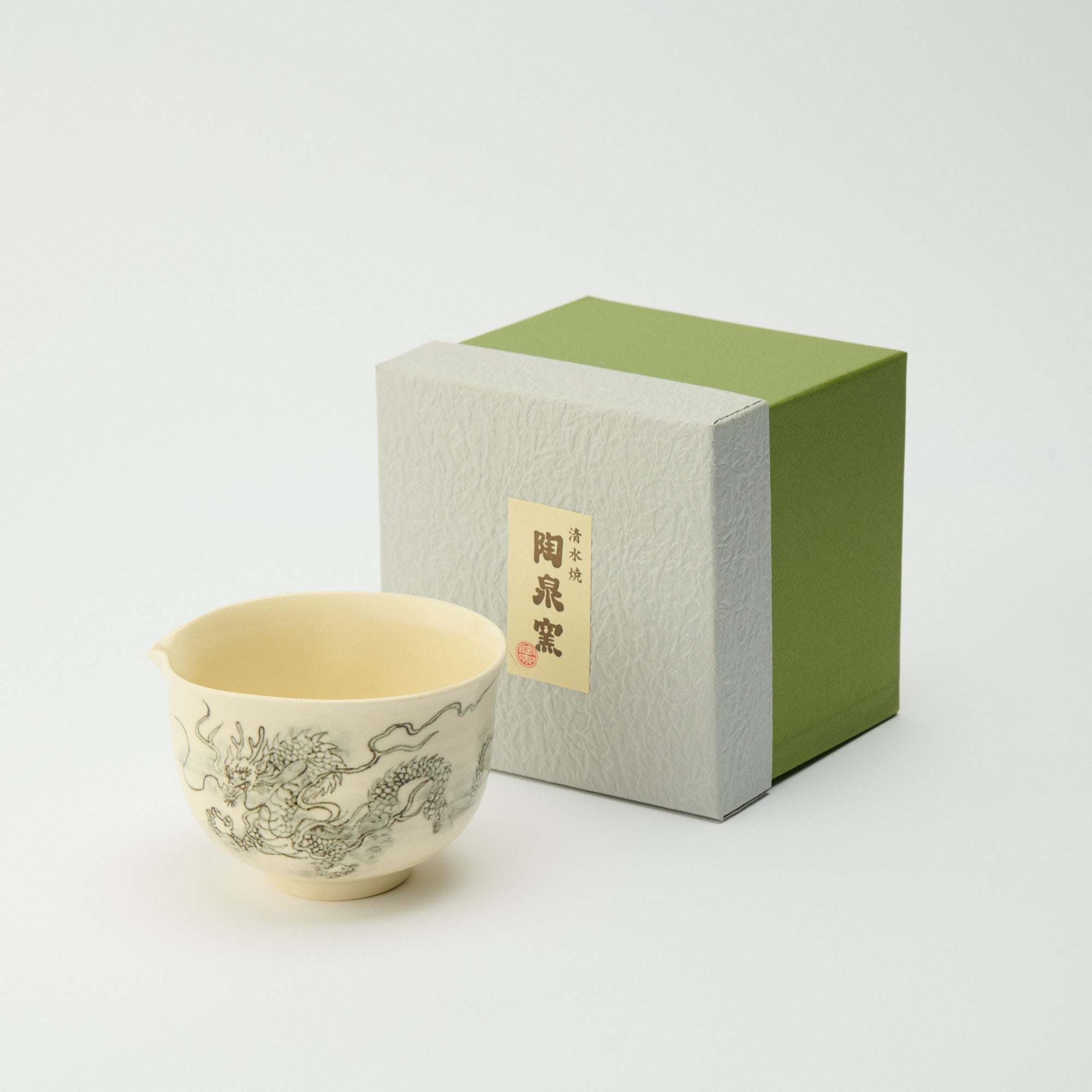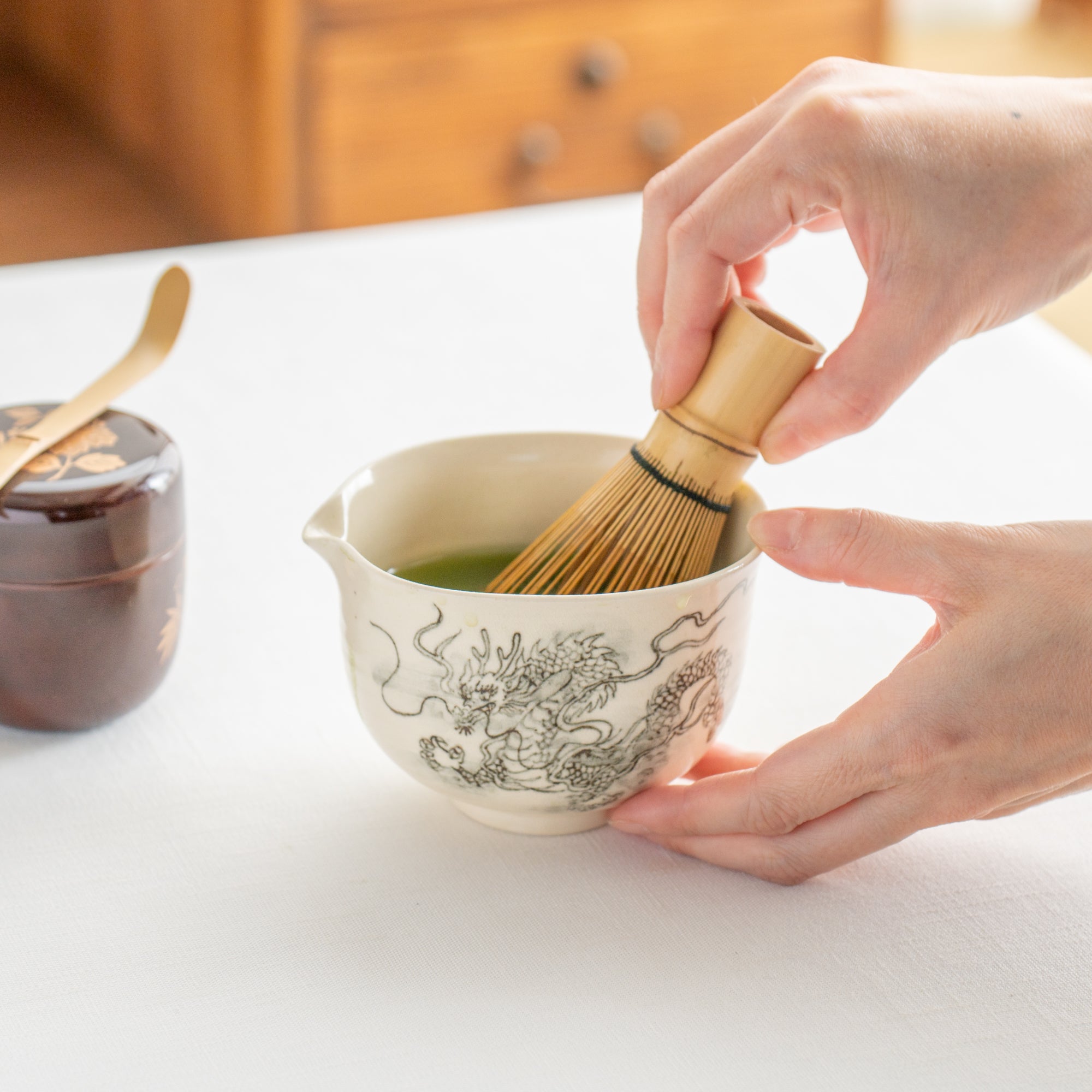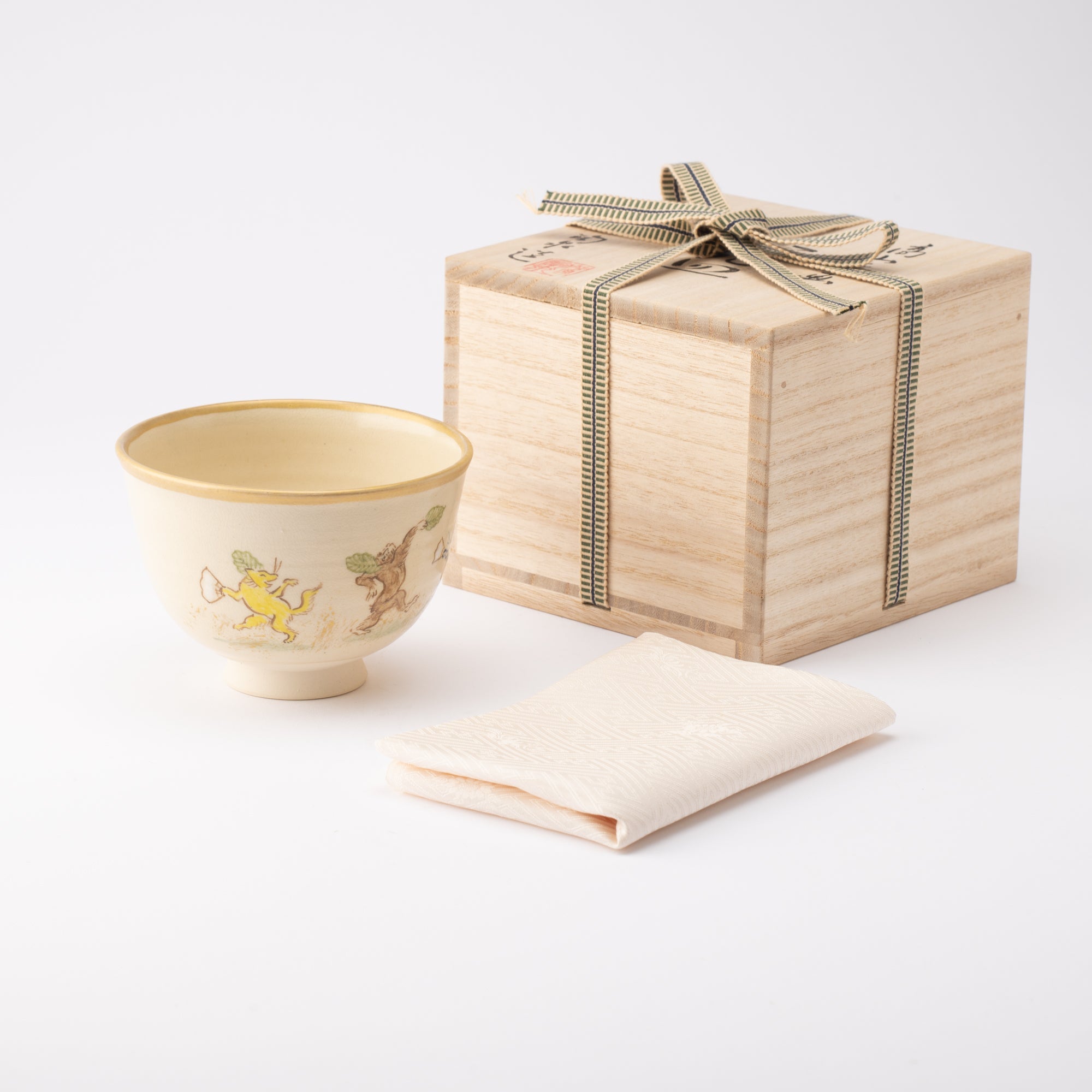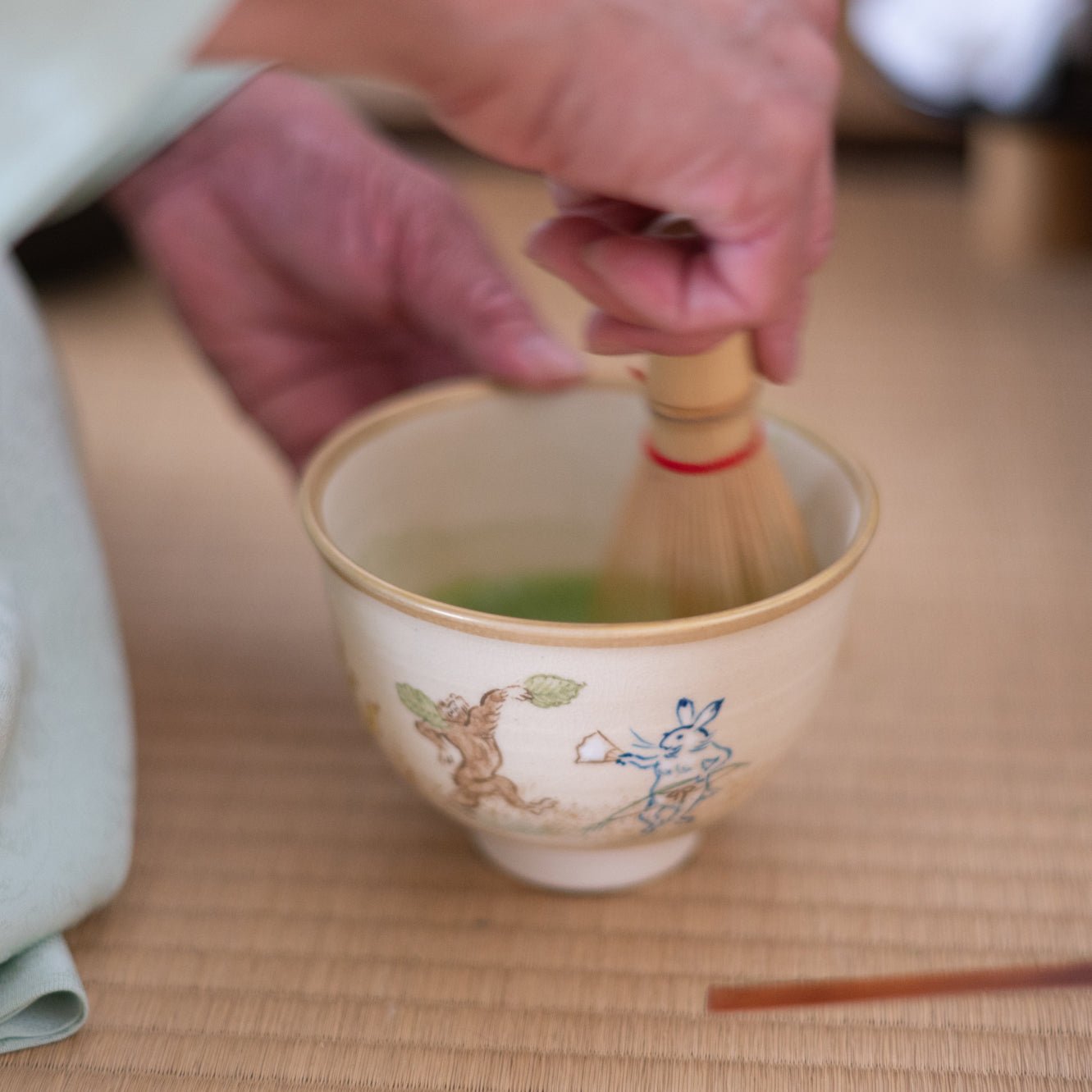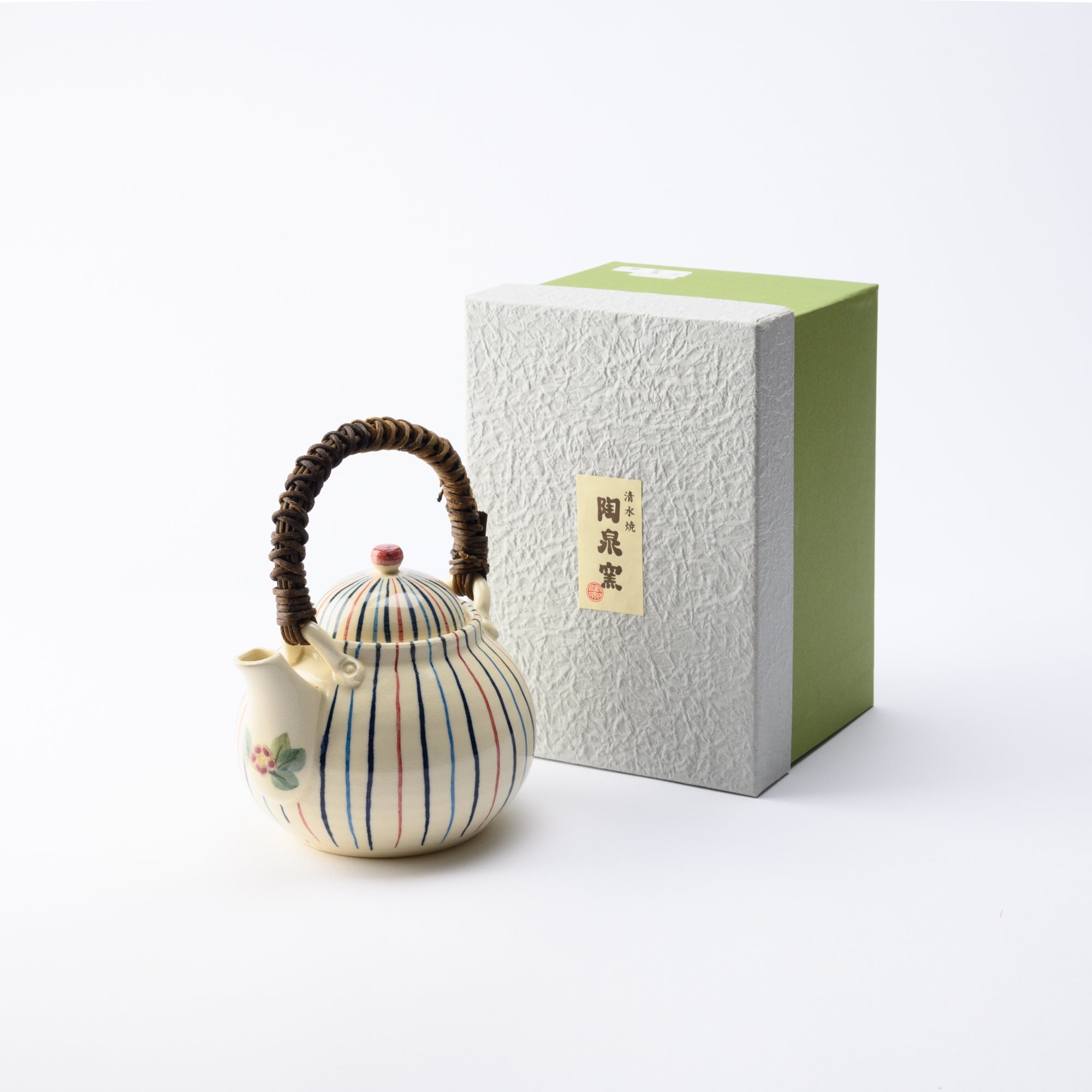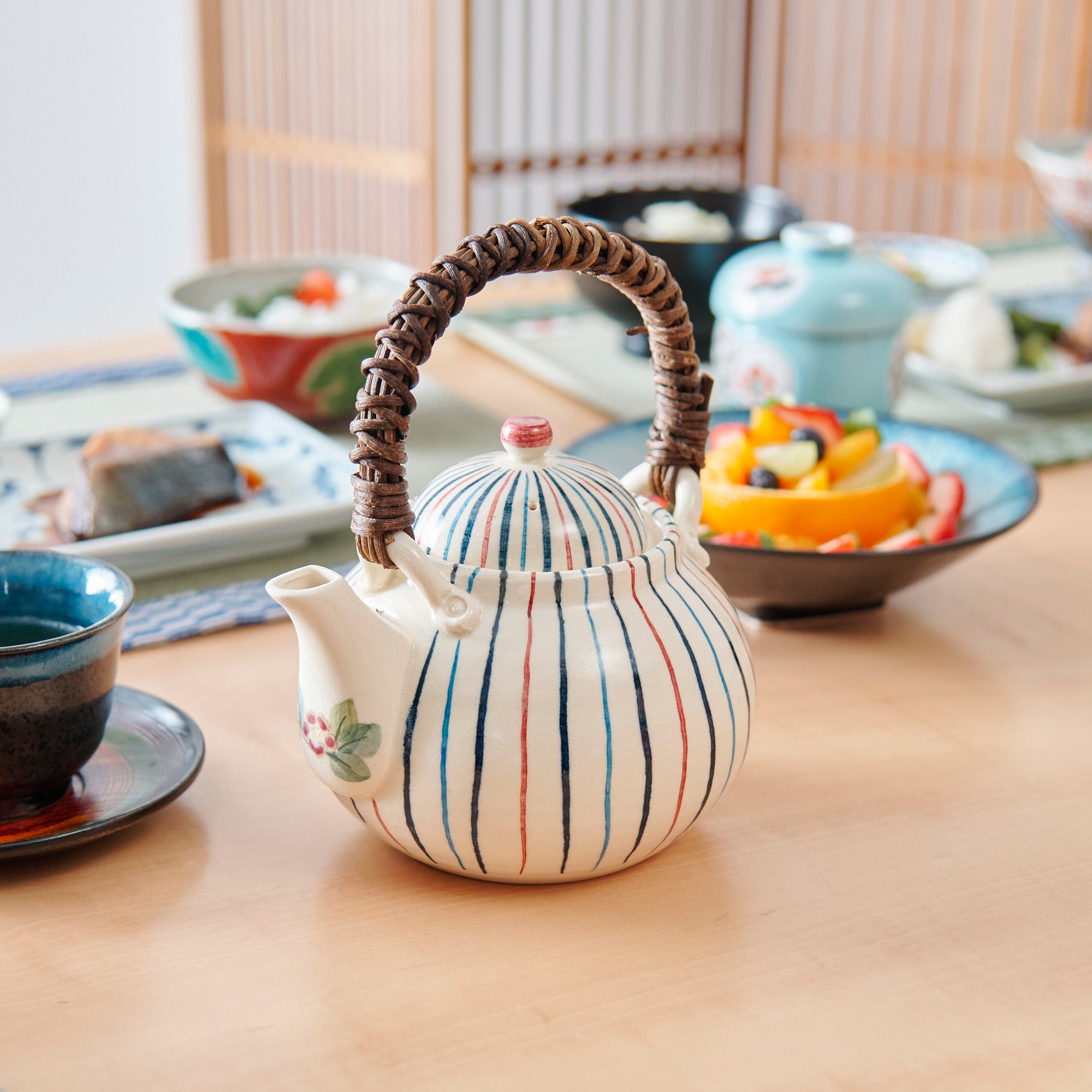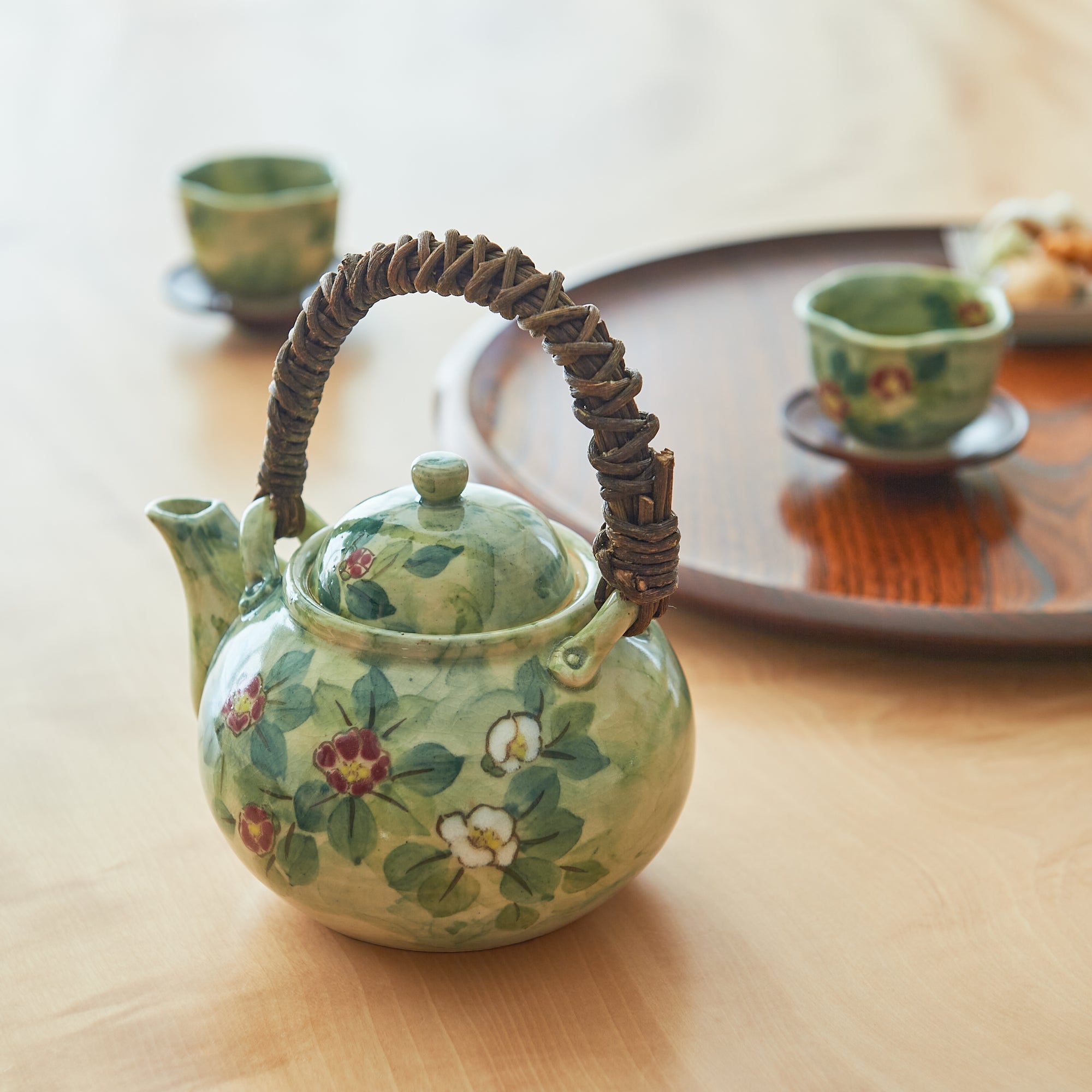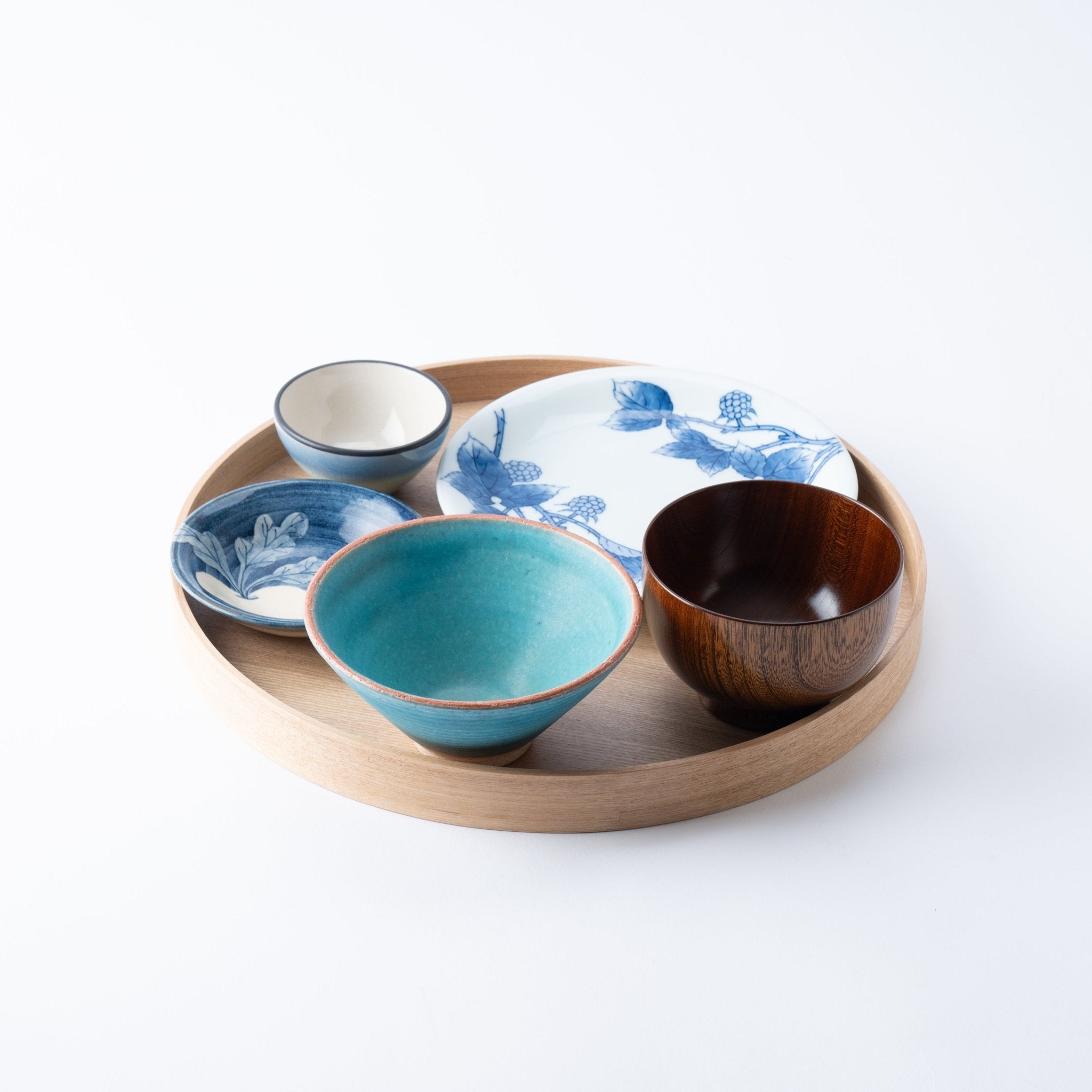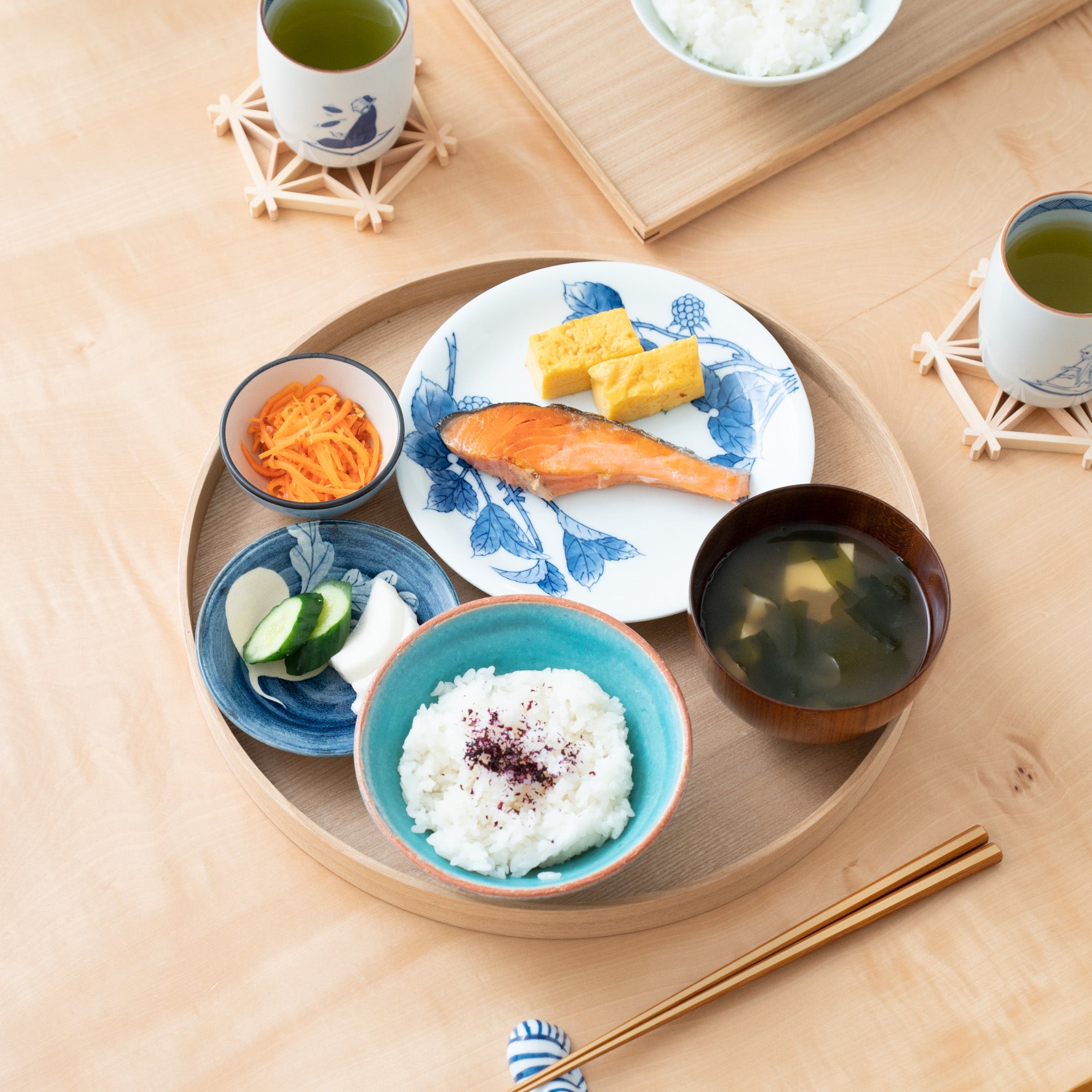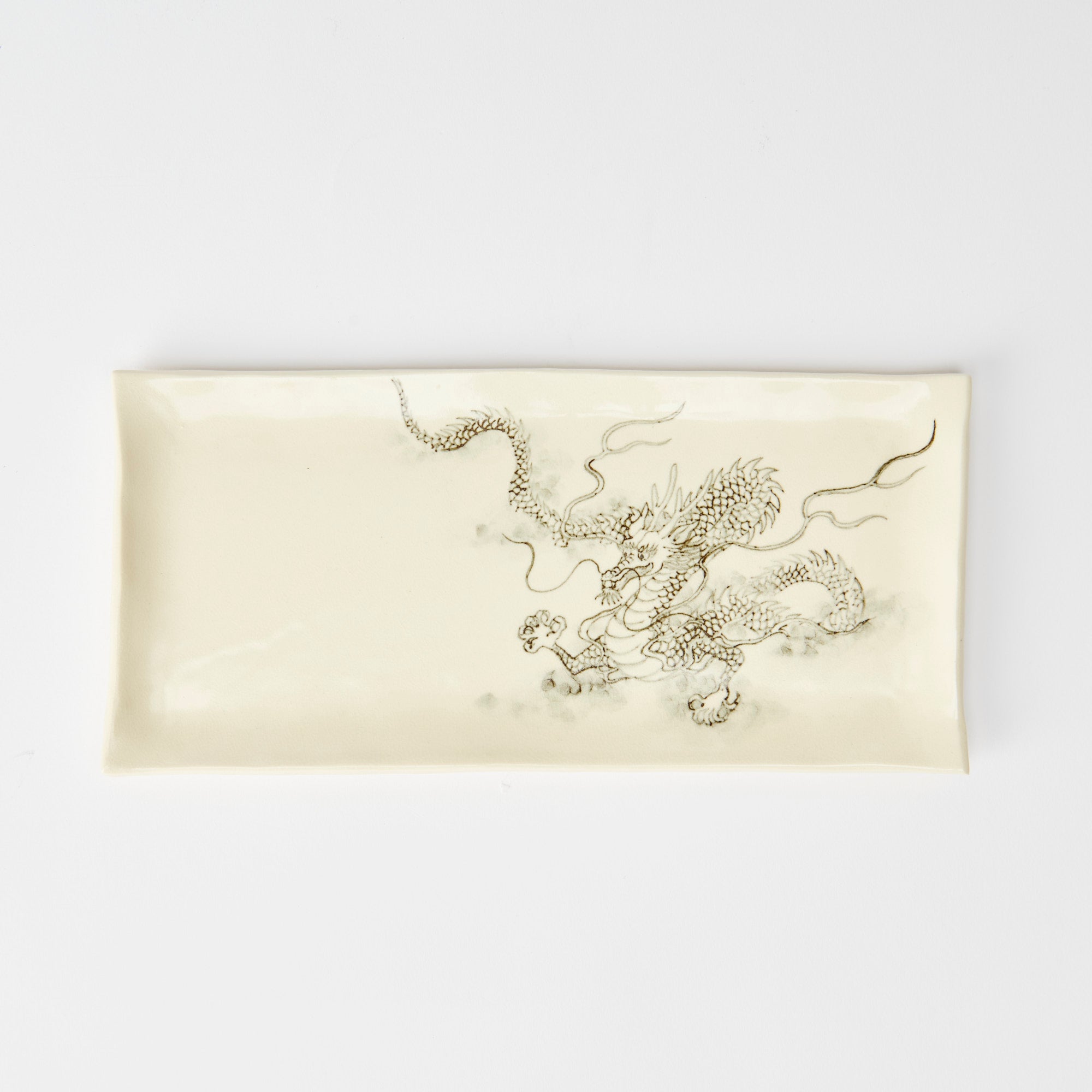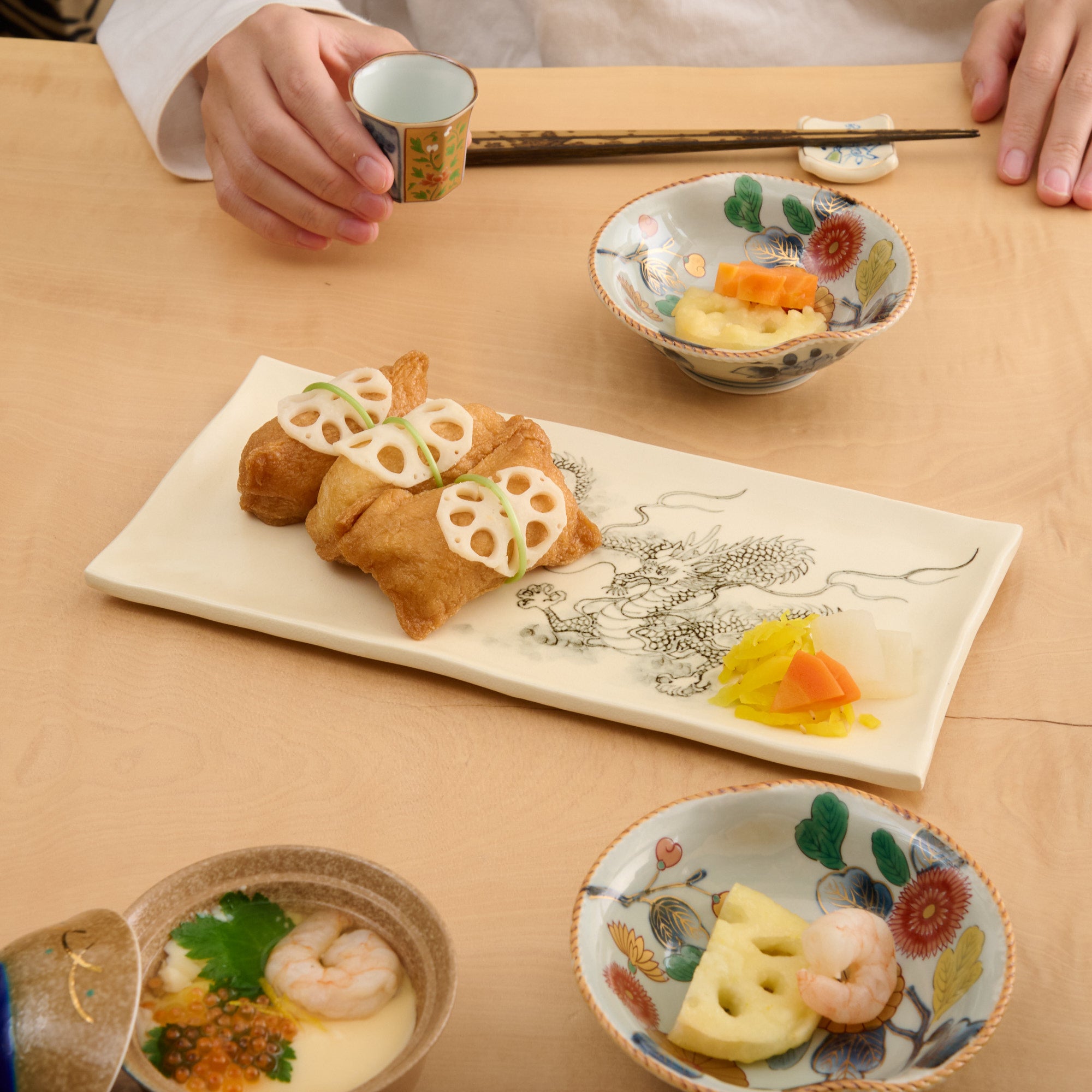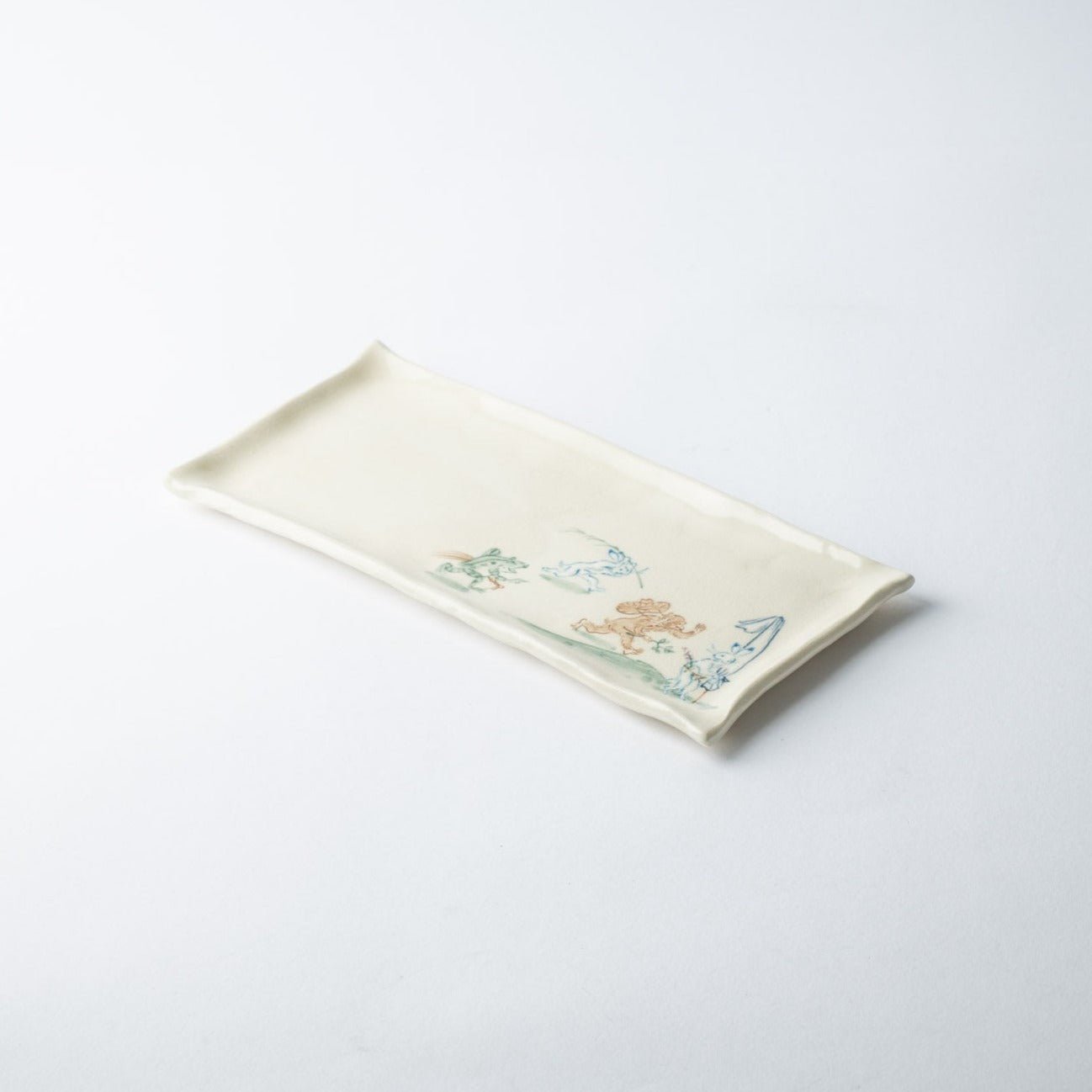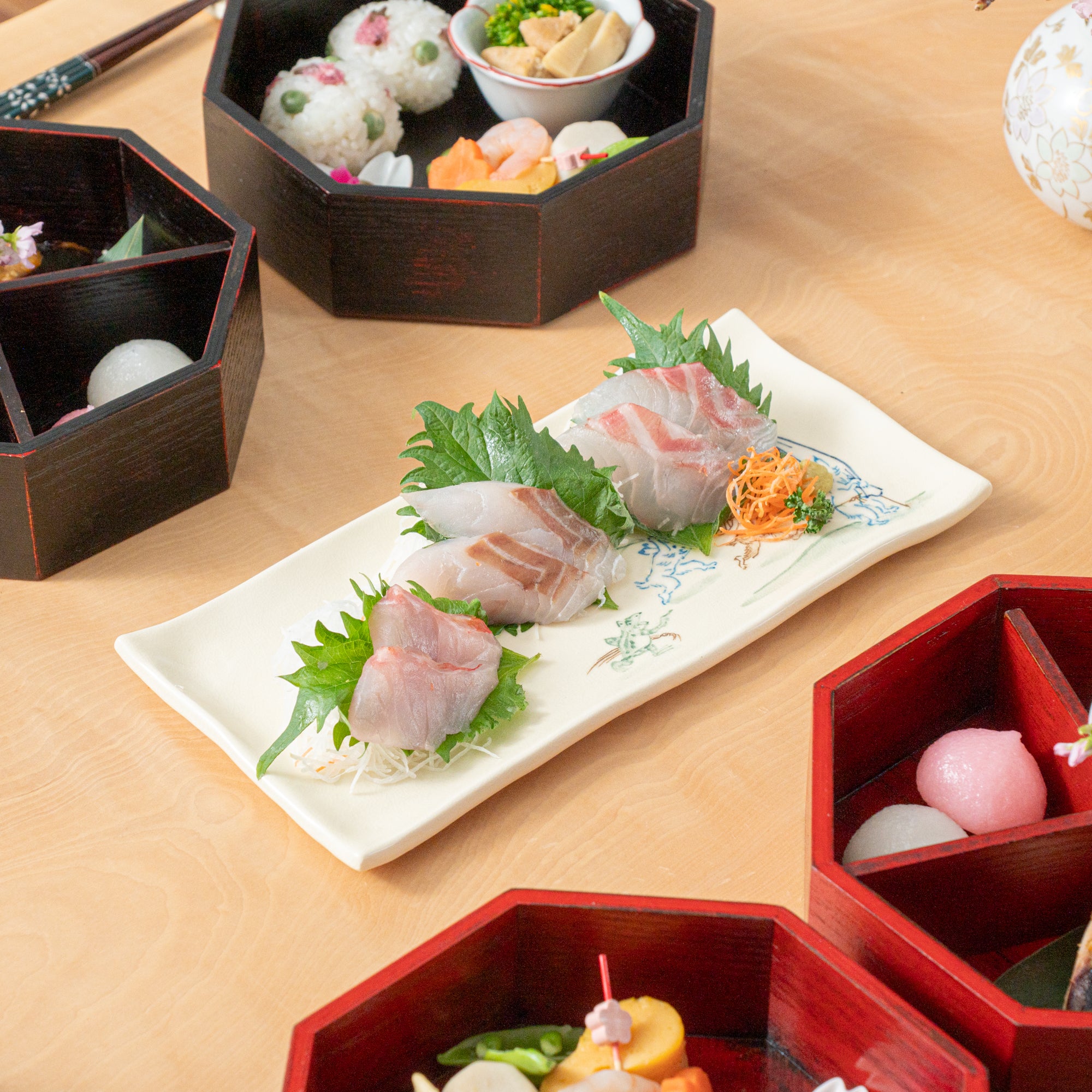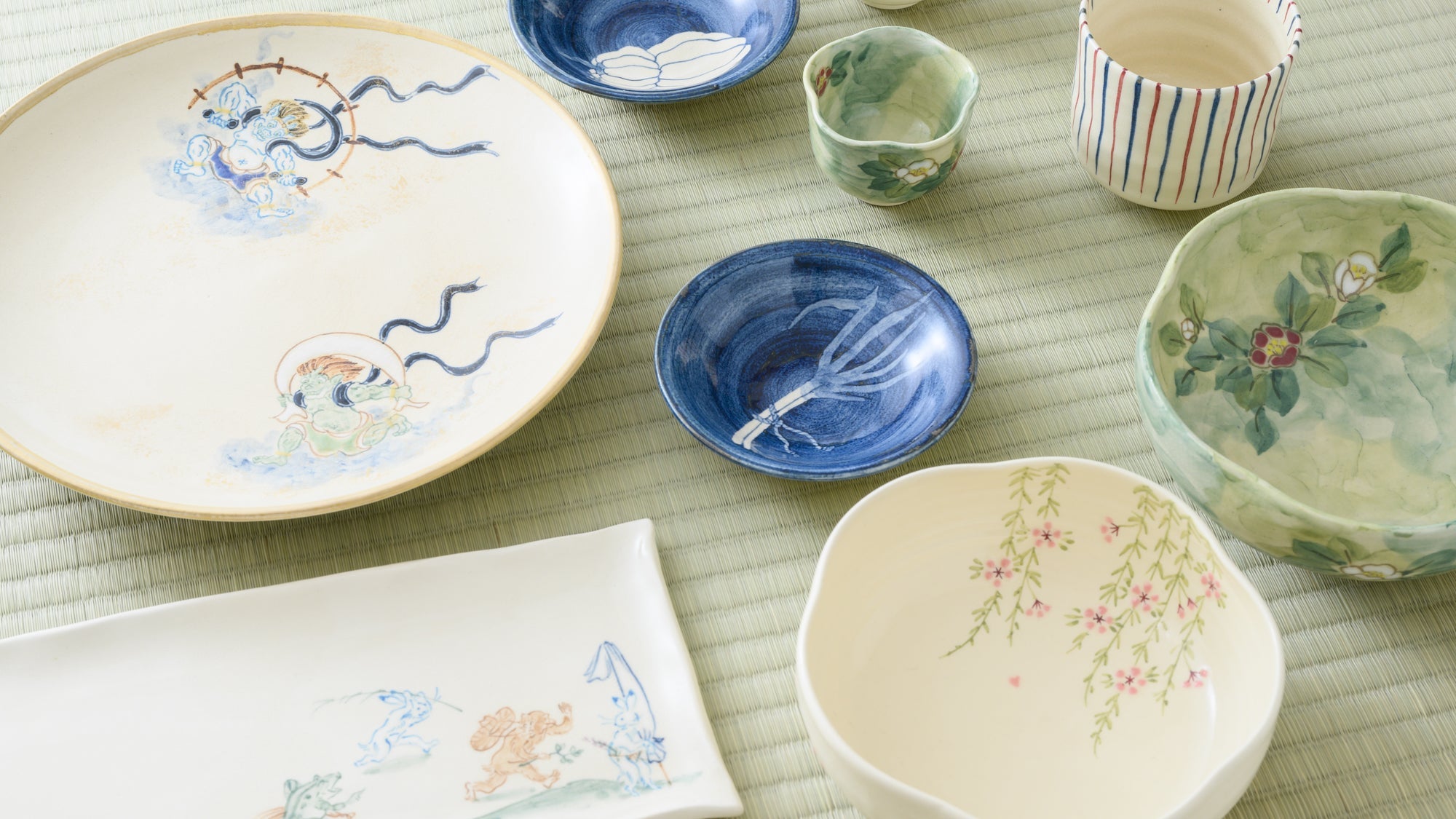
Tosen Kiln
Tosen Kiln was founded in 1868 as a Kiyomizu ware wholesaler. In 1944, it established a production studio in Mukomachi, a suburb of Kyoto, marking the beginning of full-scale Kiyomizu ware production. Today, the kiln operates in Gojo, Kyoto, continuing its legacy of craftsmanship.
Dedicated to refining its techniques and artistic sensibilities, Tosen Kiln embraces Kyoto’s traditional craftsmanship while adapting it for the modern era. Drawing inspiration from Edo-period master potter Nonomura Ninsei, it preserves his precise lathing techniques and luminous painting styles, blending them with clean lines and warm tones to create pieces that resonate with contemporary aesthetics.
Series
Majestic dragons soar across the porcelain, their five-clawed forms symbolizing power and fortune. This series captures the essence of Japanese-style painting, featuring the intricate motif of a dragon emerging from a misty, cloud-like background. Crafted with kyu-gosu, a rare blackish-blue pigment rediscovered through generations of tradition, the process demanded extensive trial and error to achieve its smooth gradations—a challenge beyond that of standard gosu. Each piece is meticulously hand-painted by a single artisan with over a decade of experience, blending strength with refined craftsmanship.

Experience the unique charm of Kyoto's celebrated produce with bowls and small plates from our Kyoto Vegetables Series. The distinct shapes and textures of seasonal Kyoto vegetables, such as Kamo eggplants and Manganji peppers, are beautifully expressed in the serene blue and white hues of sometsuke. Tosen Kiln's yellowish cream-white Kiyomizu ware enhances the rustic beauty of these designs. Bring a touch of Kyoto's tradition and natural bounty to your table with this exquisite collection.

Sakura
Springtime in Kyoto is adorned by a delicate tapestry of sakura petals and leaves. Among these blossoms, the weeping cherry trees, or Gion-zakura, hold a special place as emblematic of the city's unique atmosphere. Green and pink hues pop against the yellowish cream-white base, evoking images of leaves and blossoms gently swaying and drooping down gracefully. Immerse yourself in these intricate paintings that capture the essence of Kyoto's sakura.
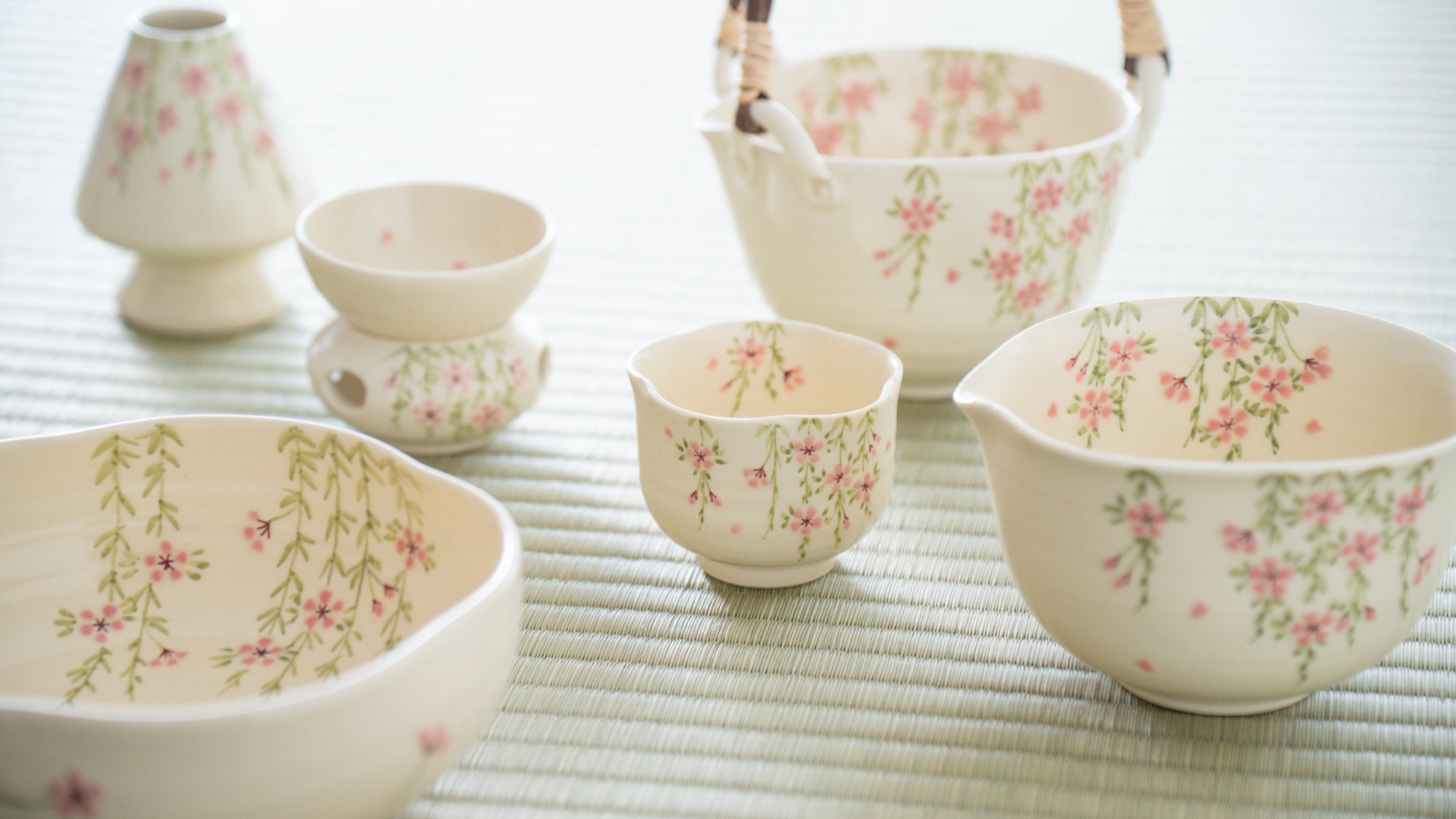
Camellia
The Camellia series serves as a tribute to the refined underglaze painting techniques that symbolize the kiln's commitment to traditional aesthetics and craftsmanship. Masterfully brought to life by artists skilled in Japanese style painting, each piece in the series showcases the artisan Taniguchi's evolved Camellia design, featuring a harmonious blend of dark and light greens, and the unique raised and glossy finish of red and white petals. The Camellia series encapsulates a balance of simplicity and elegance, reflective of Kyoto's esteemed ceramic legacy.
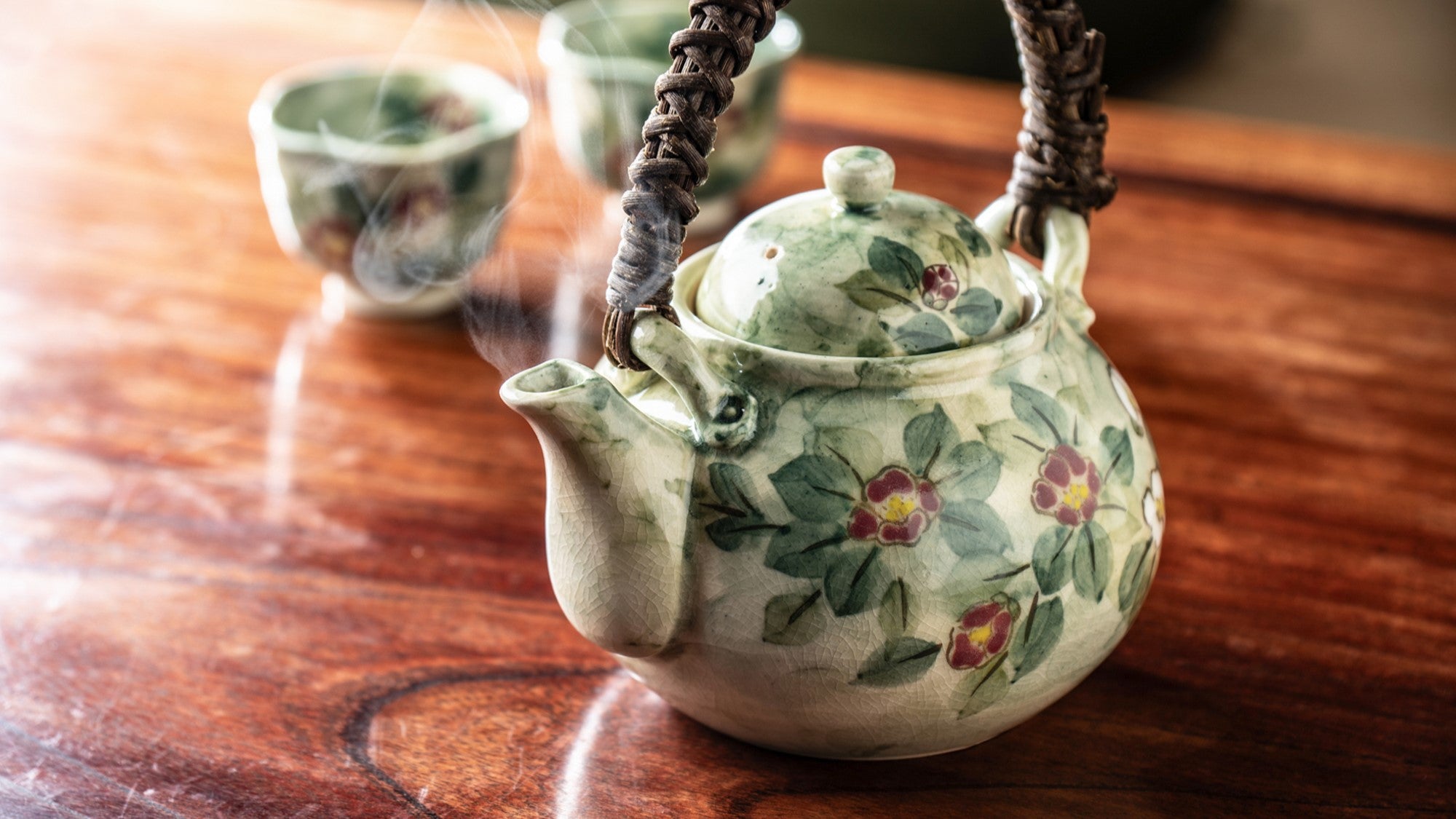
Kozan-ji Temple "Choju Giga
These colorful pieces feature a famous illustrated scroll named "Choju Jinbutsu Giga" which is a caricature picture scroll depicting anthropomorphic animals and their playfulness, dating from the mid-12th to mid-13th centuries. These designs from the picture scrolls are designated as a Japanese national treasure in Kozan-ji Temple in Kyoto. Please enjoy these humorous and playful works intricately depicted through Tosen Kiln's painting techniques.
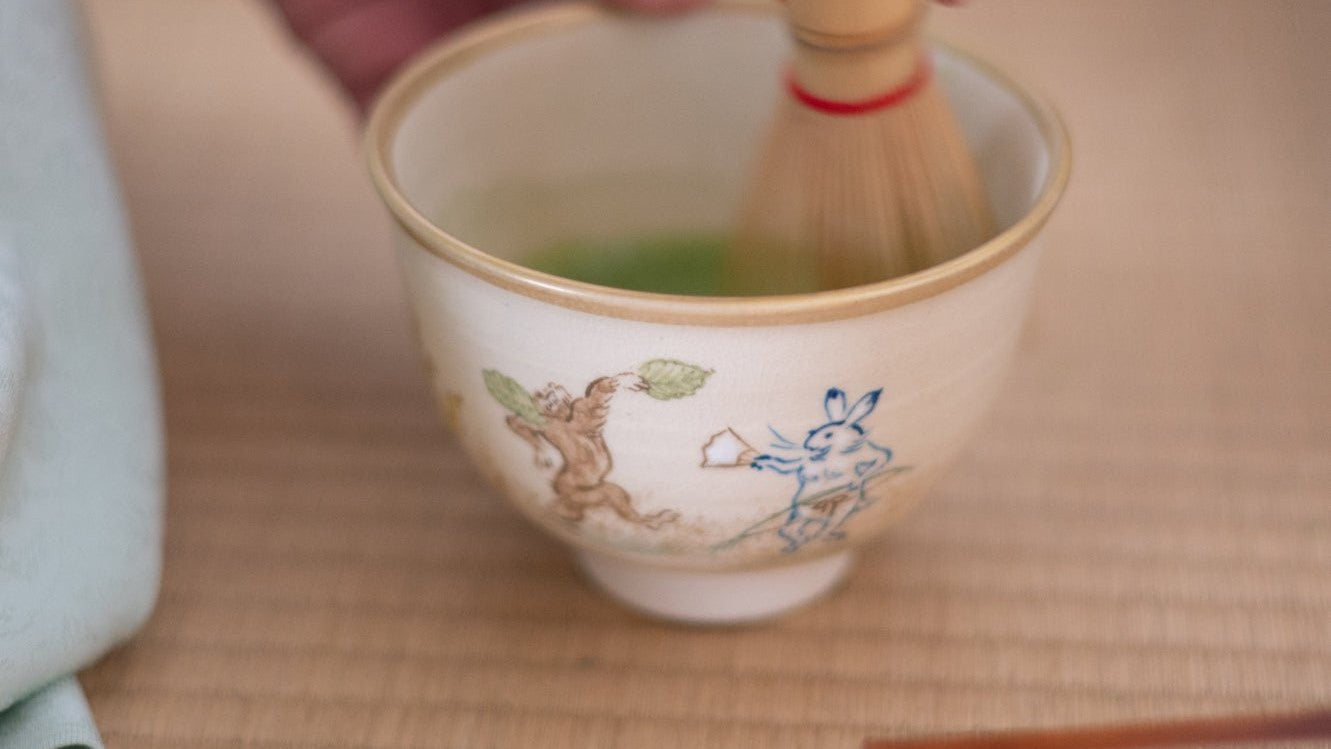
Wind God and Thunder God
Powerful depictions of the "Wind God and Thunder God," a masterpiece by Tawaraya Sotatsu–a painter of the Edo period (c.1603-1867), is available to enjoy through tableware. Since ancient times, people in Japan have believed that the wind blows and thunder rumbles because of the presence of these two gods in the sky between heaven and earth. It is believed that the wind and thunder gods are beneficial for victory and business prosperity. Enjoy these hand painted works representative of Tosen Kiln's technique.
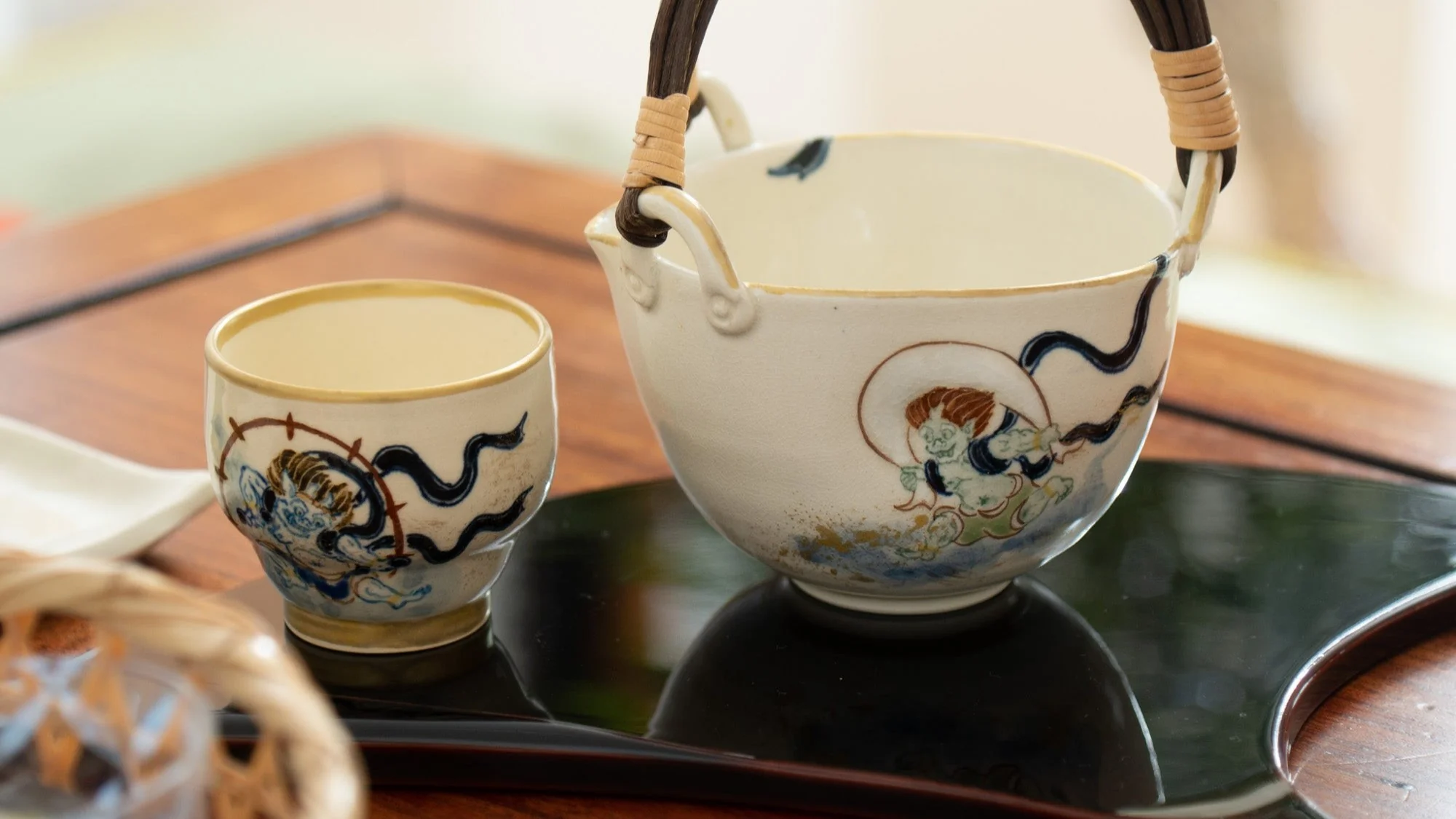
The Tokusa series presents a fresh take on the traditional blue Horsetail design through Taniguchi's artistic adaptation. Infusing warmth and depth, Taniguchi has elegantly reimagined this pattern in two colors, enhancing the hand-drawn lines that stand in stark contrast to mass-produced printing. These meticulously penciled lines, gracefully complement the kiln's signature creamy-white bisque. Adding to its distinctiveness, intentional dents artfully punctuate the bisque's surface, breaking away from conventional round forms.
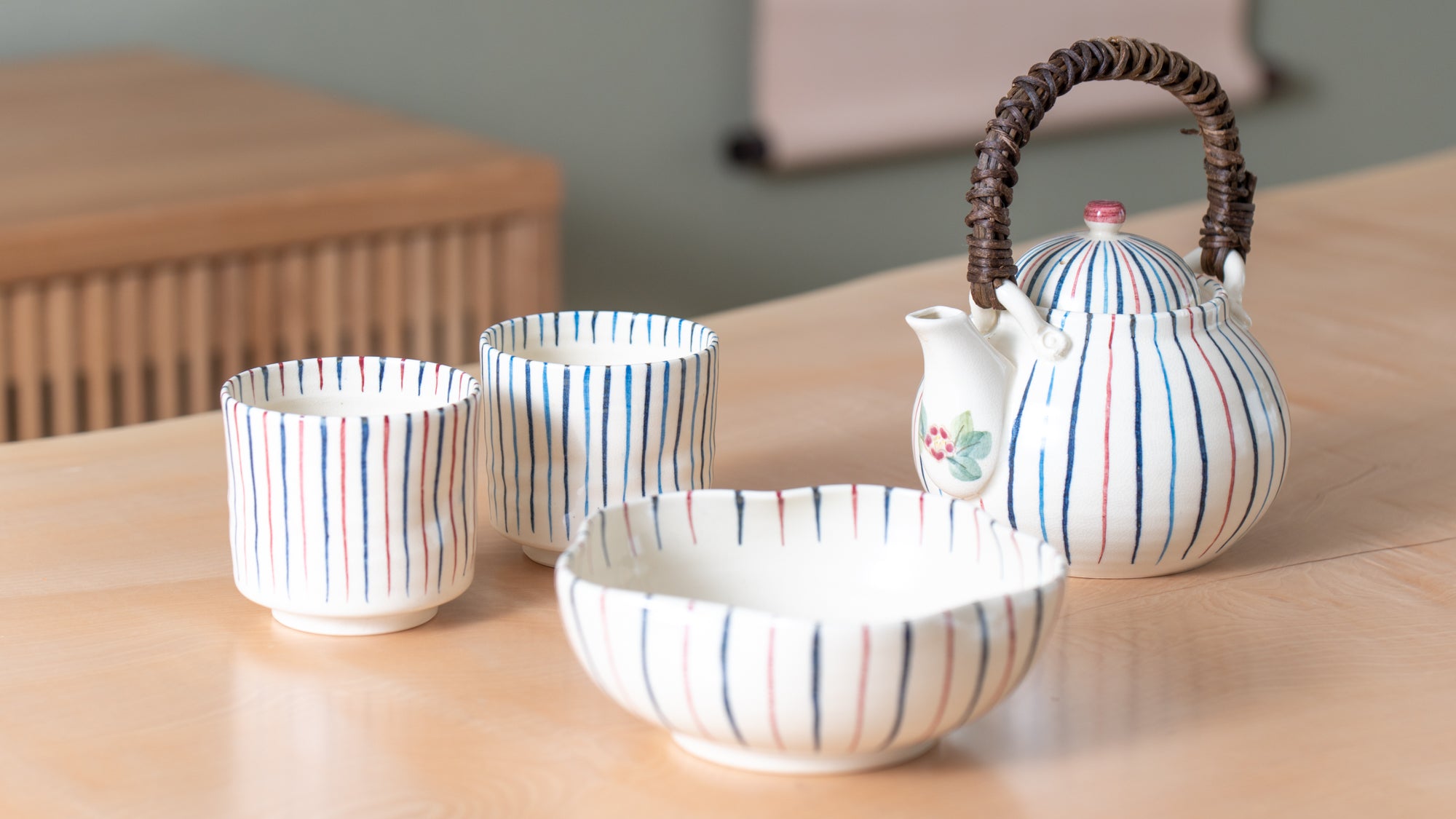
Origin & Other Makers
Related posts
Filters


